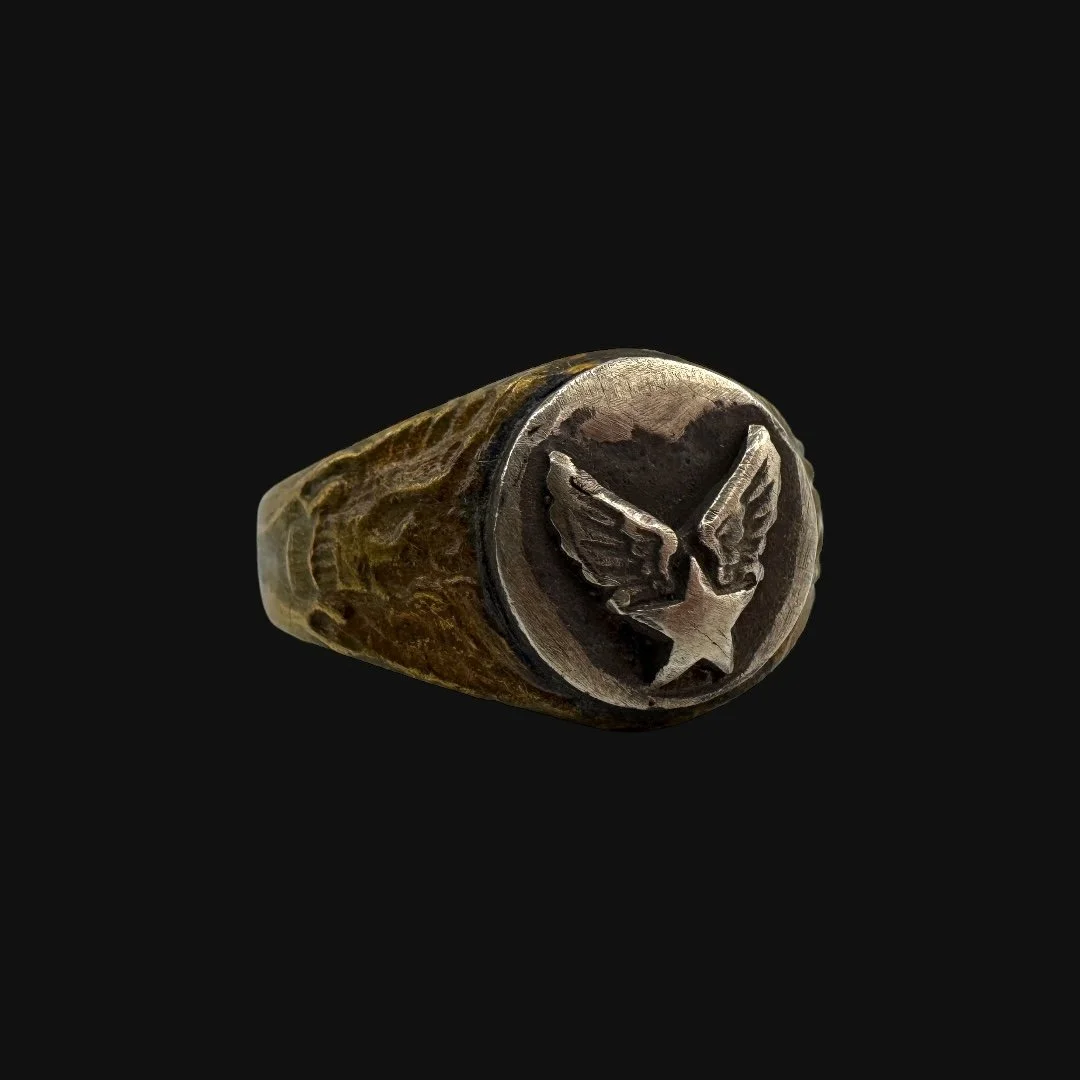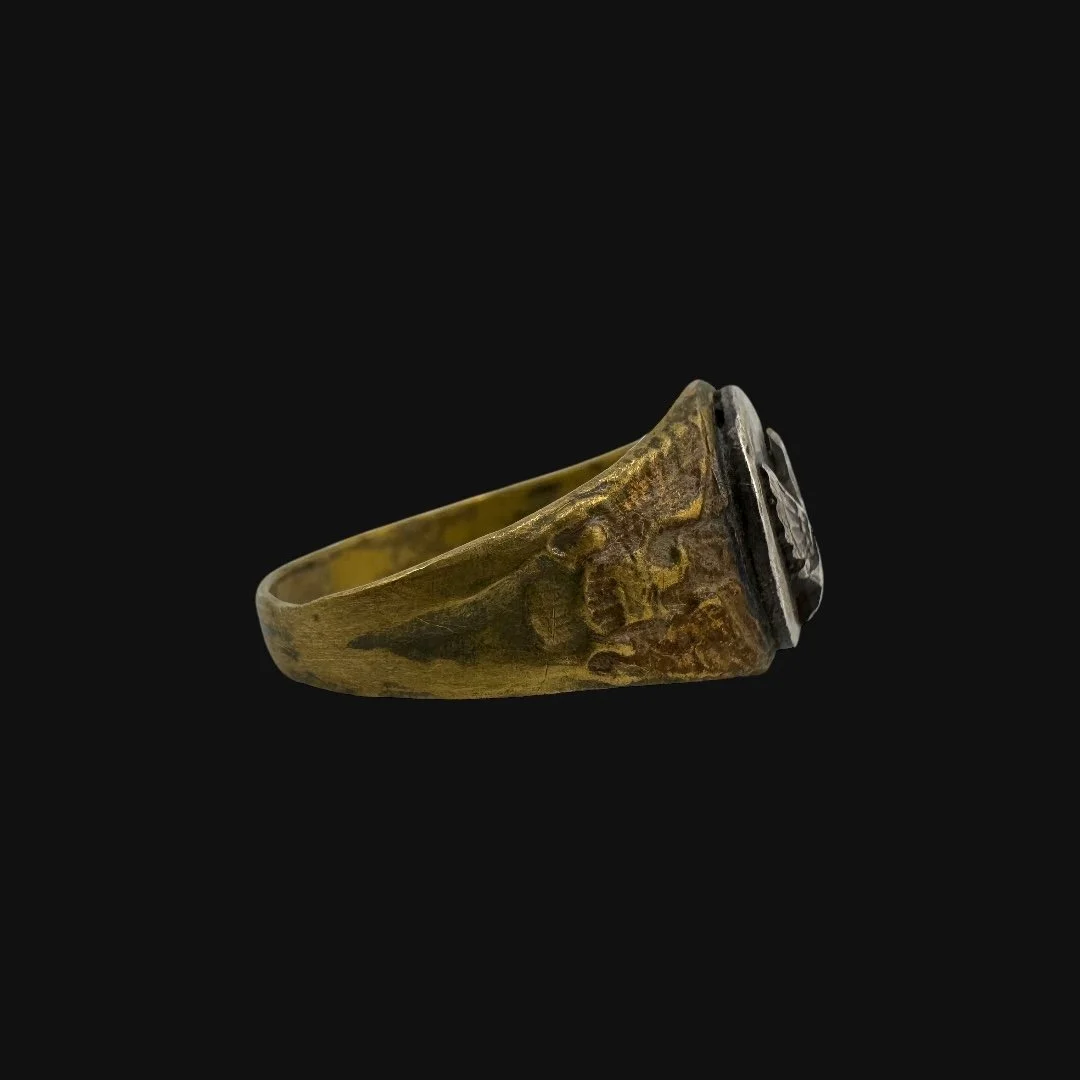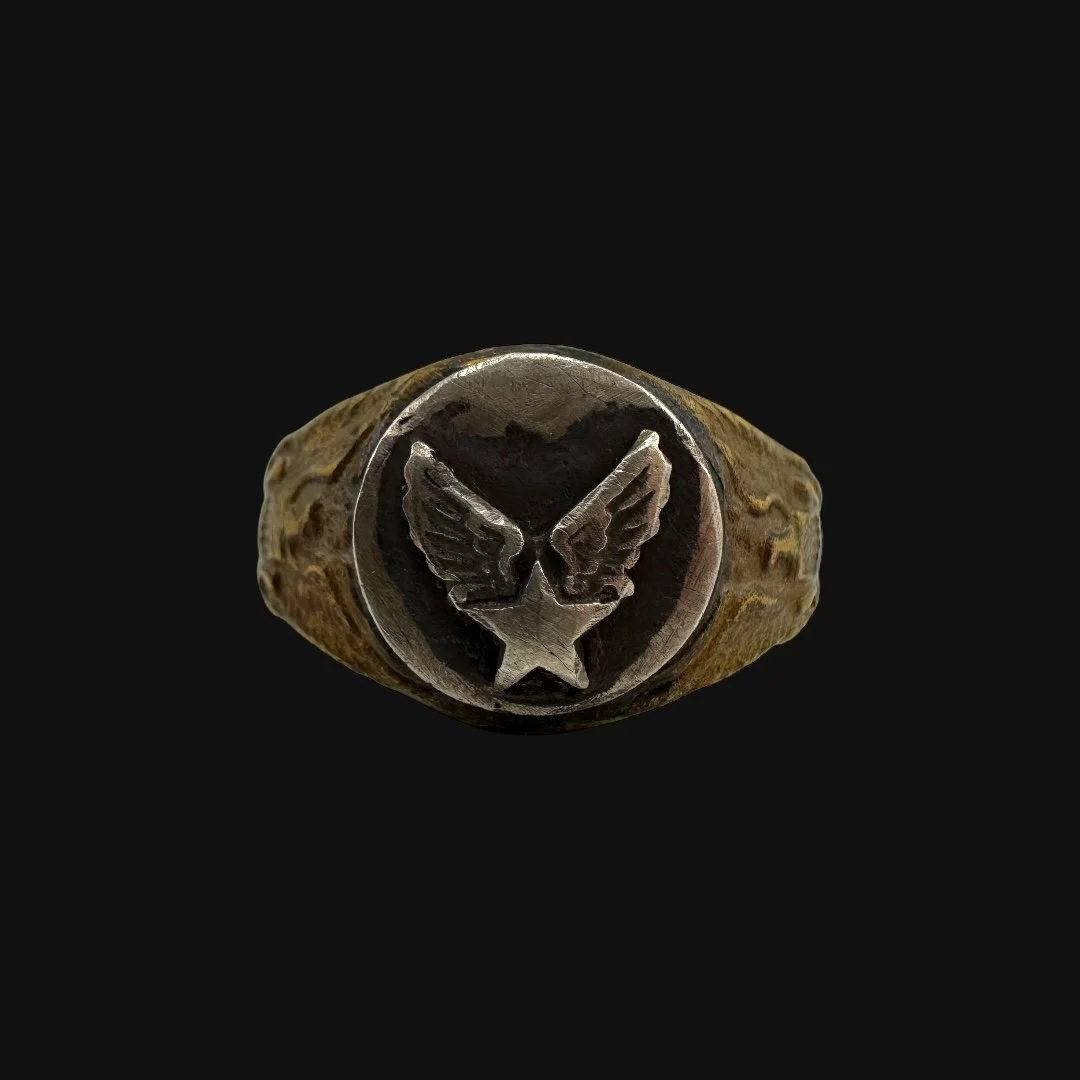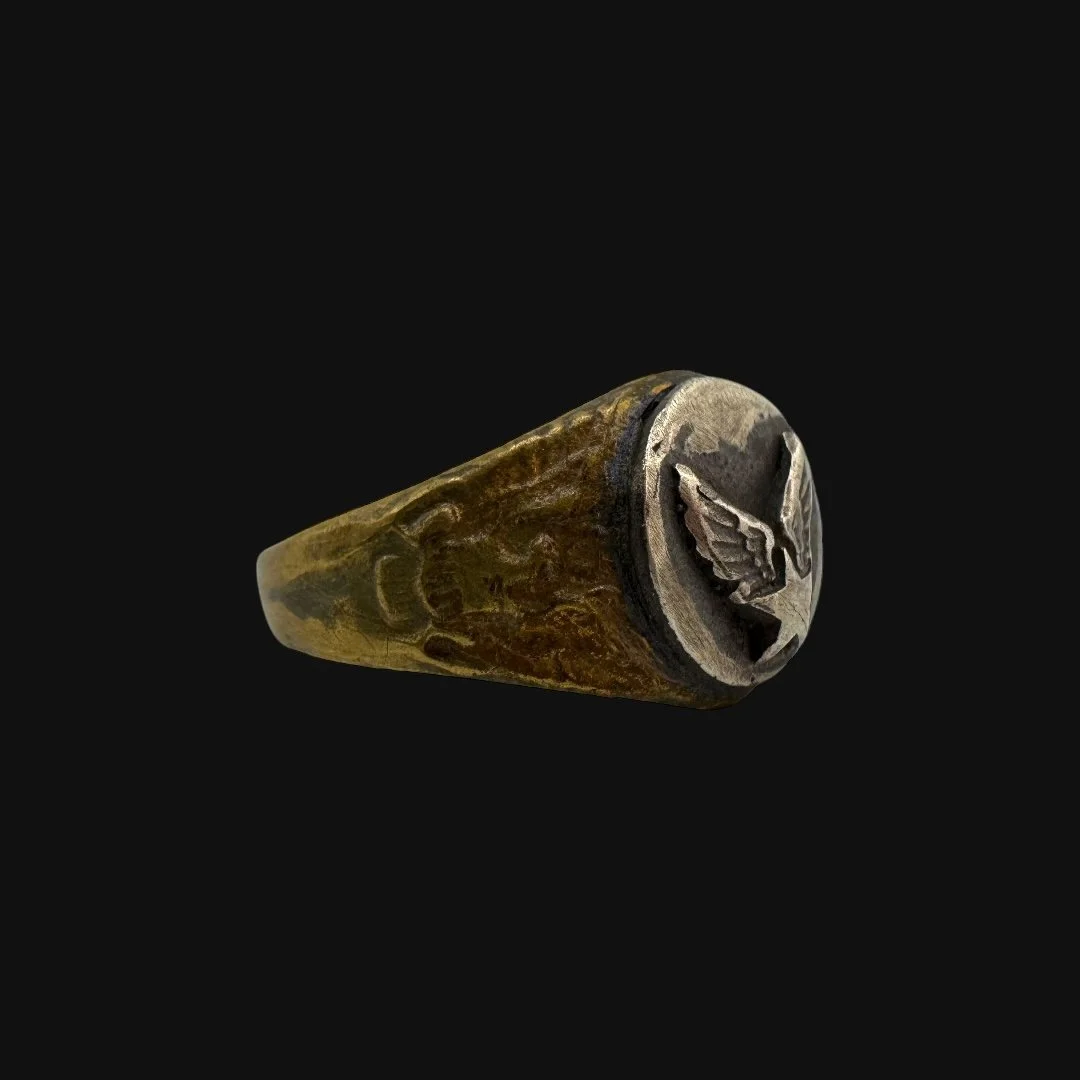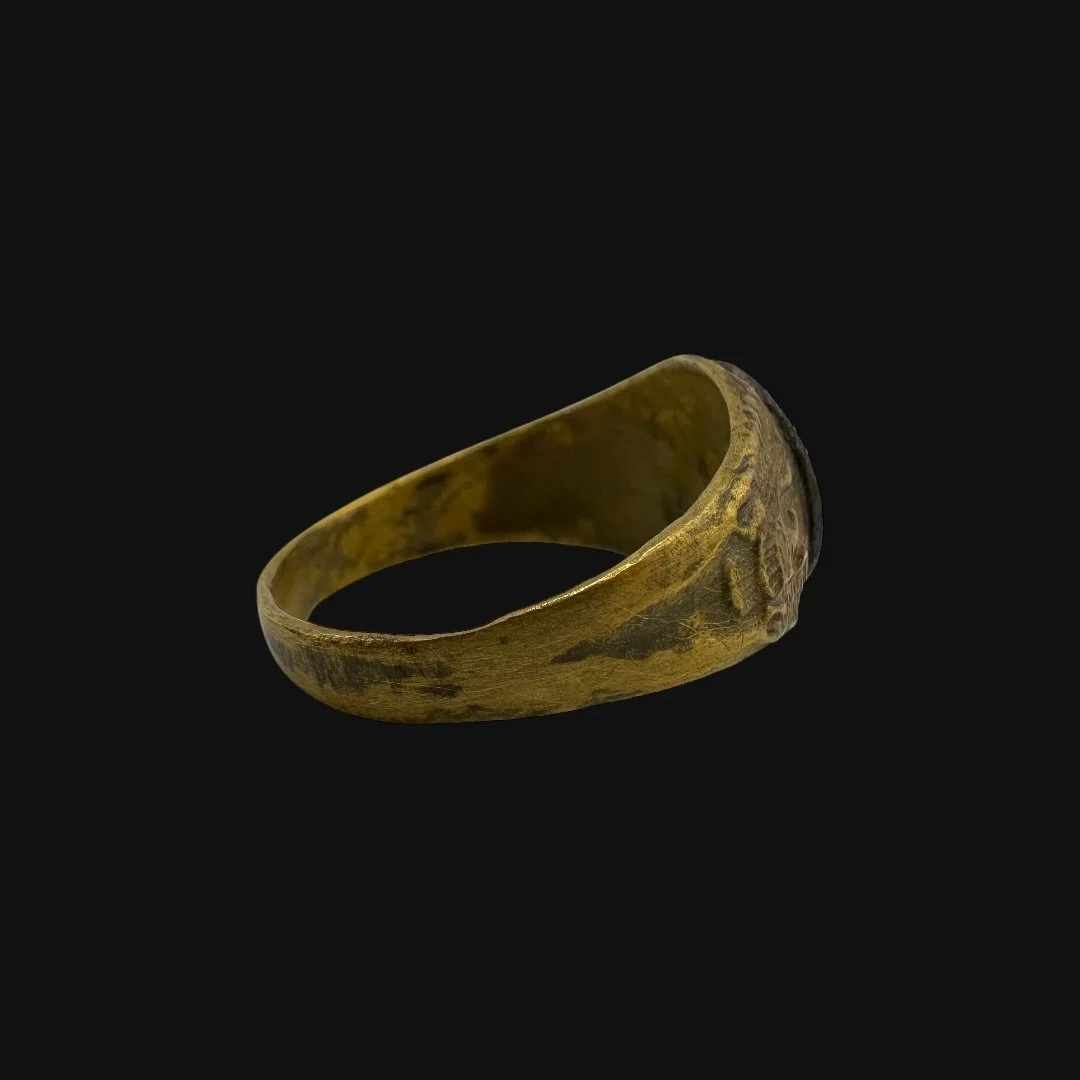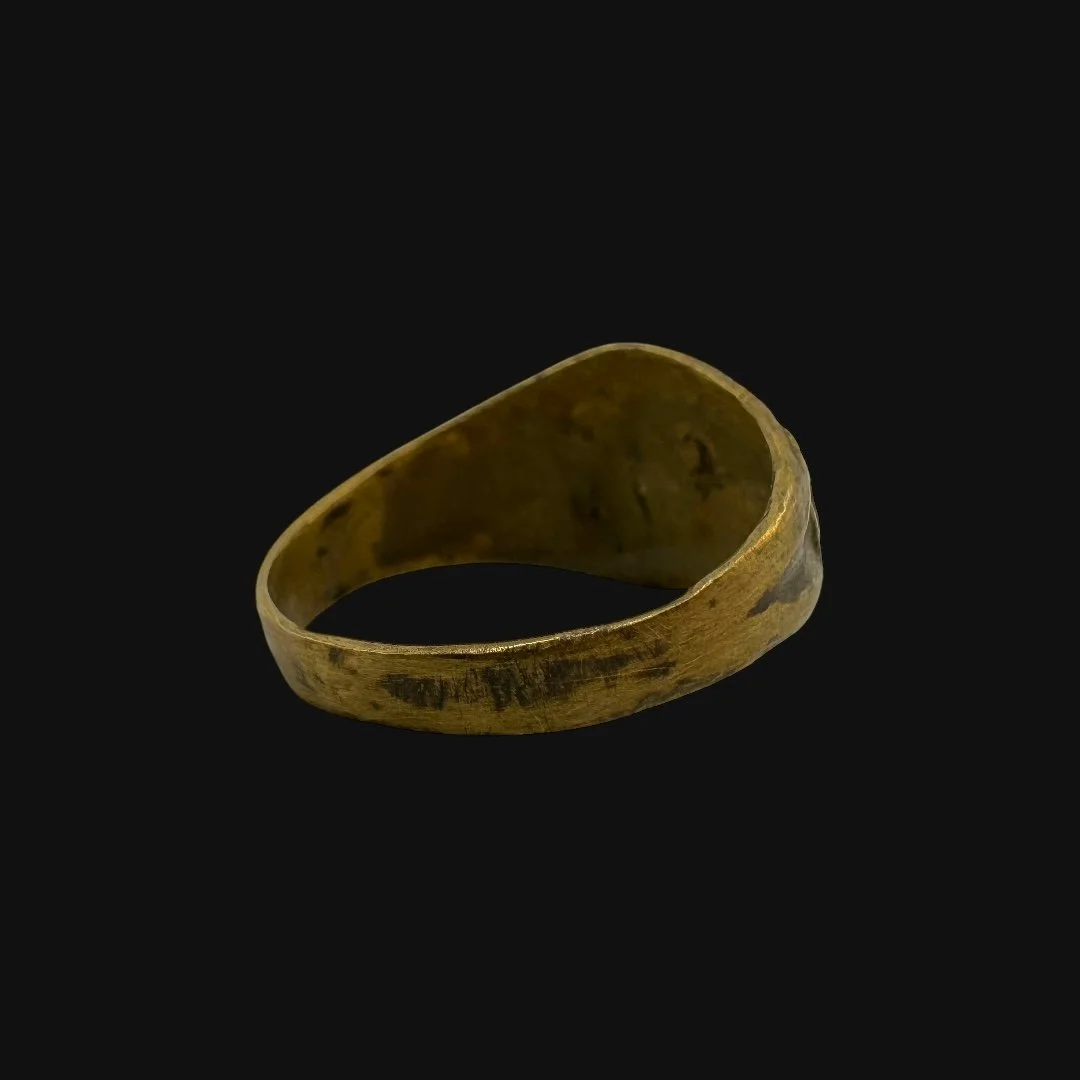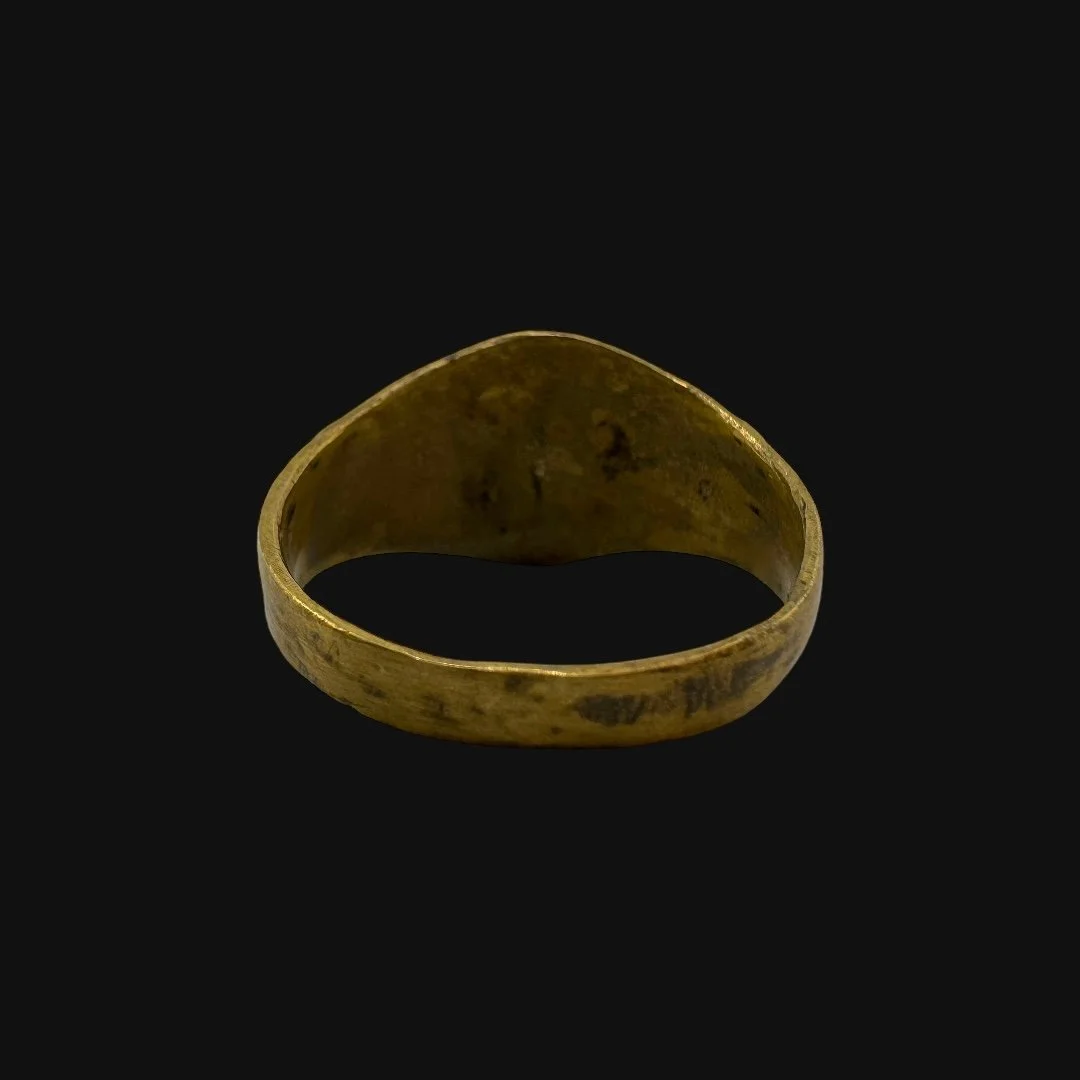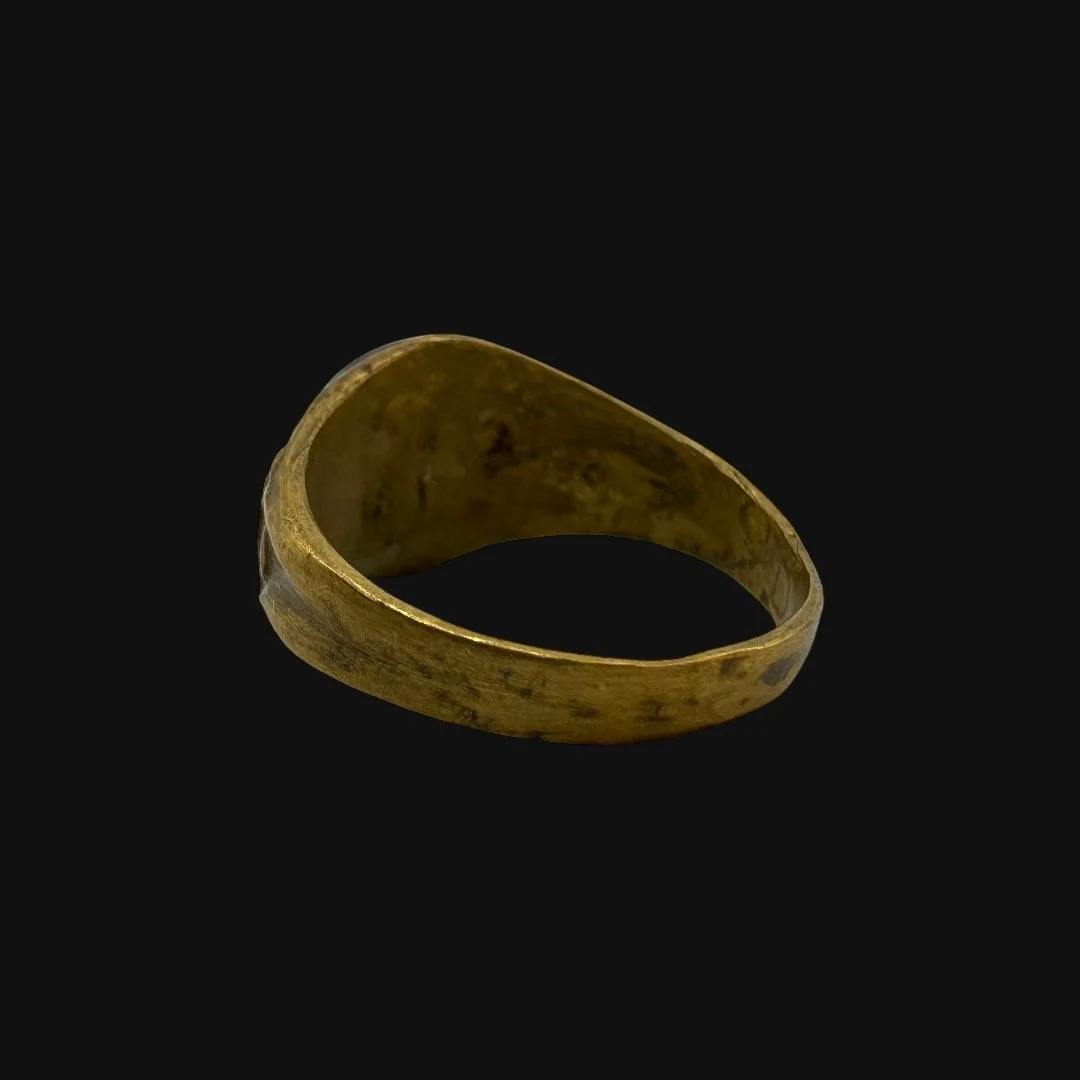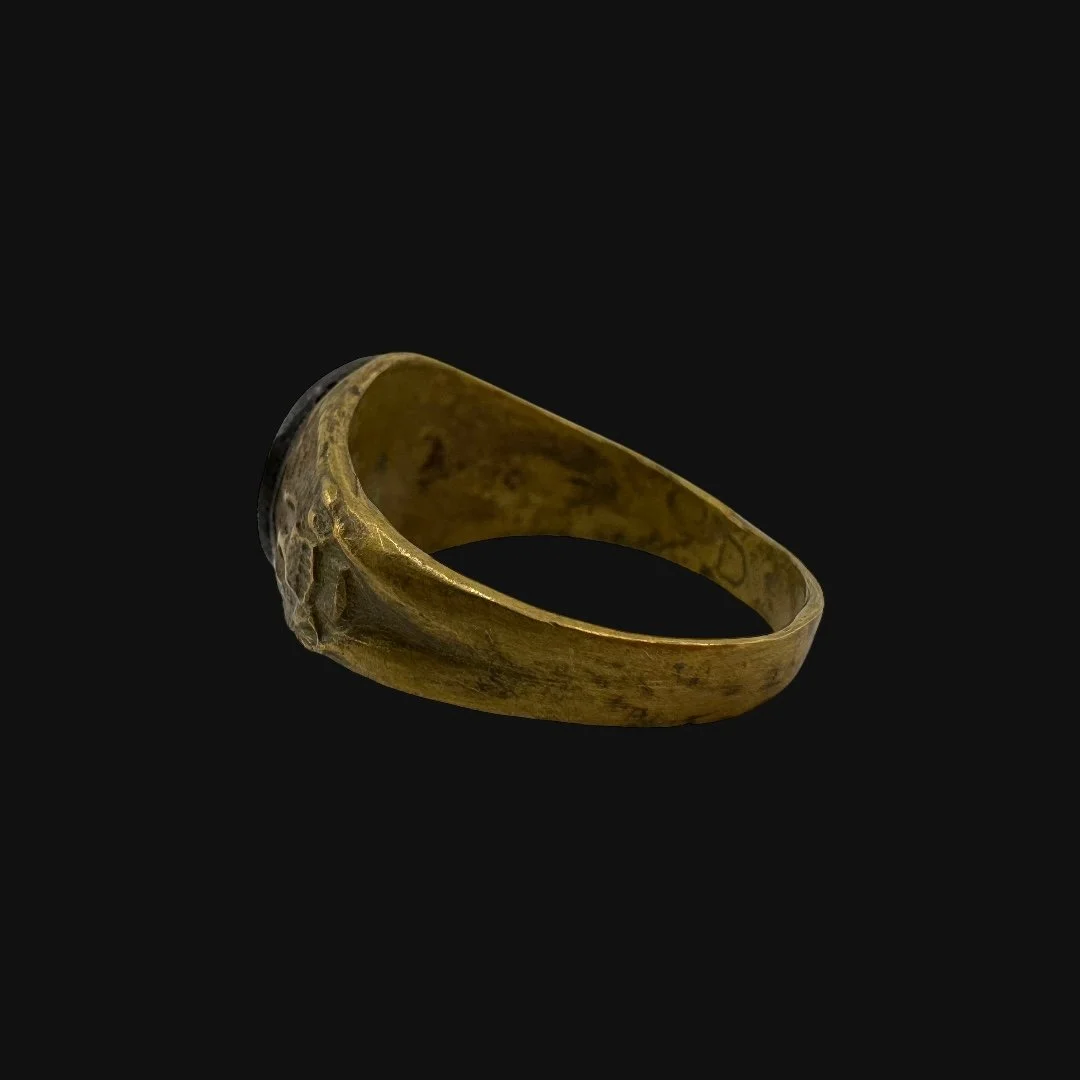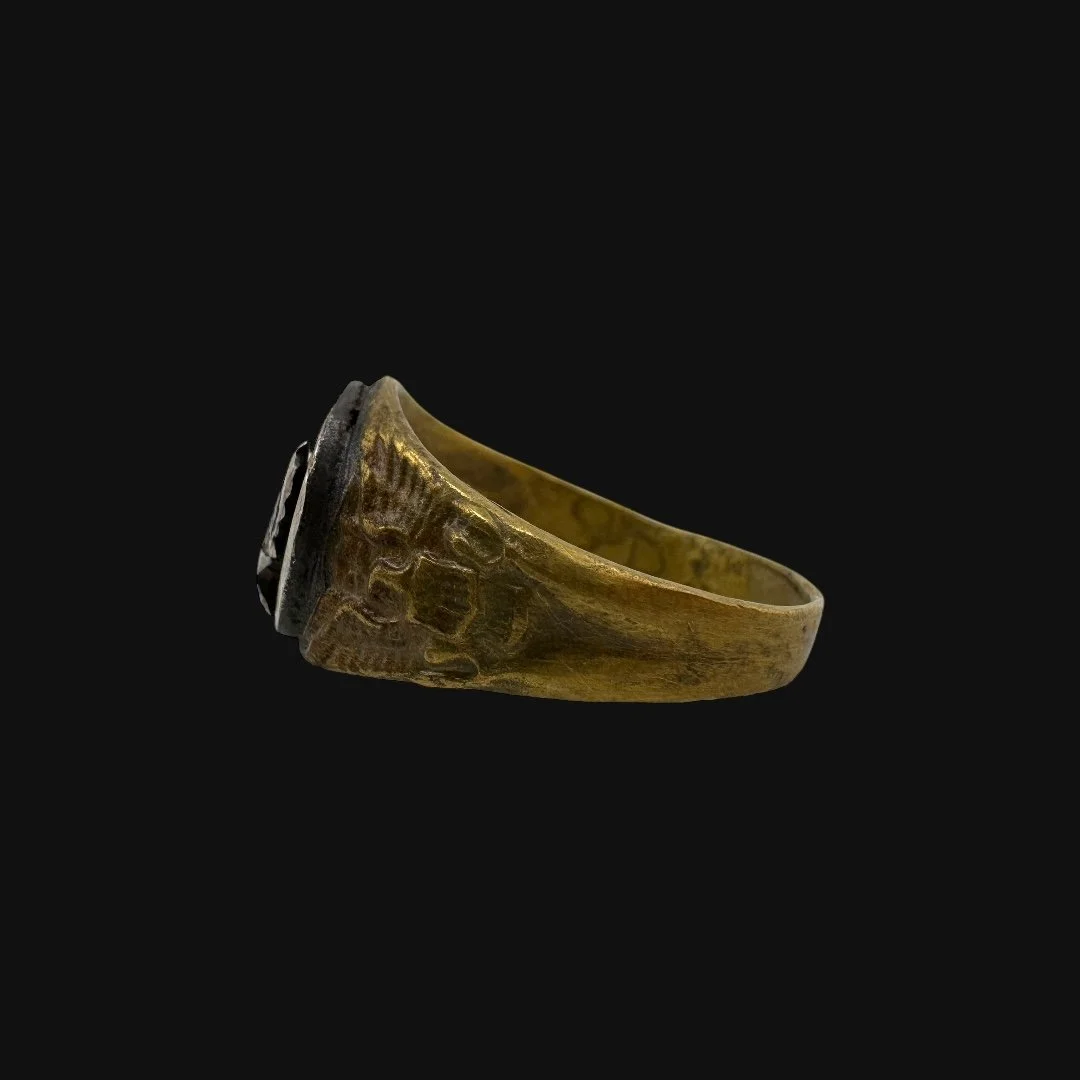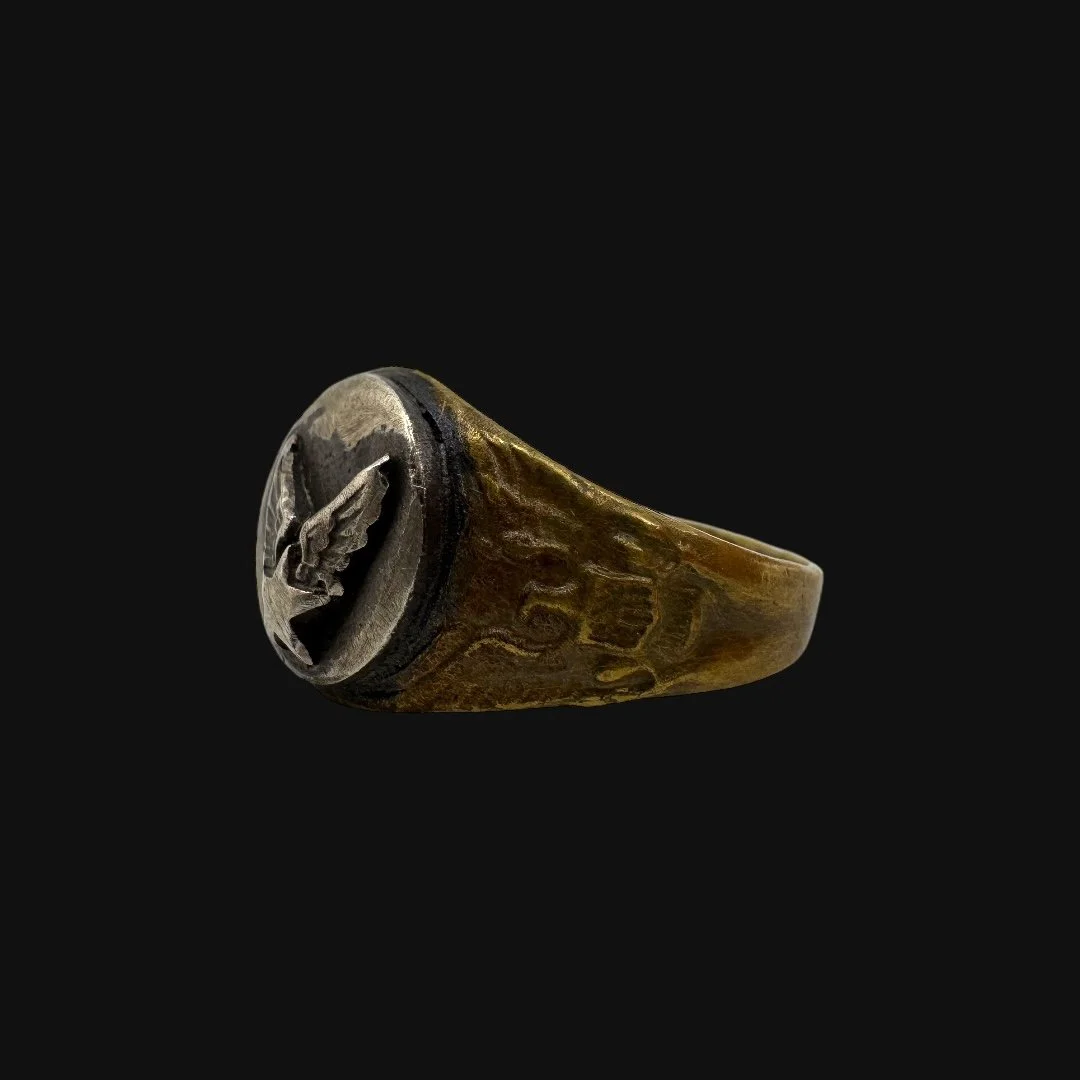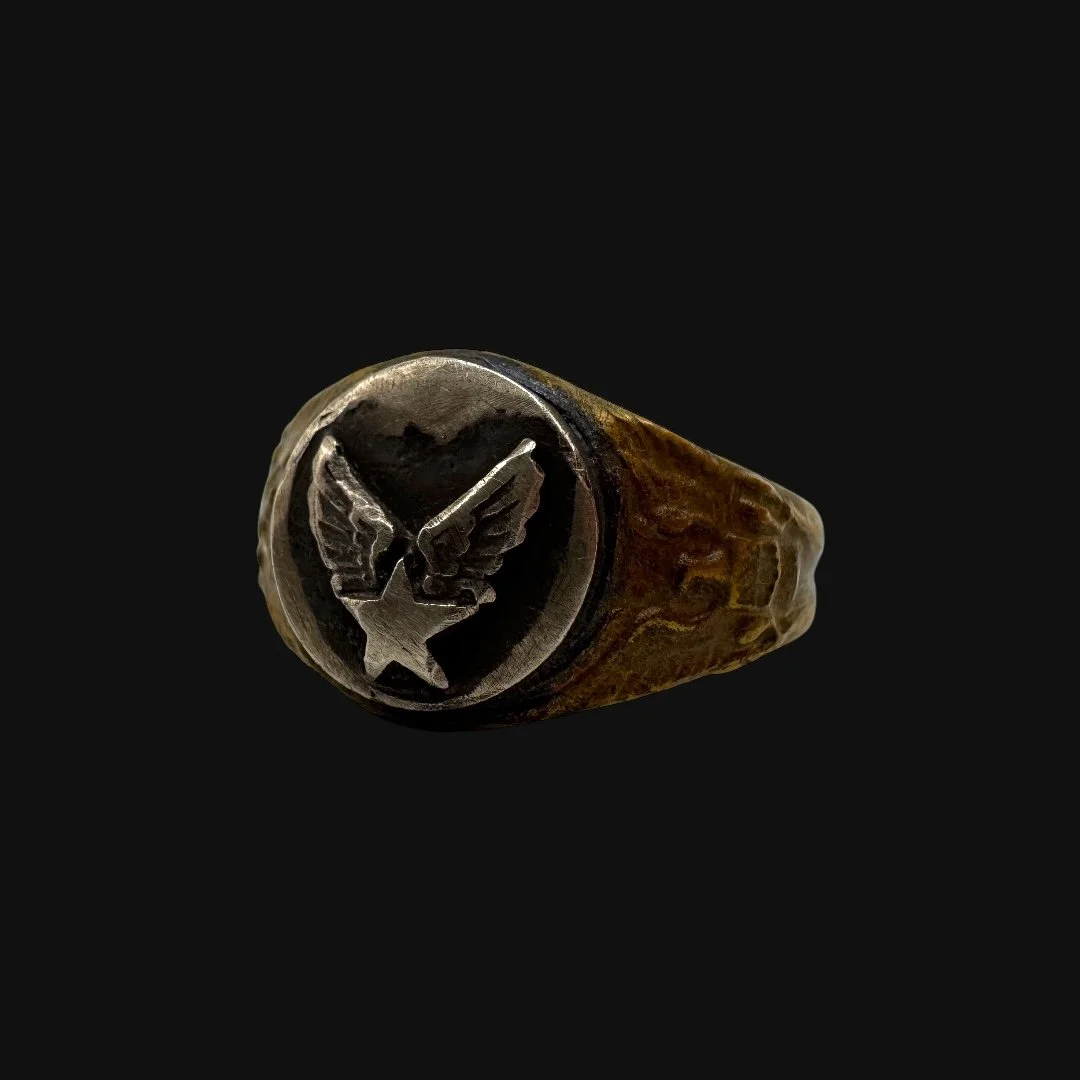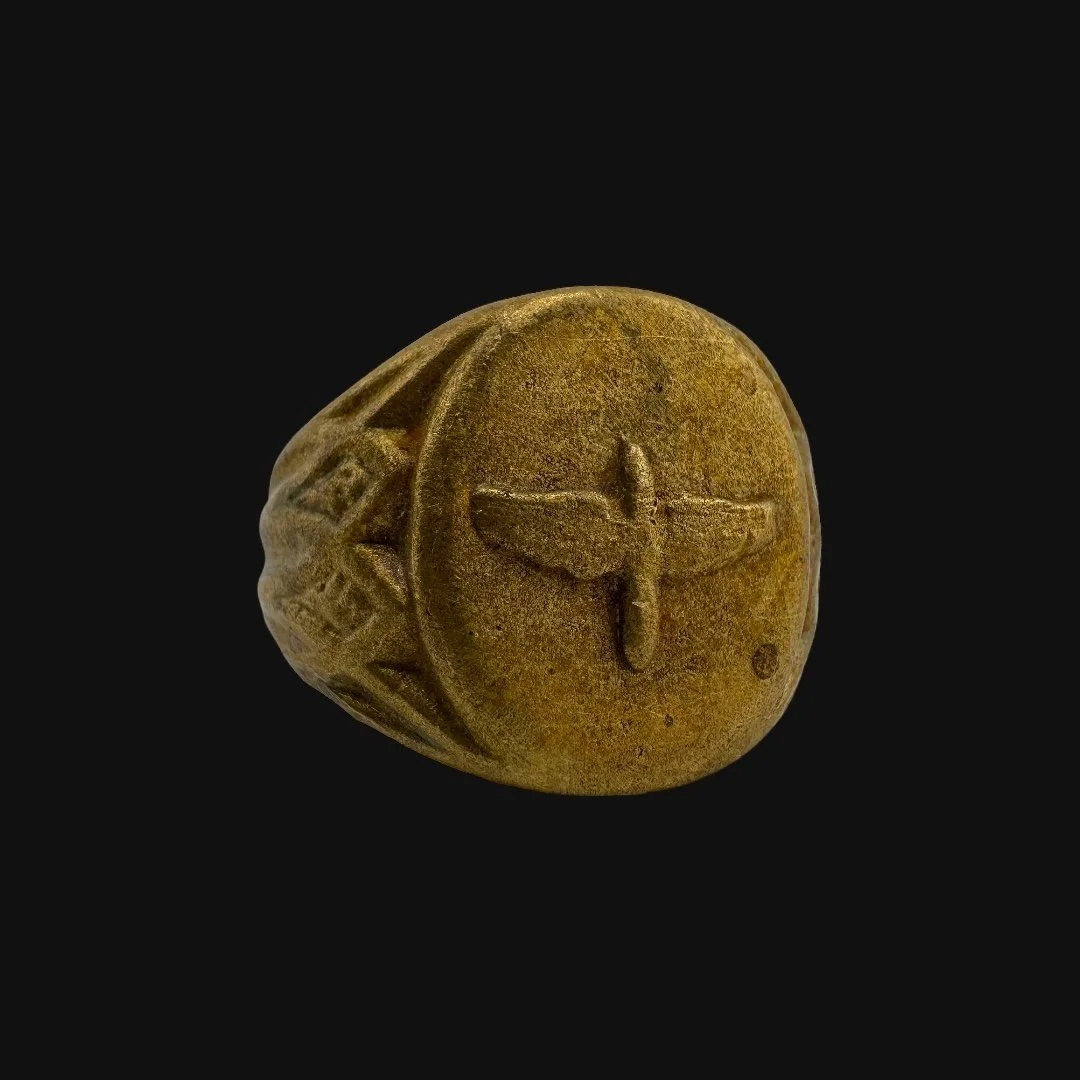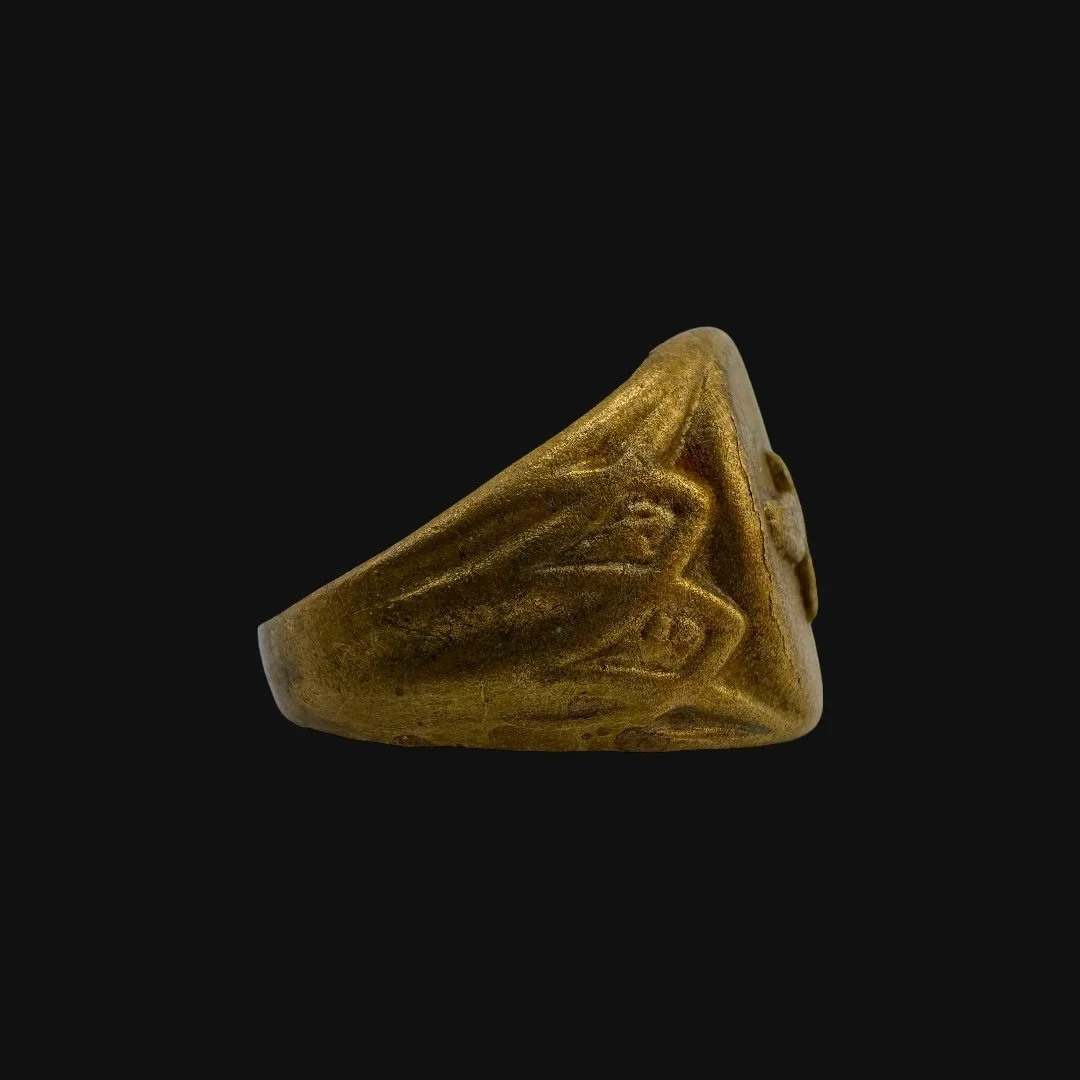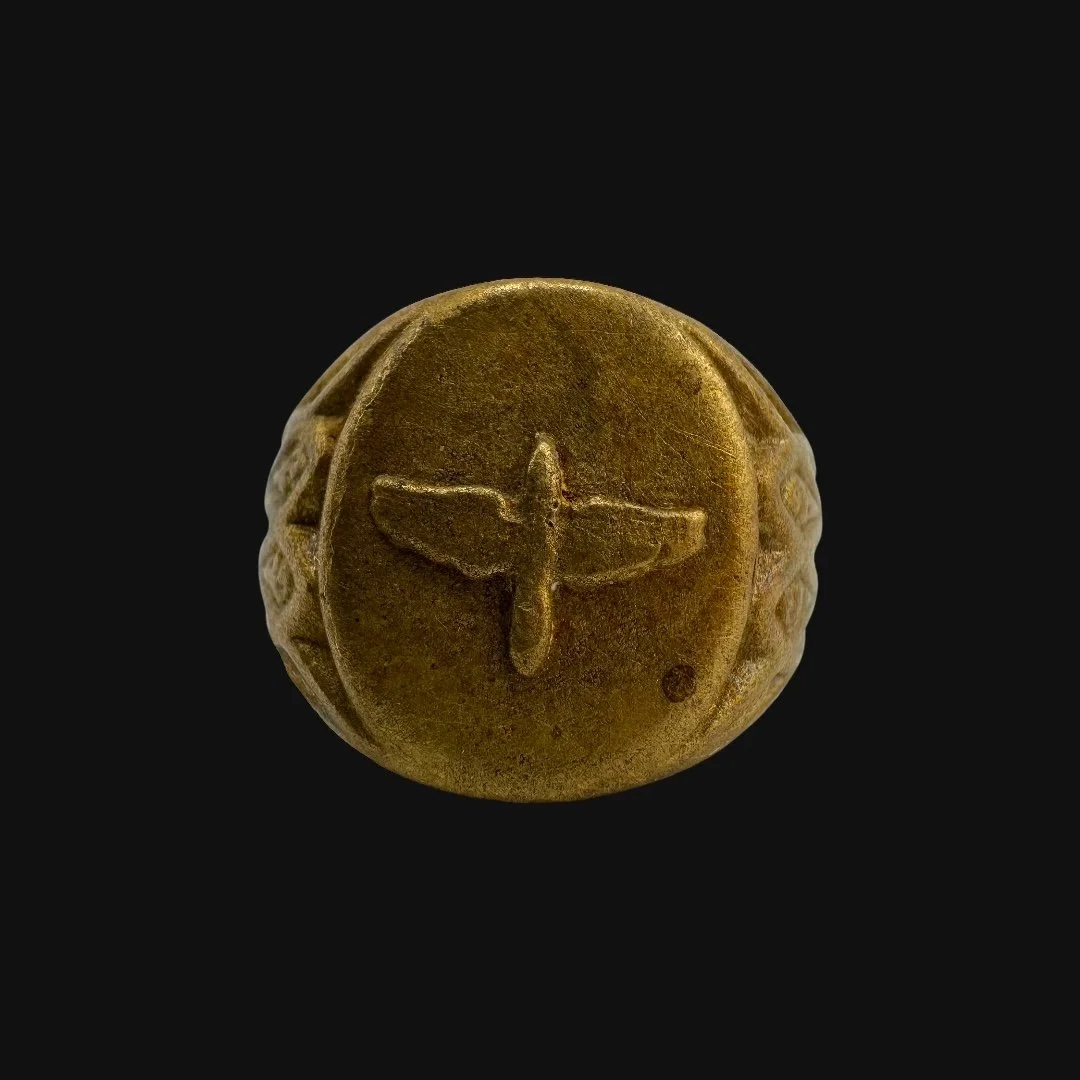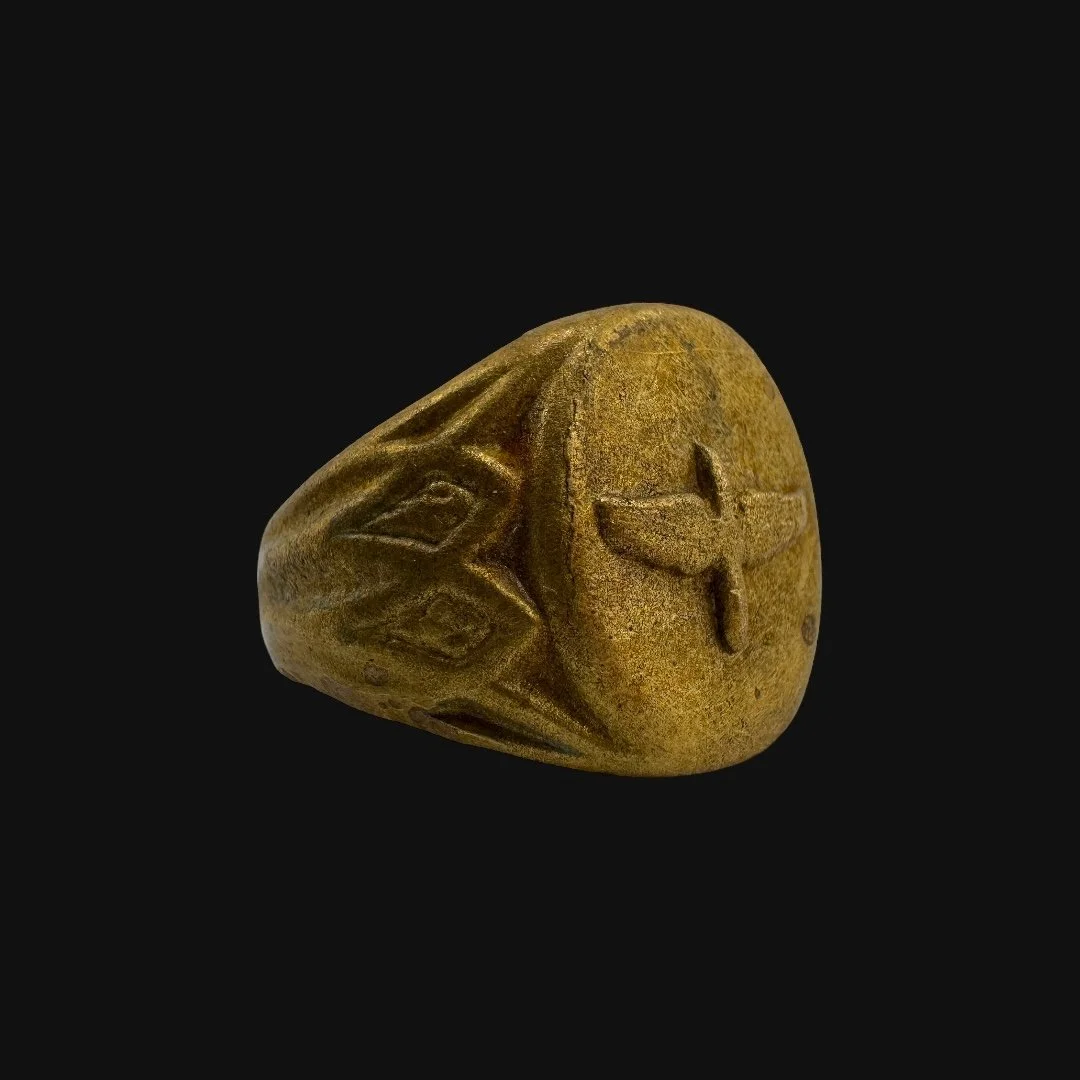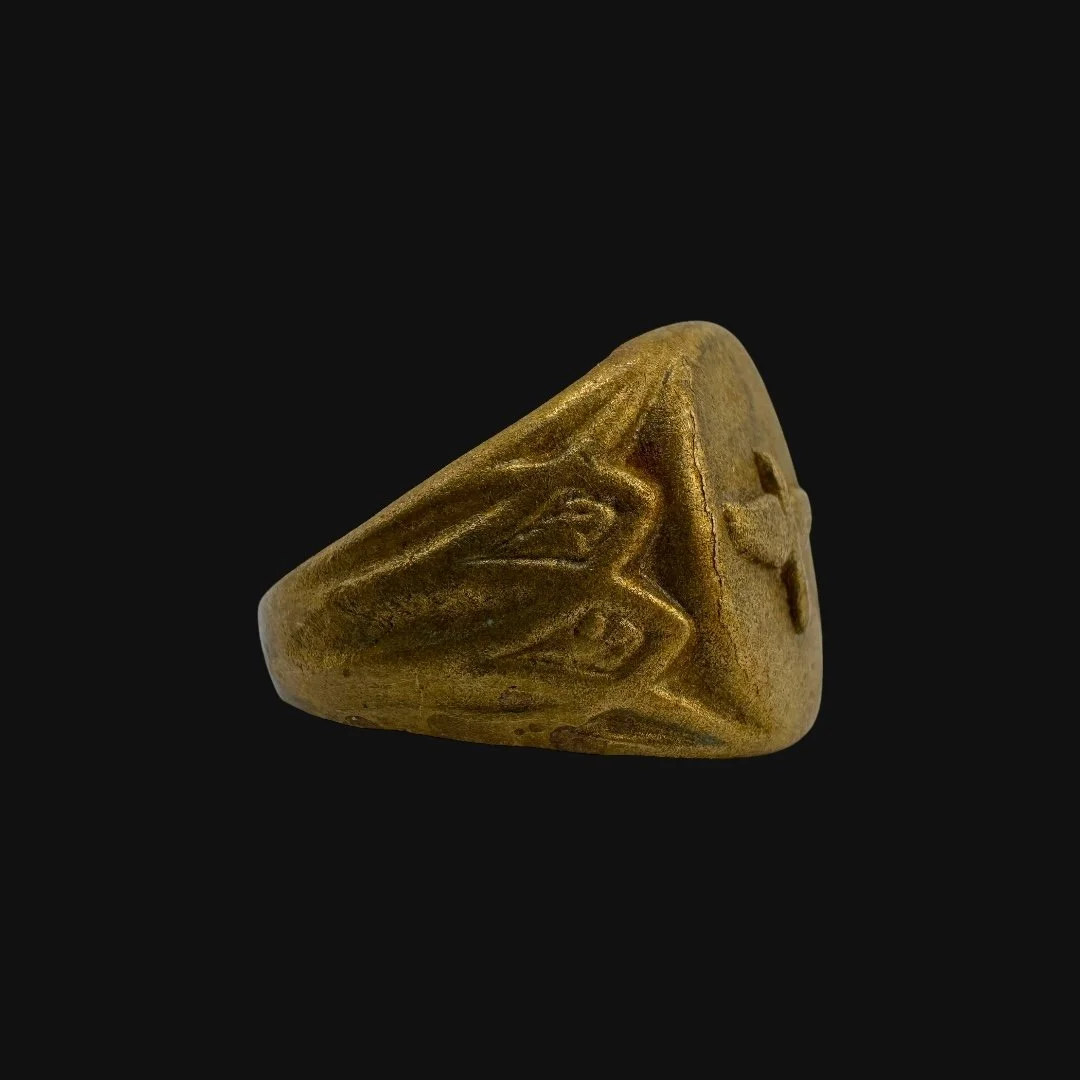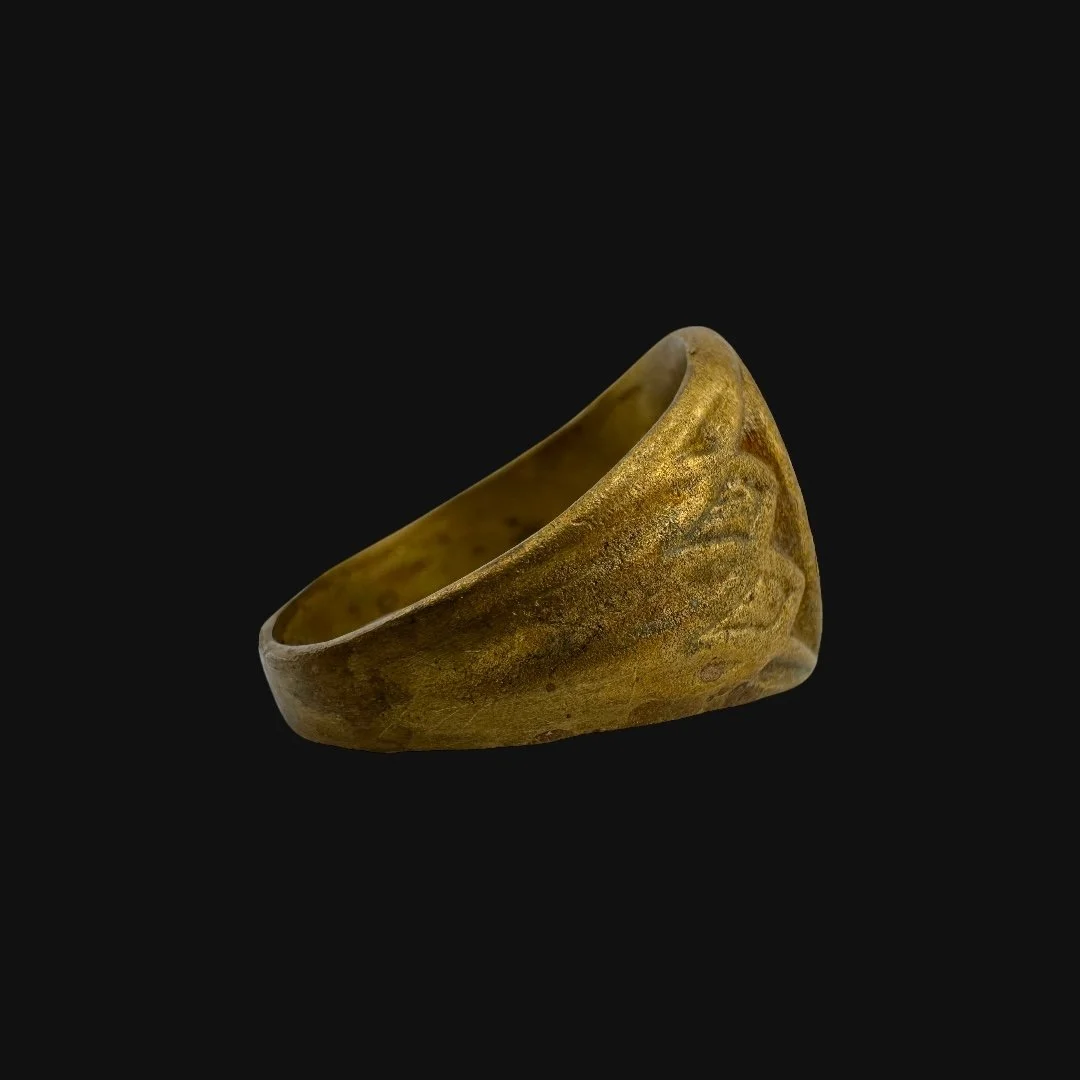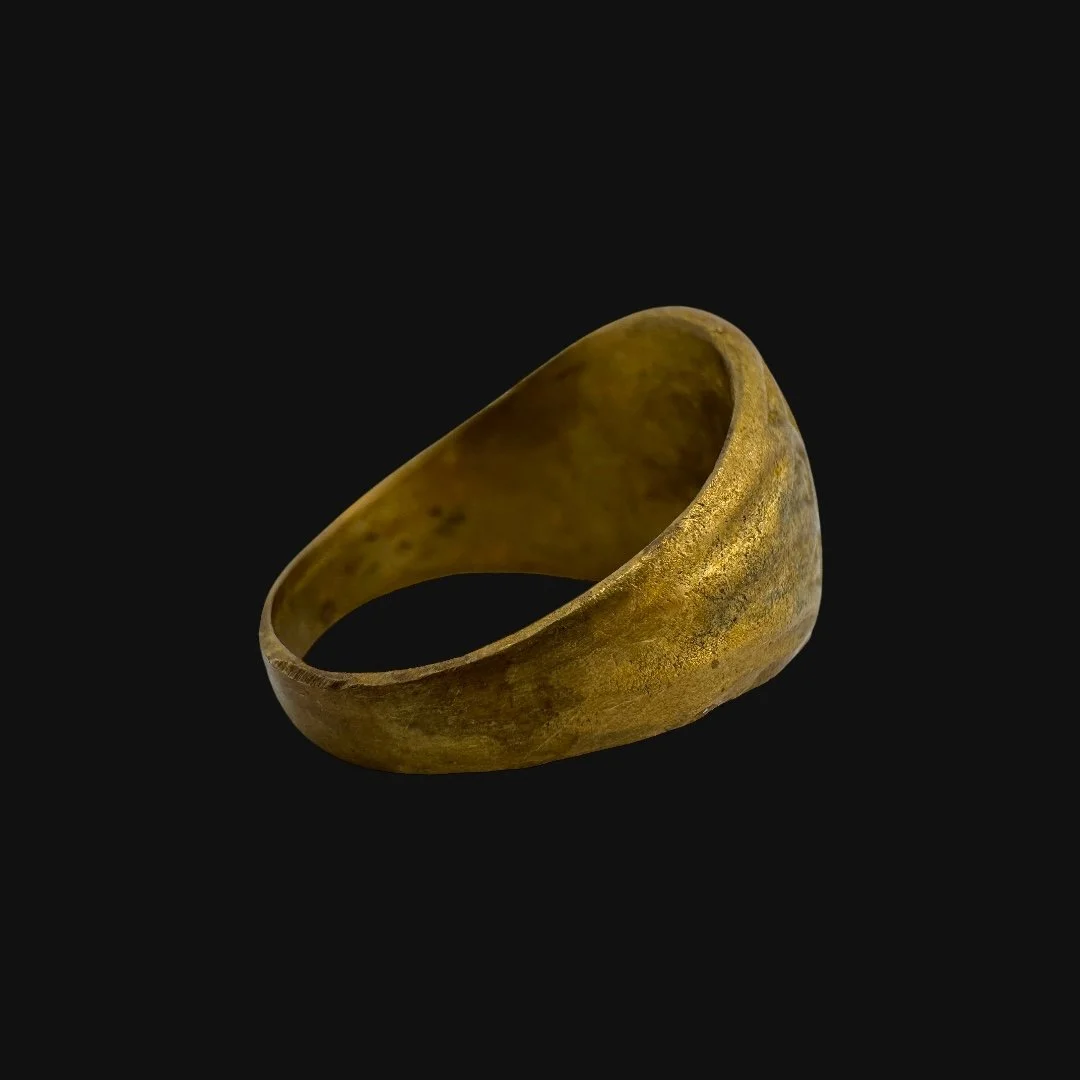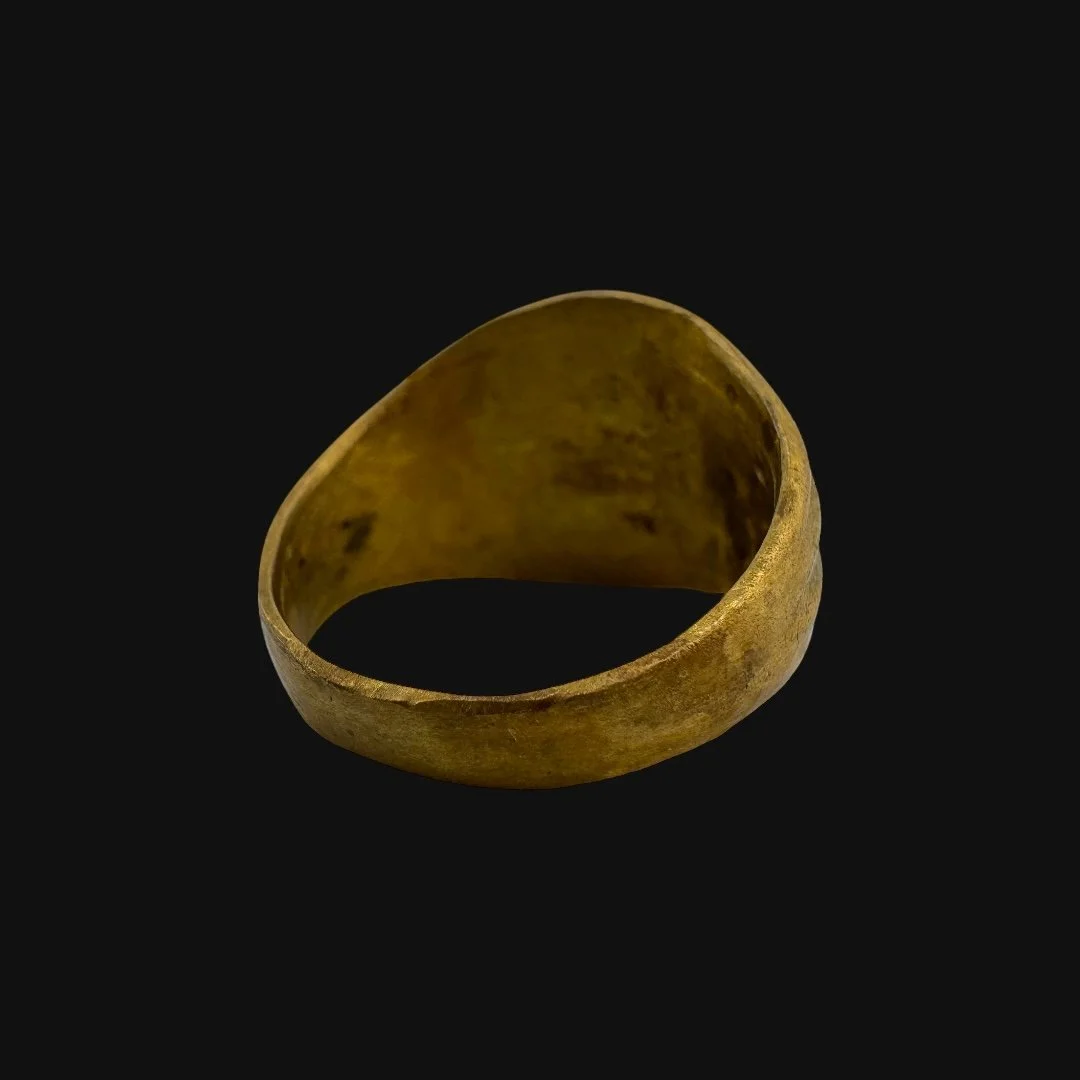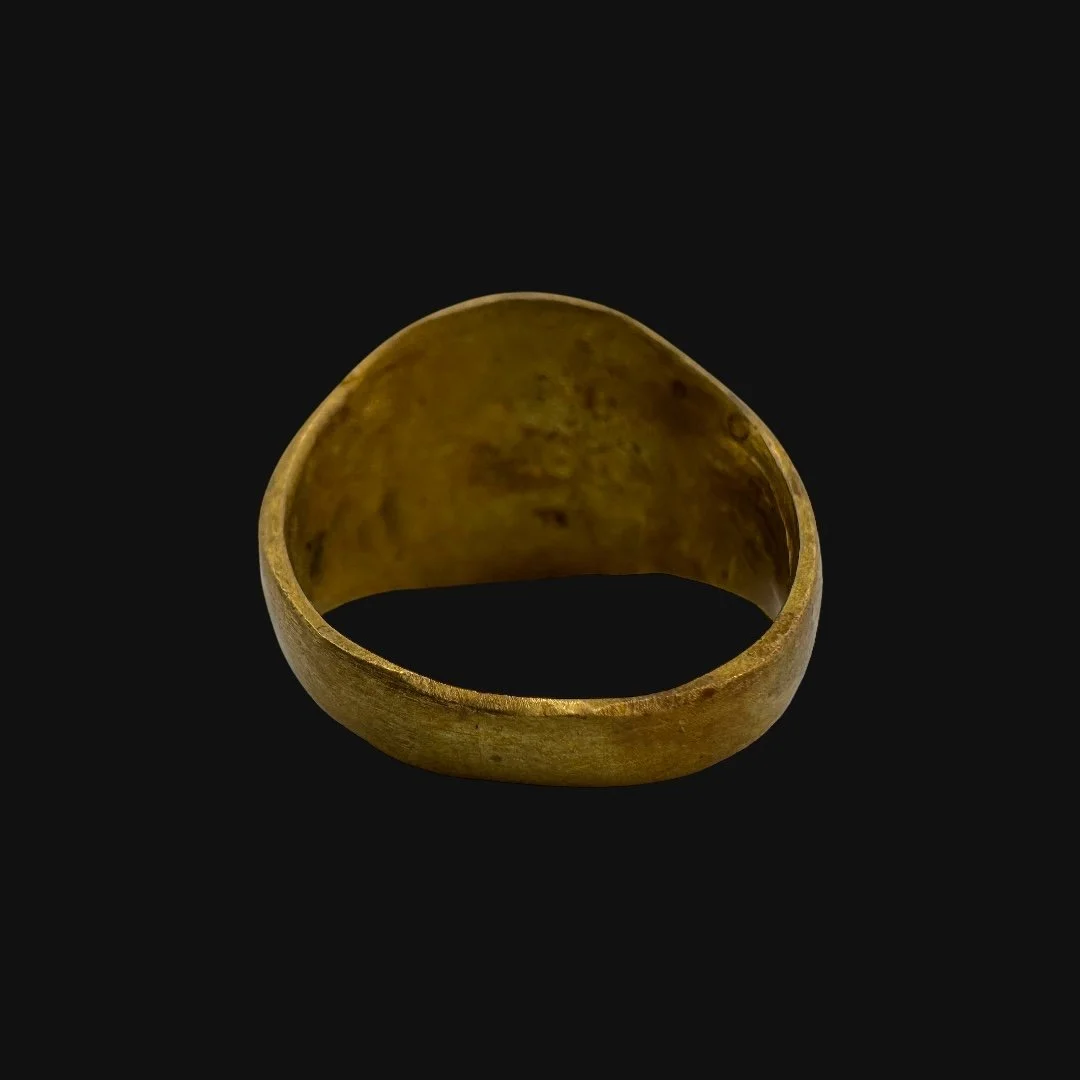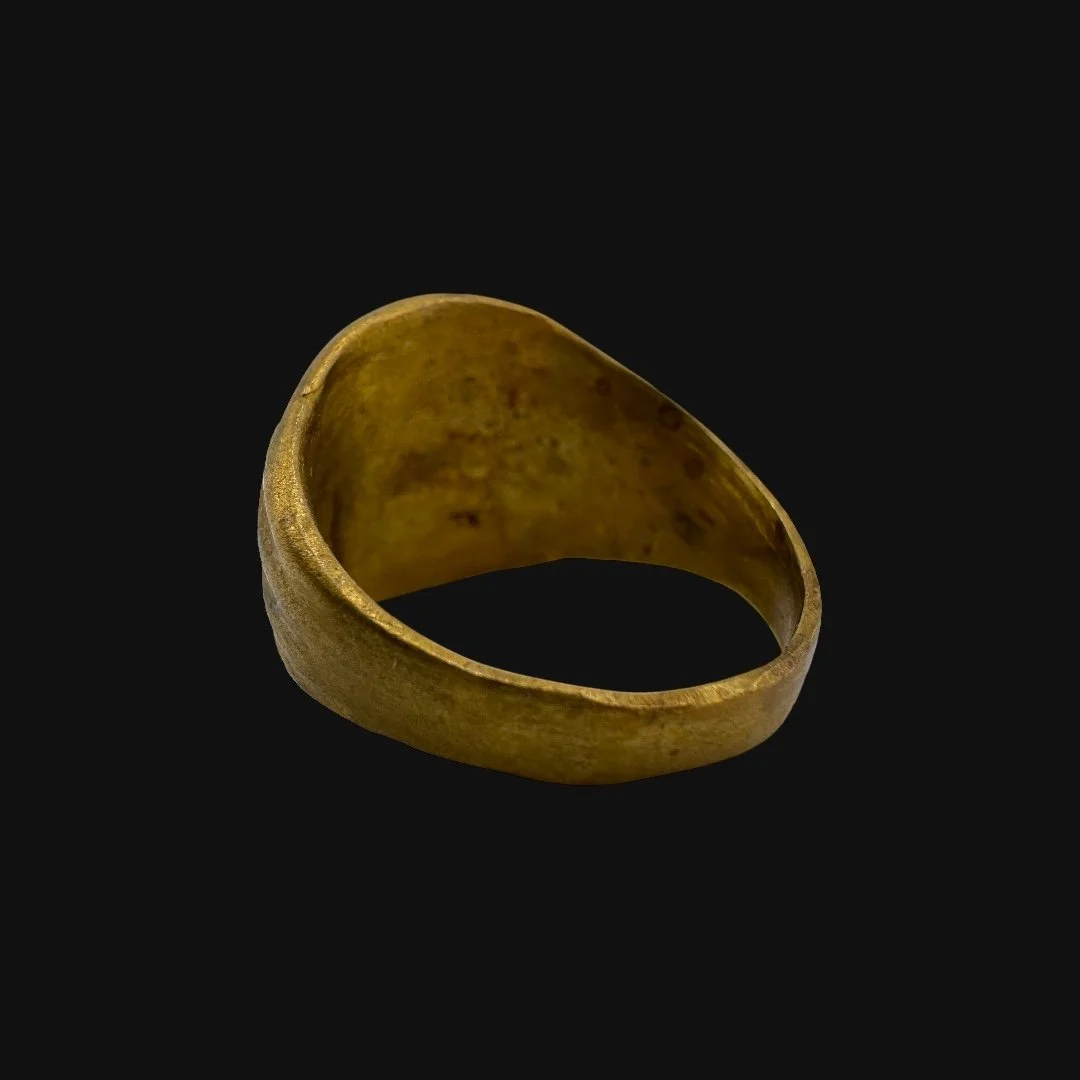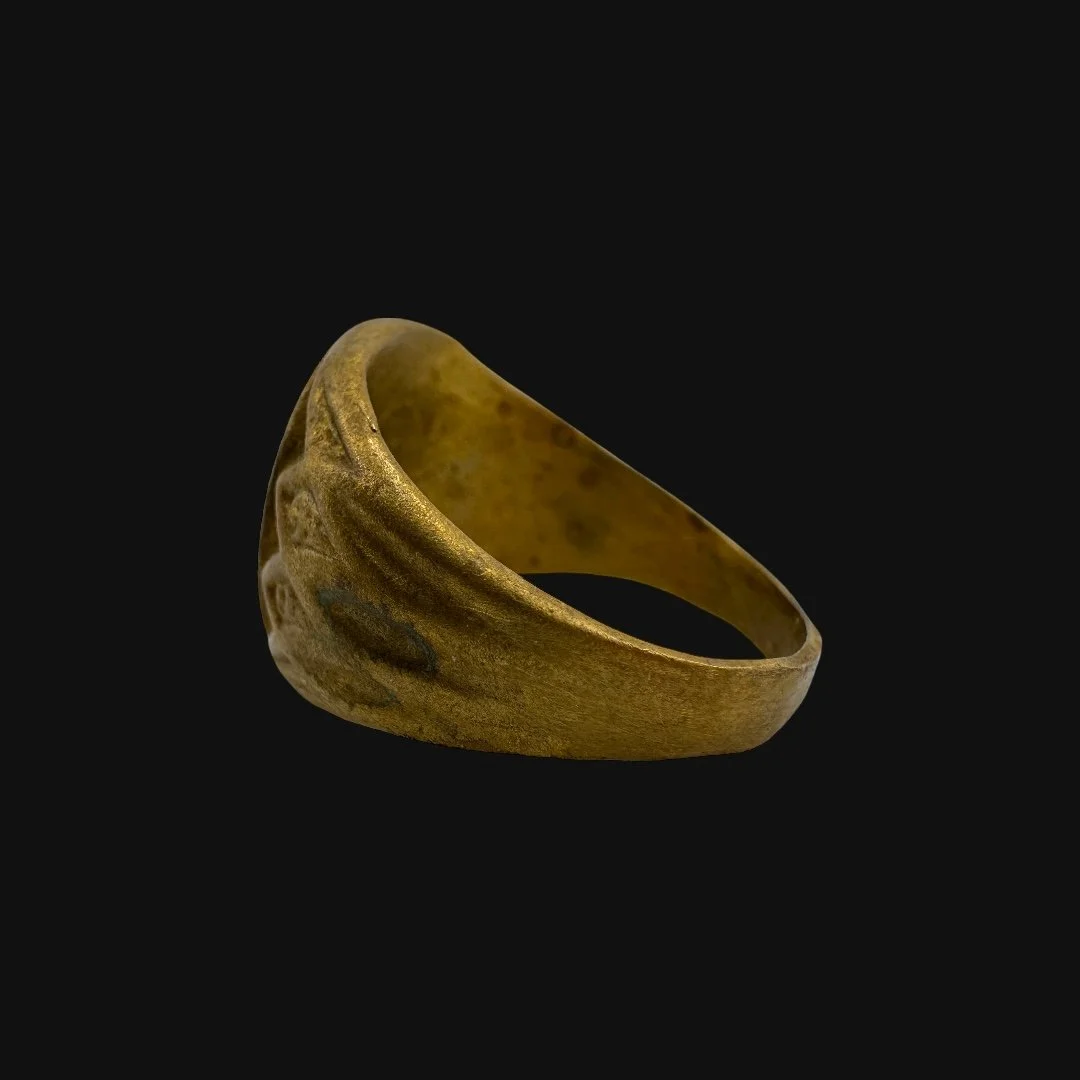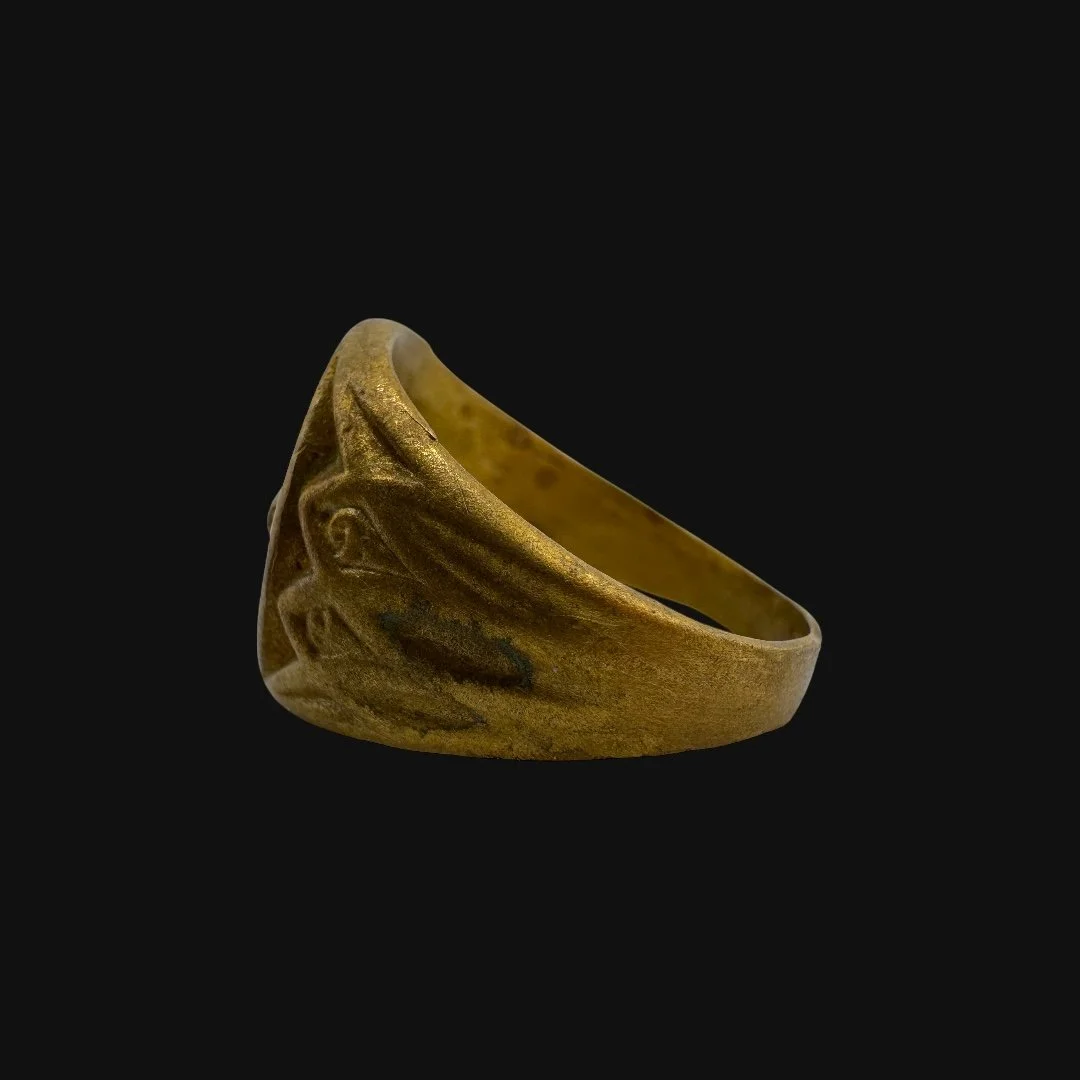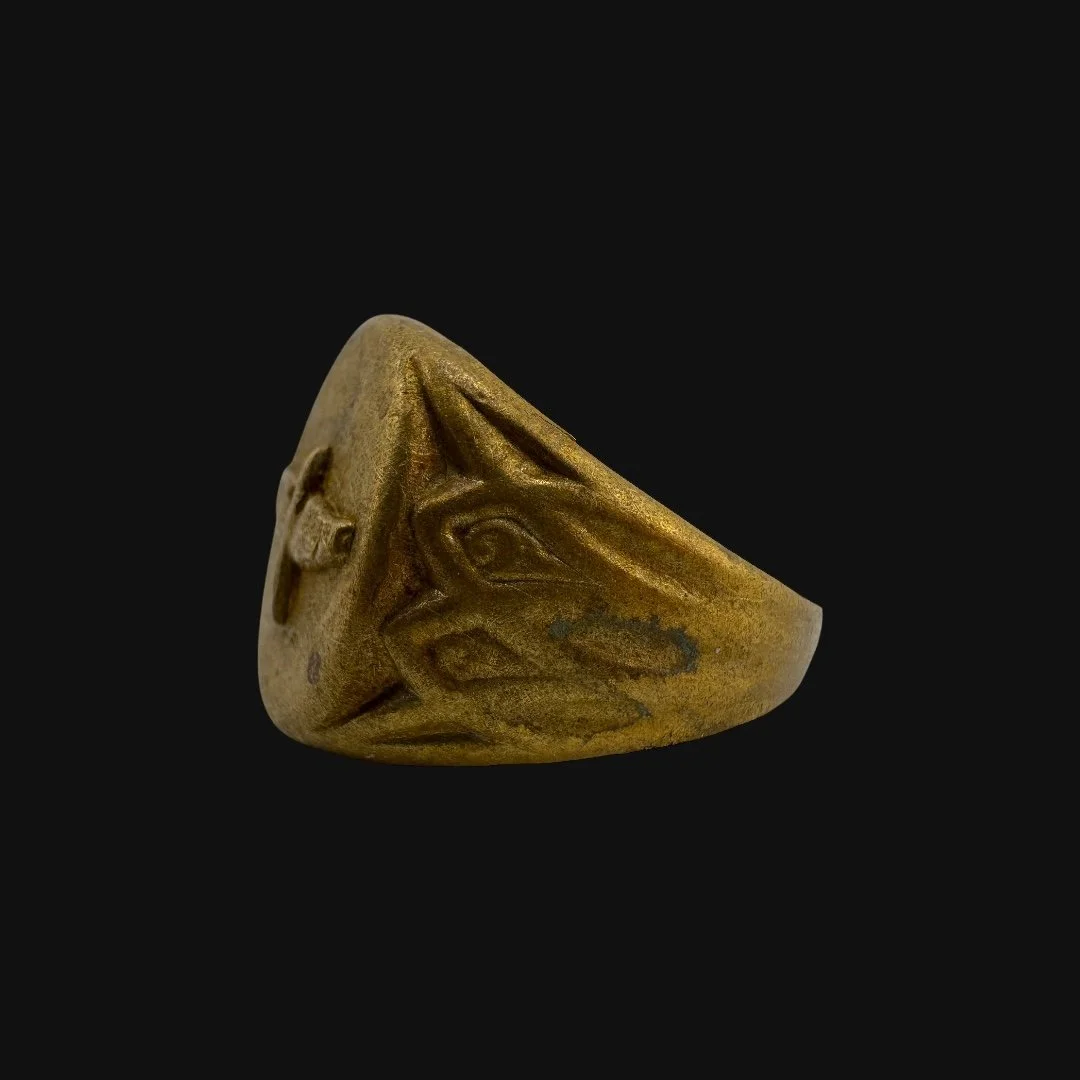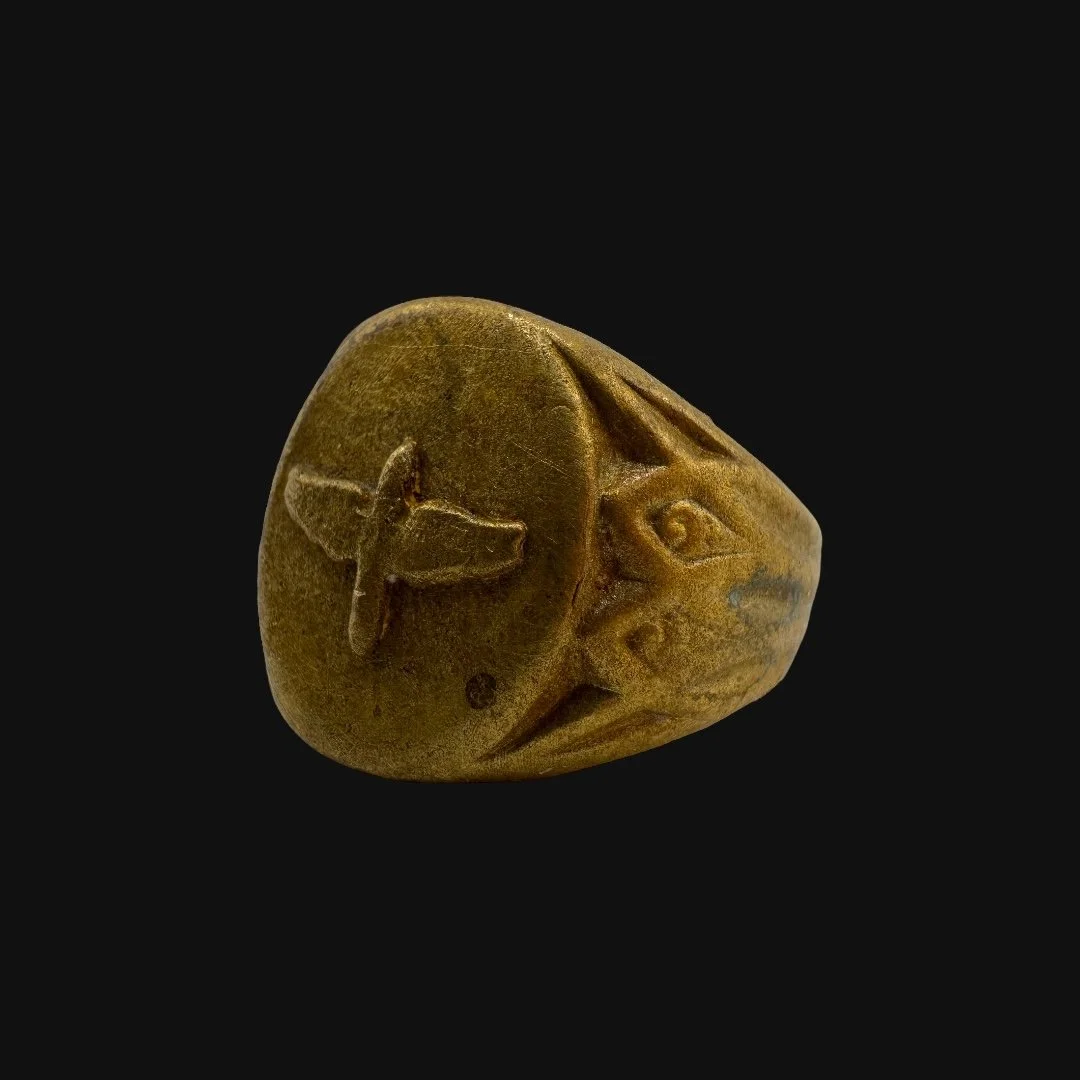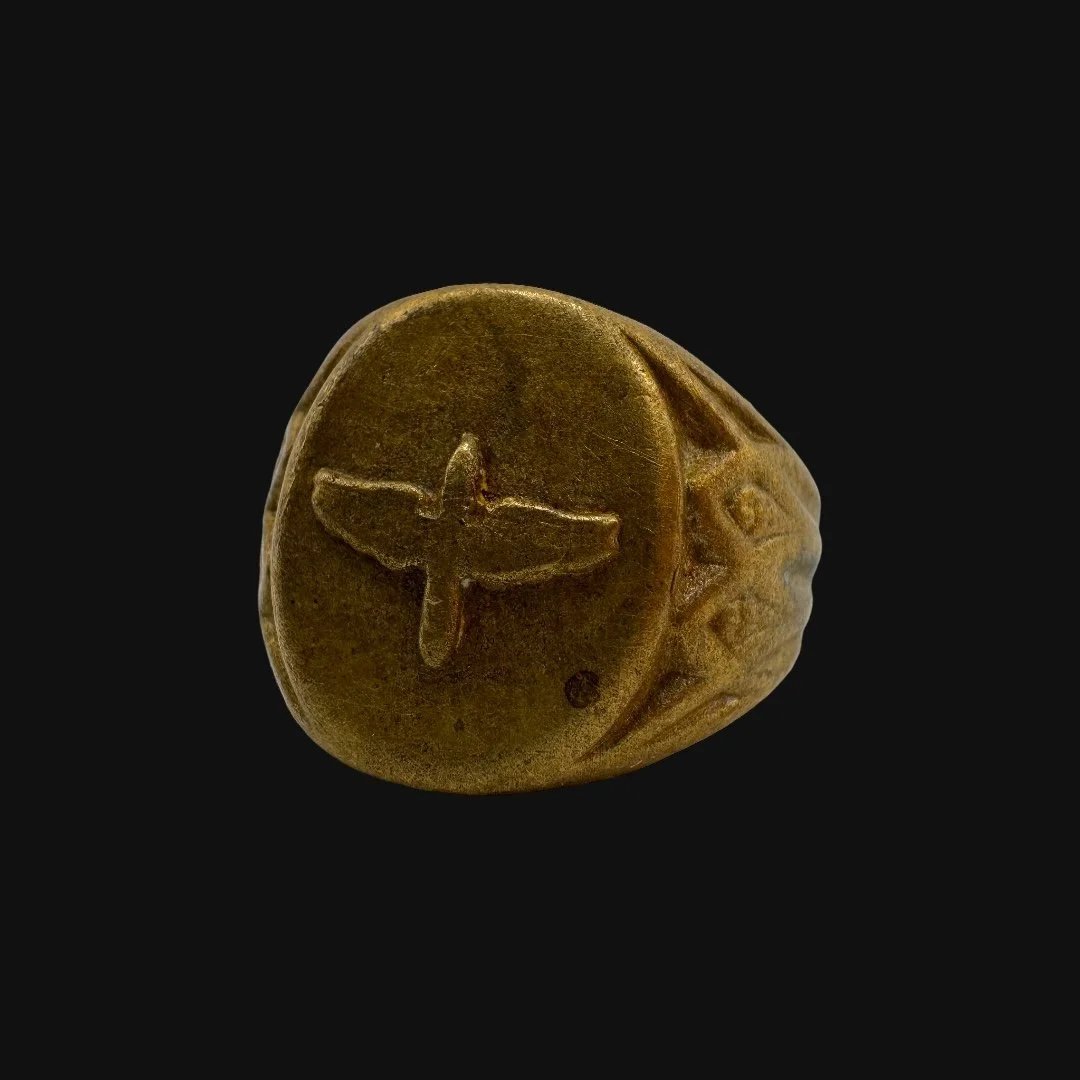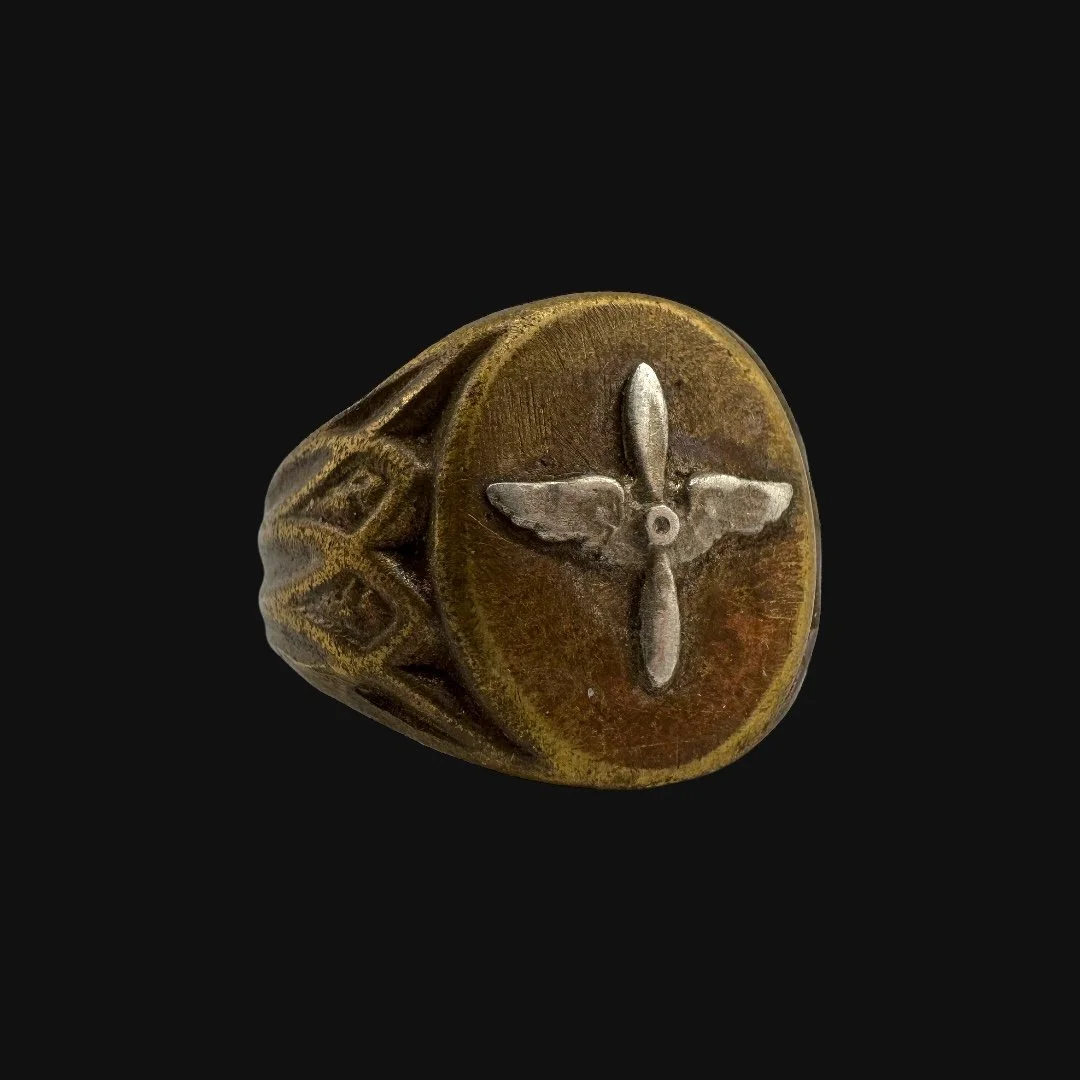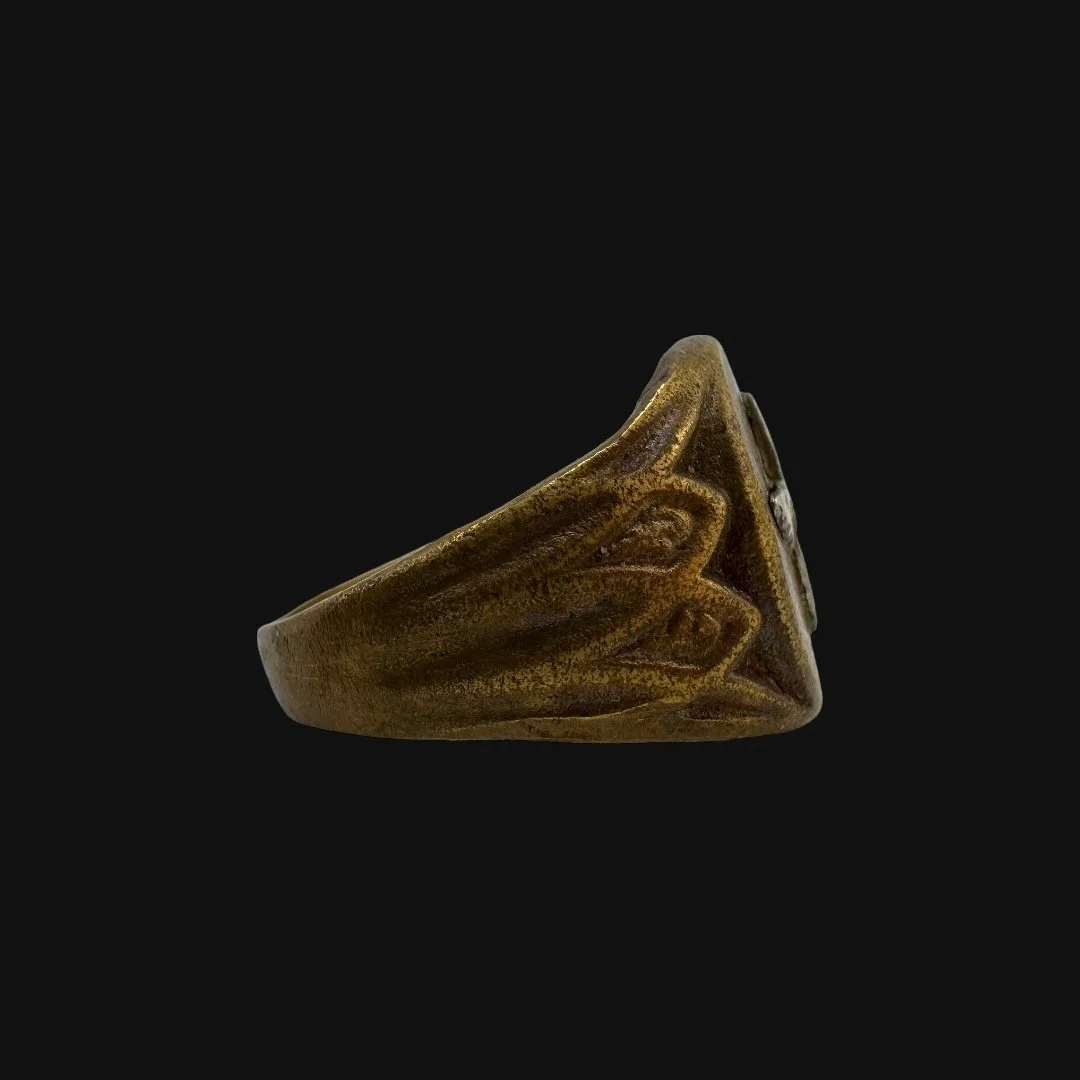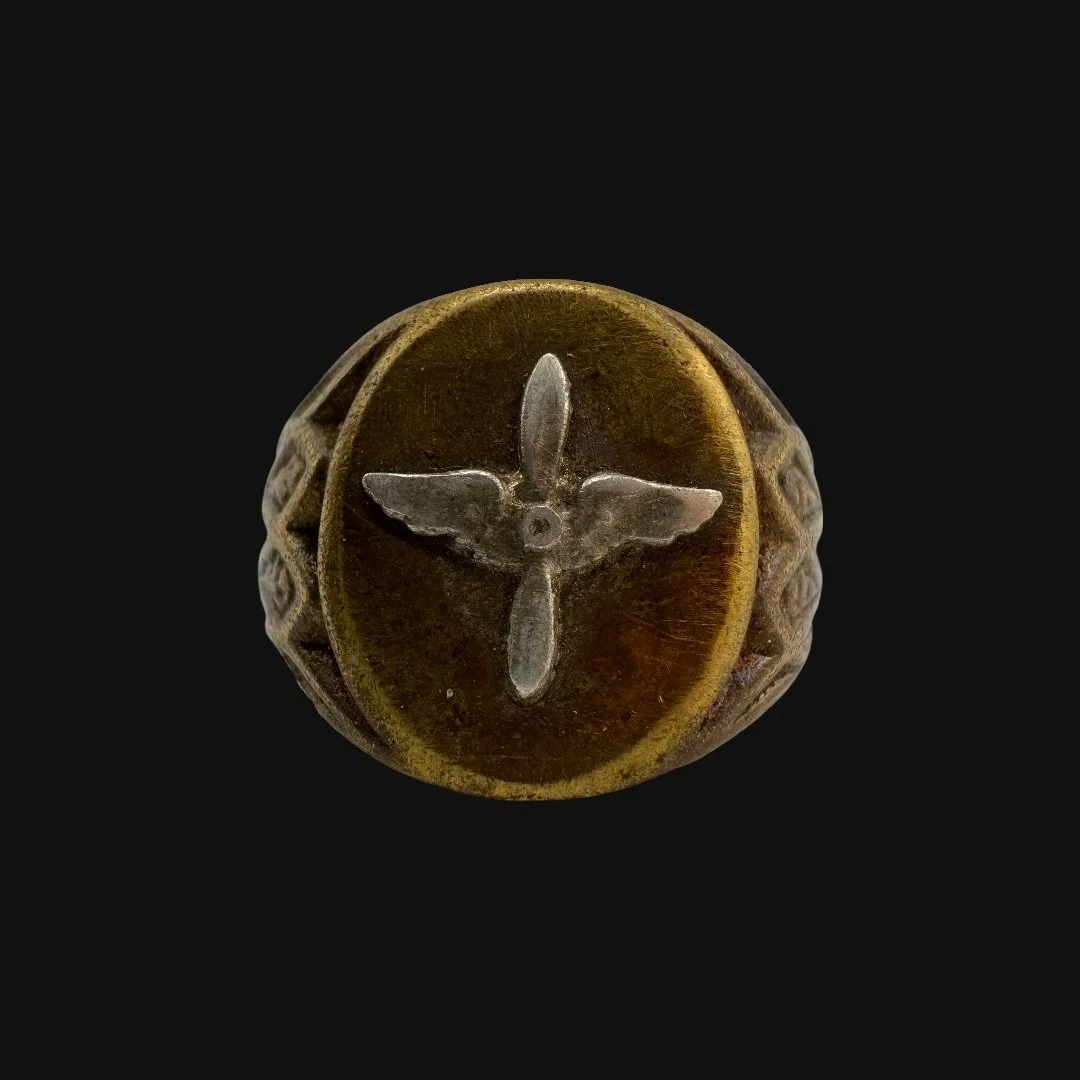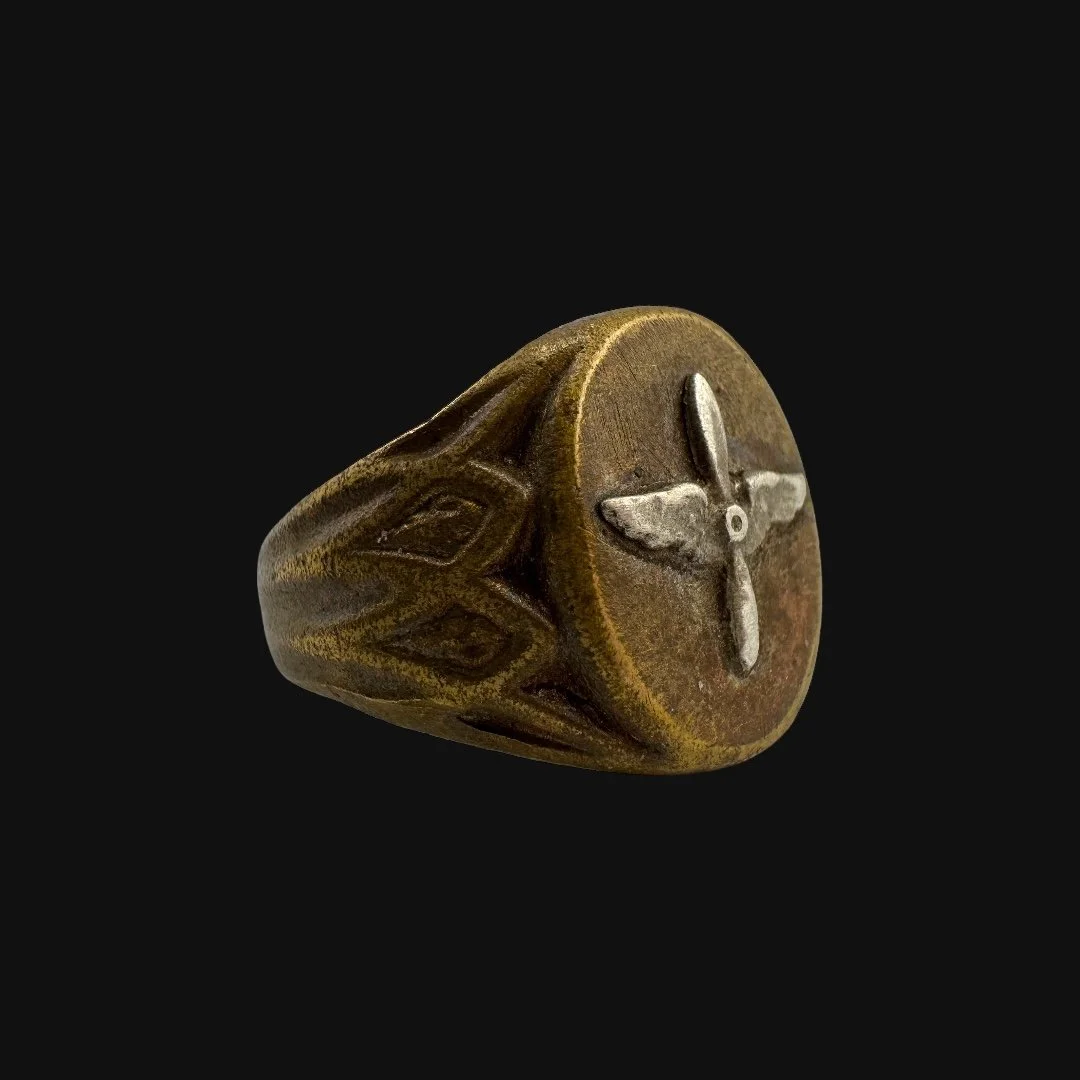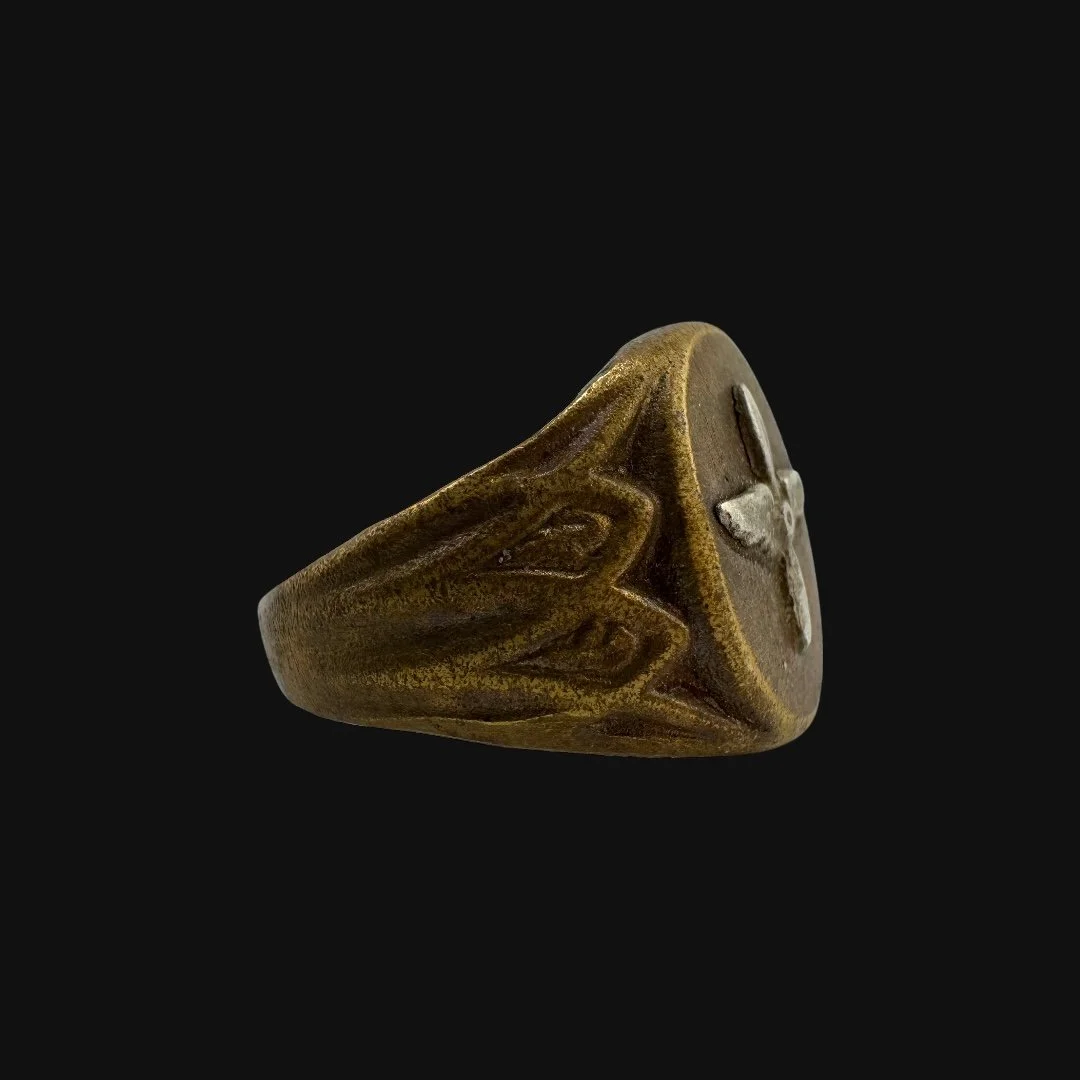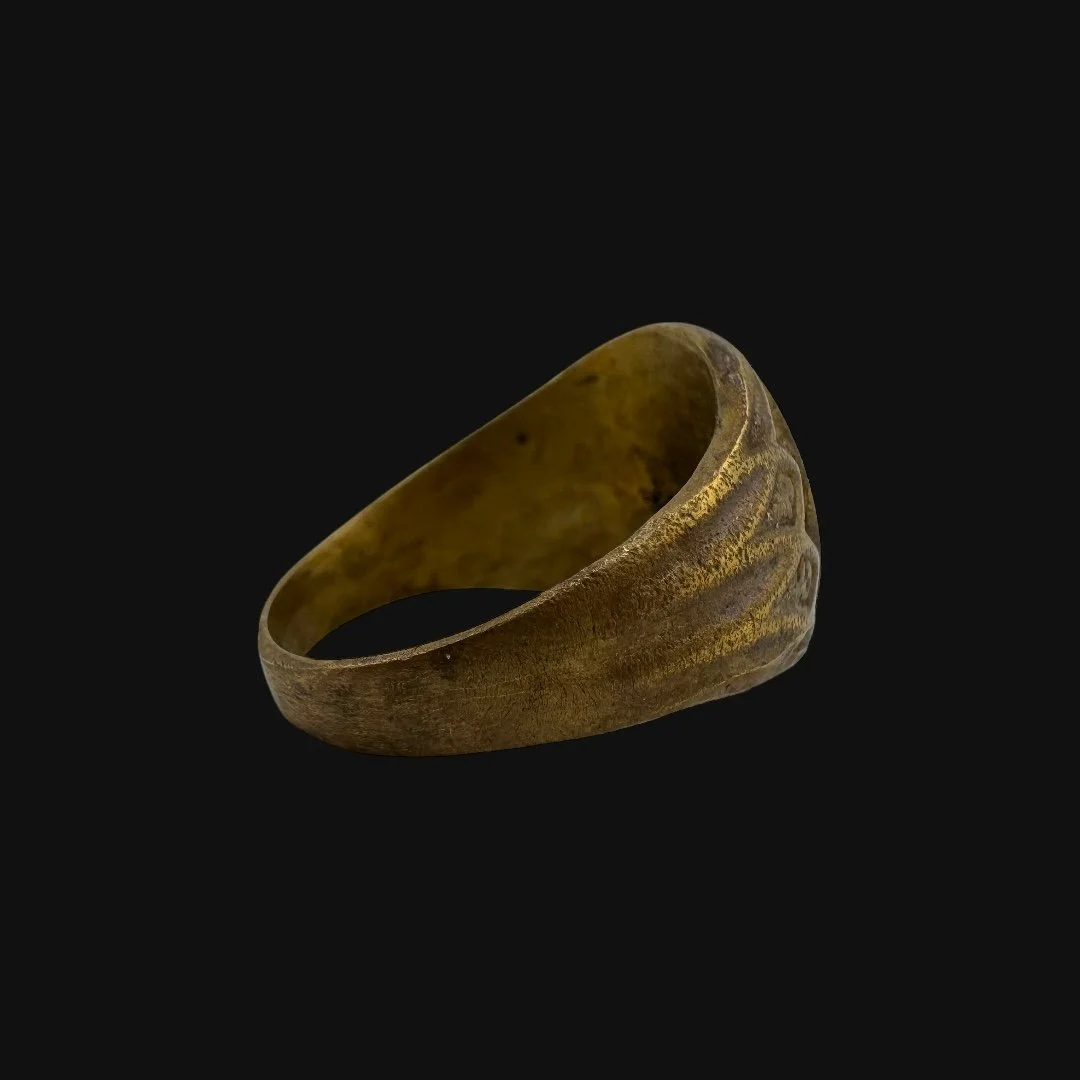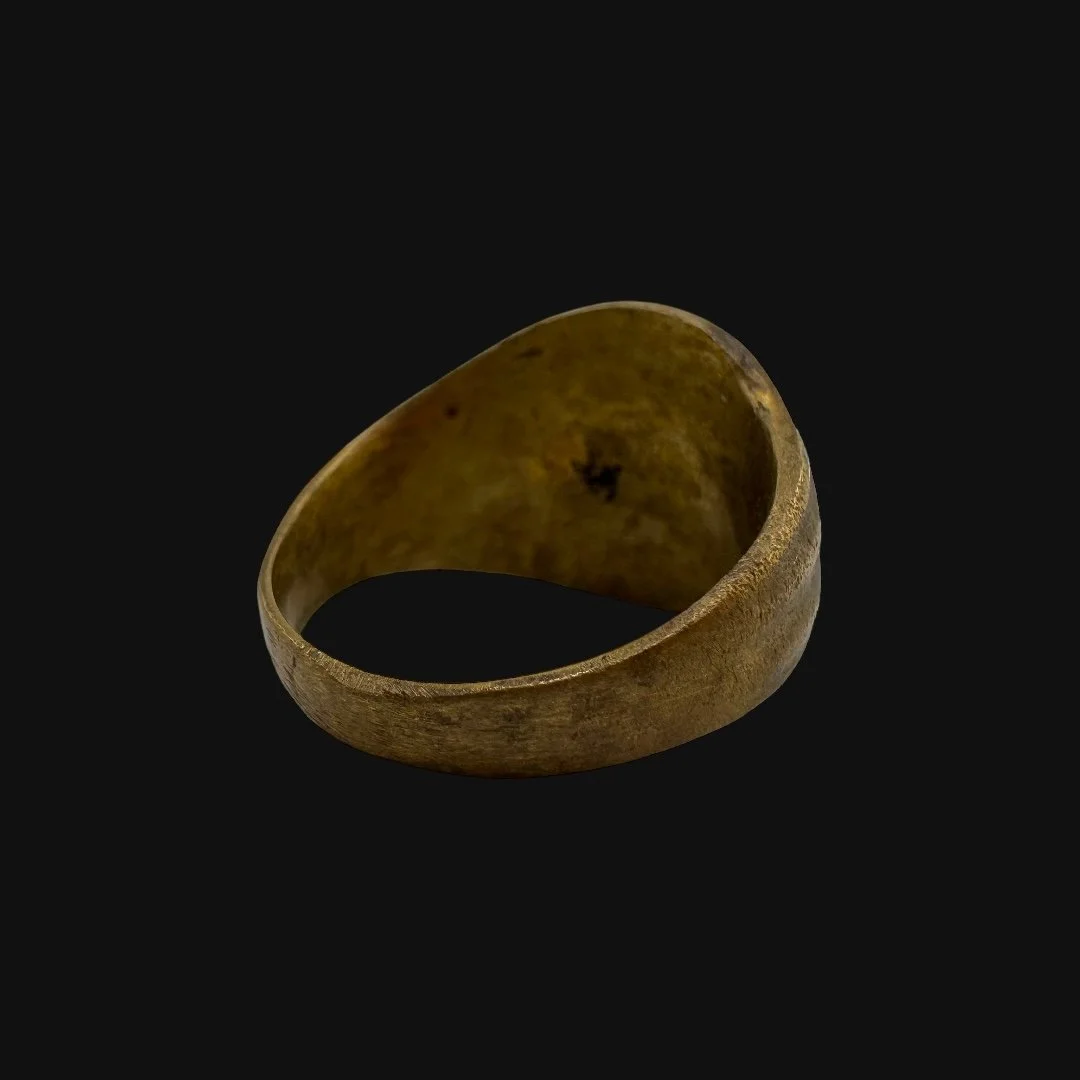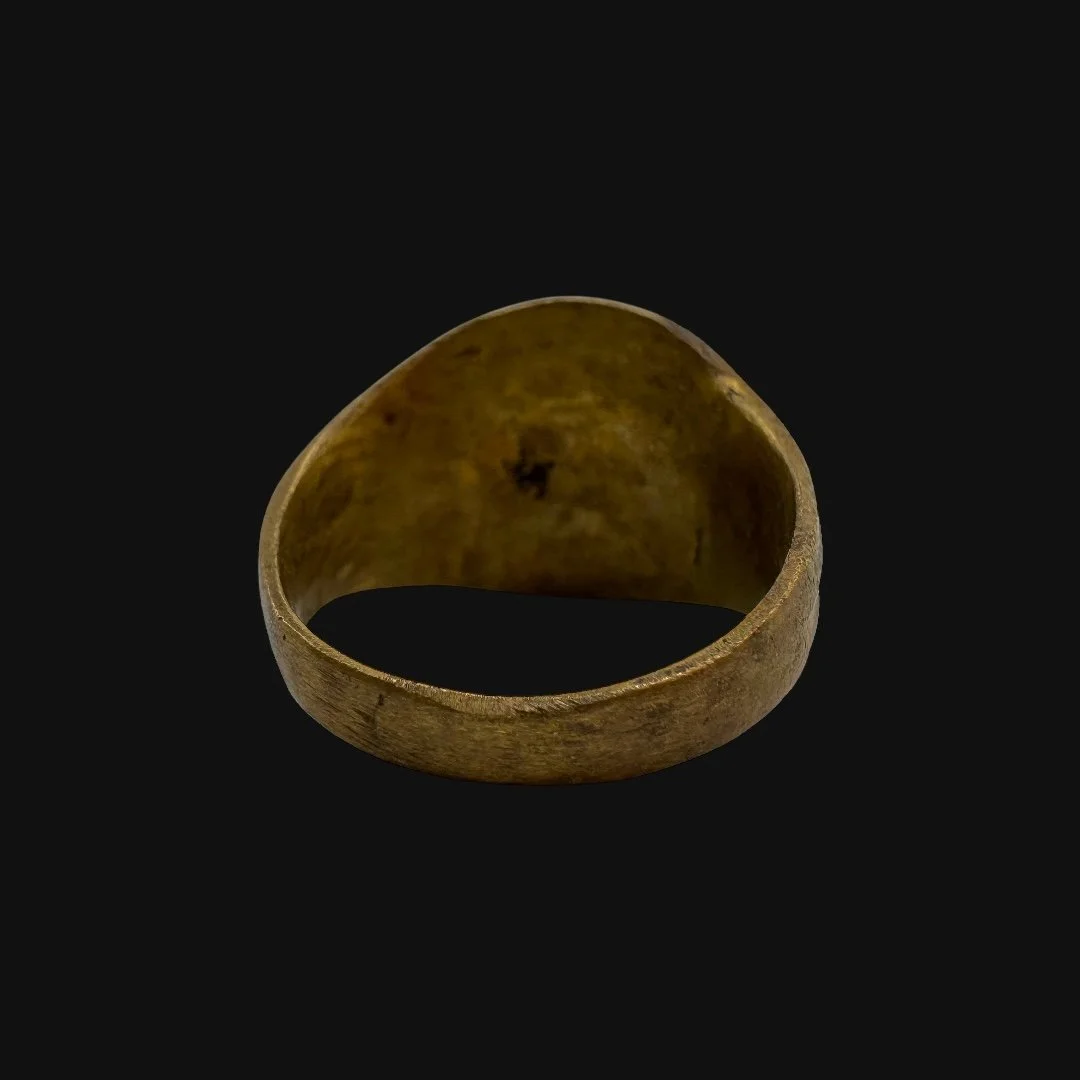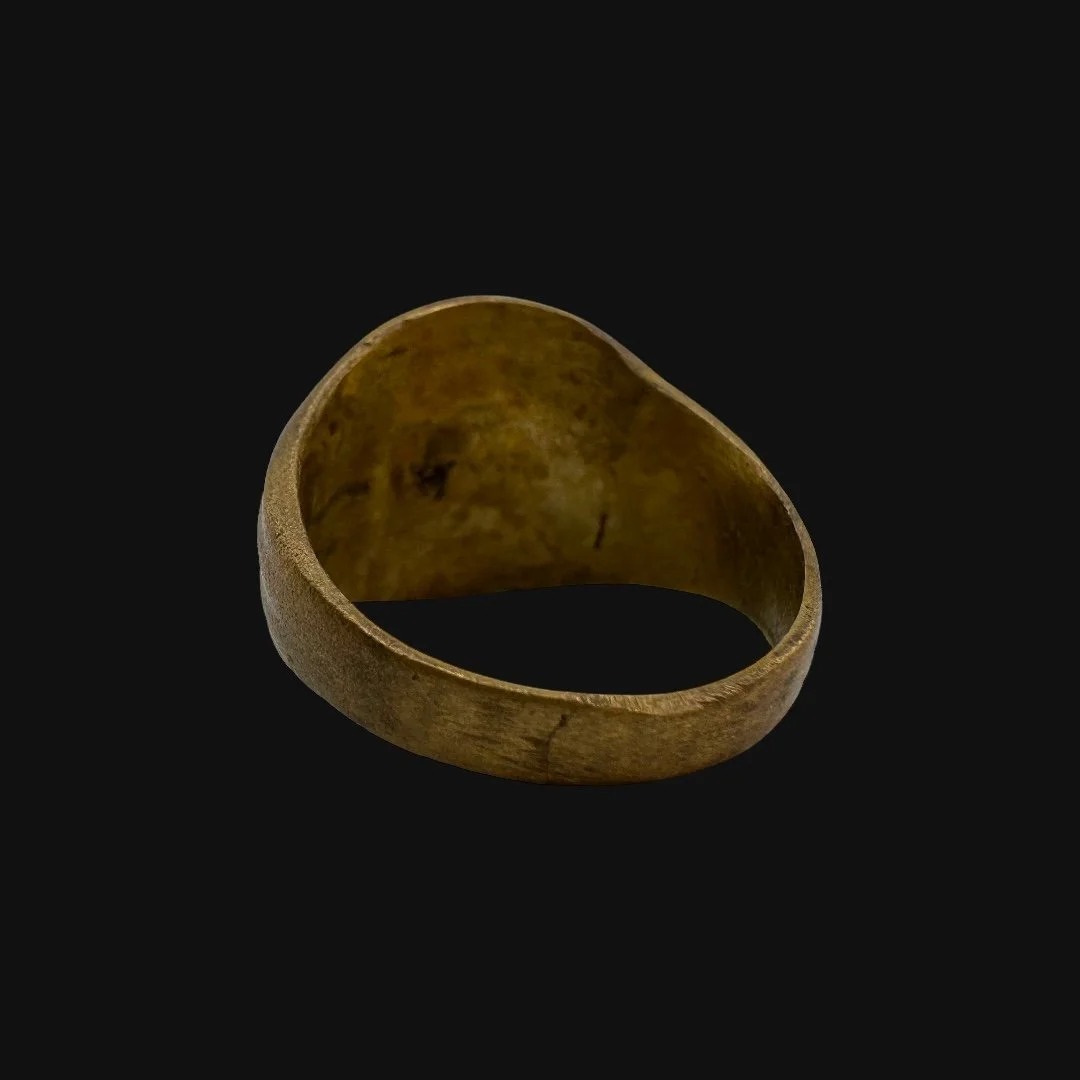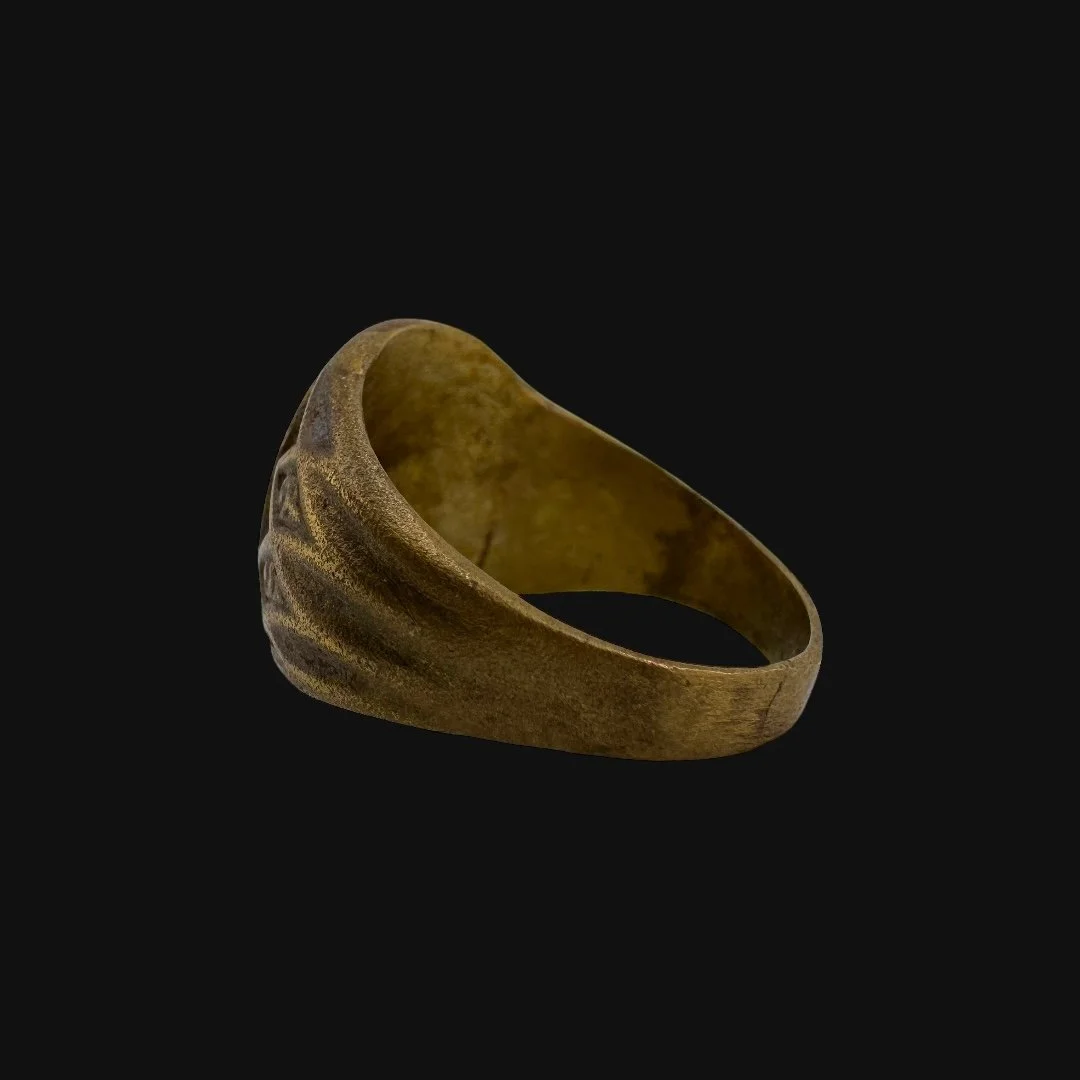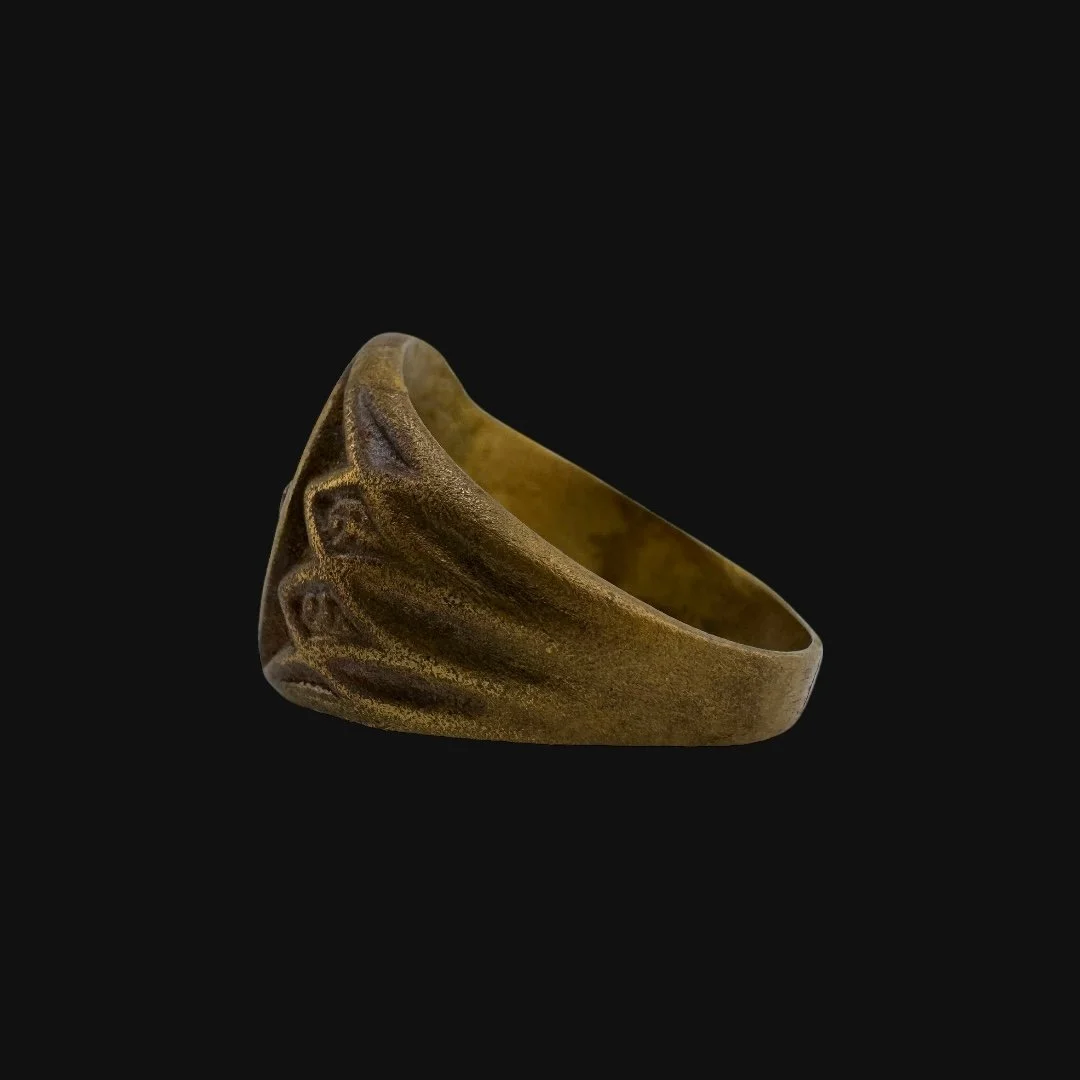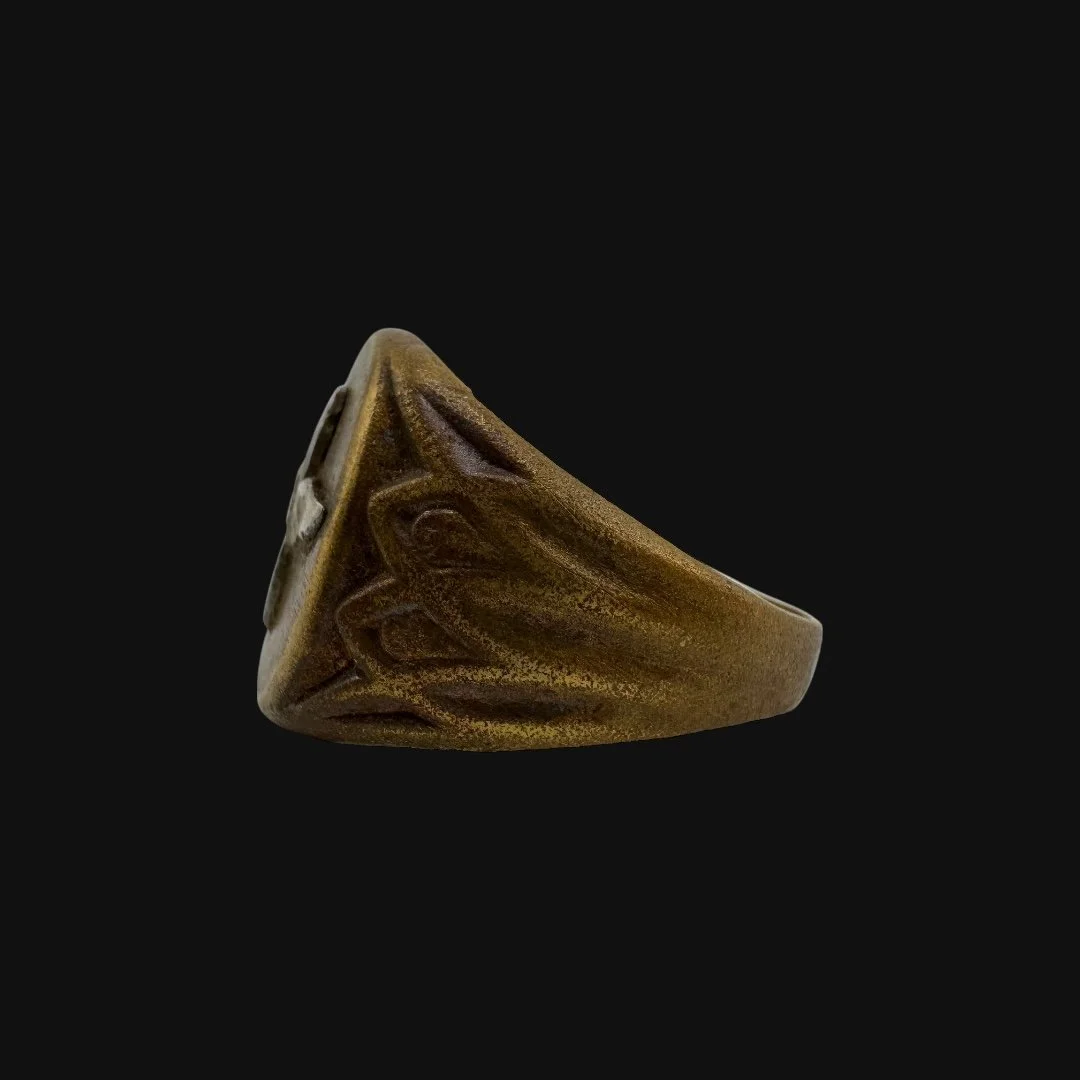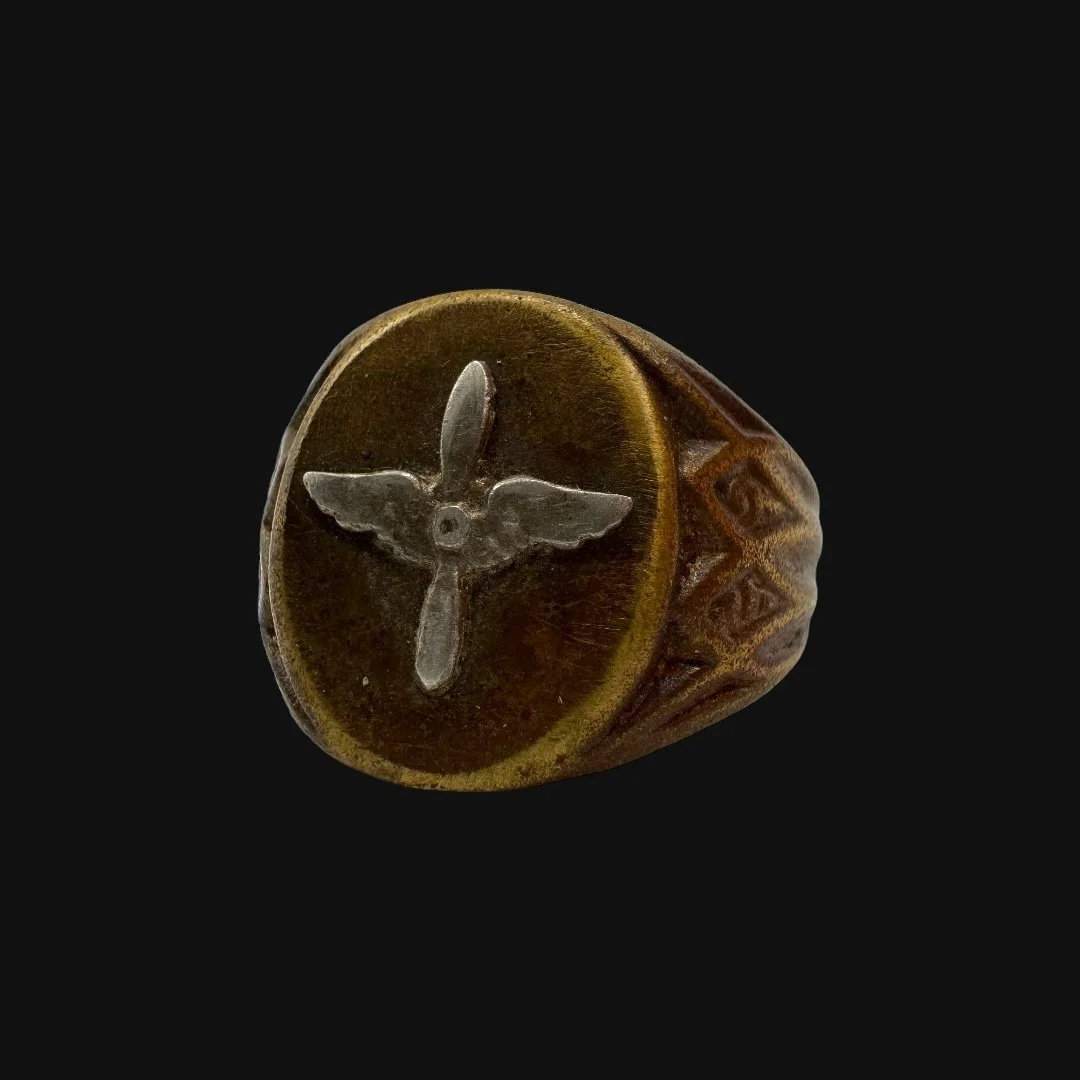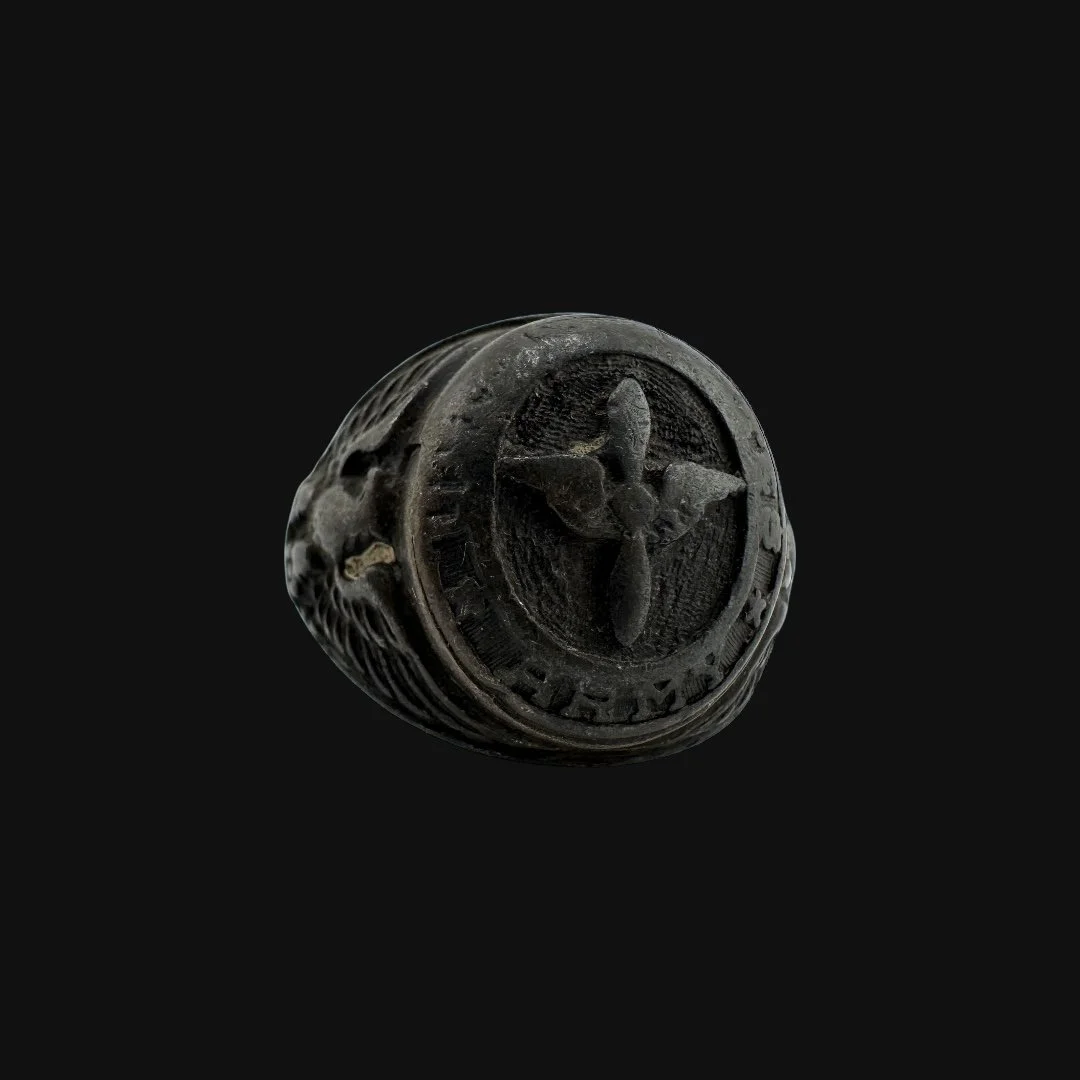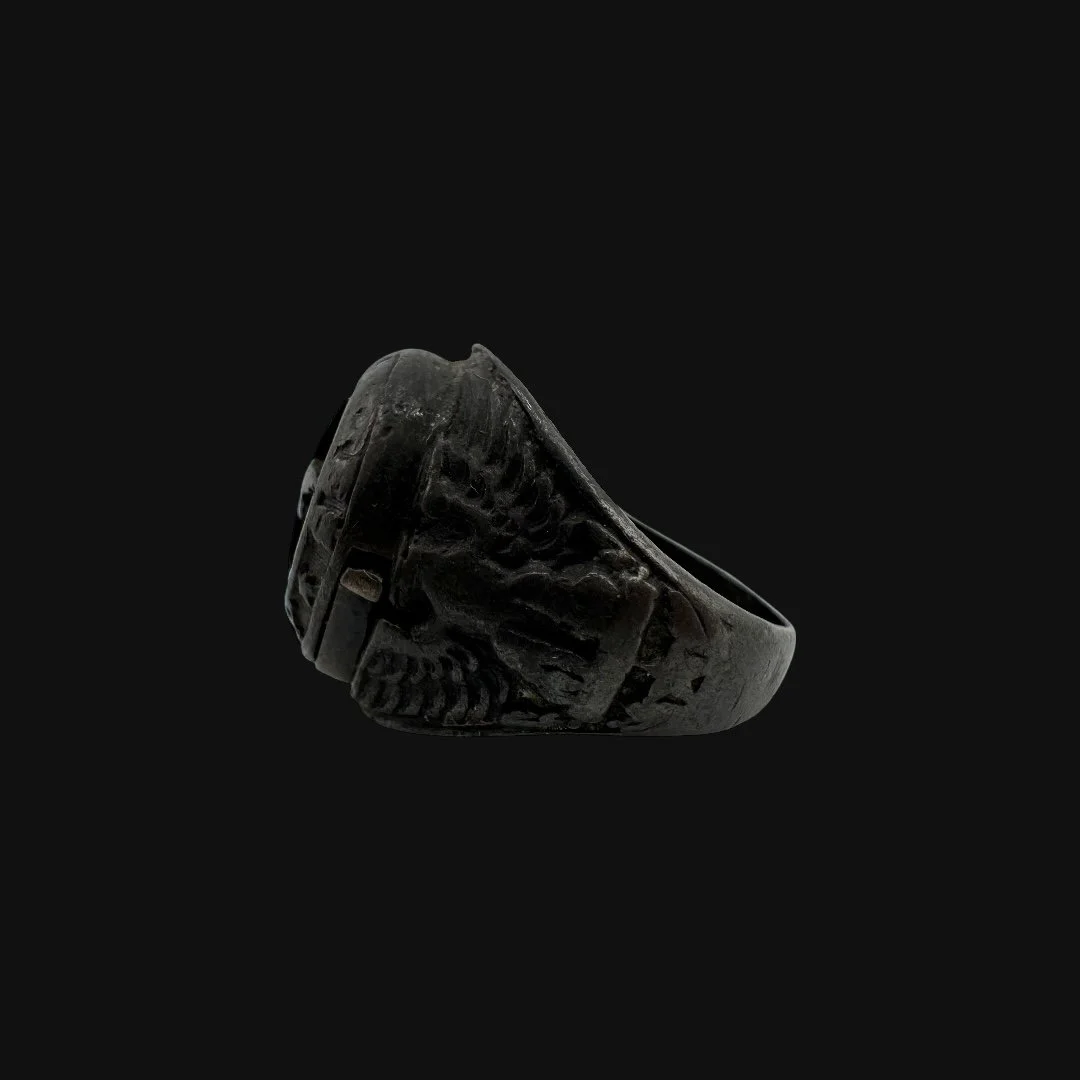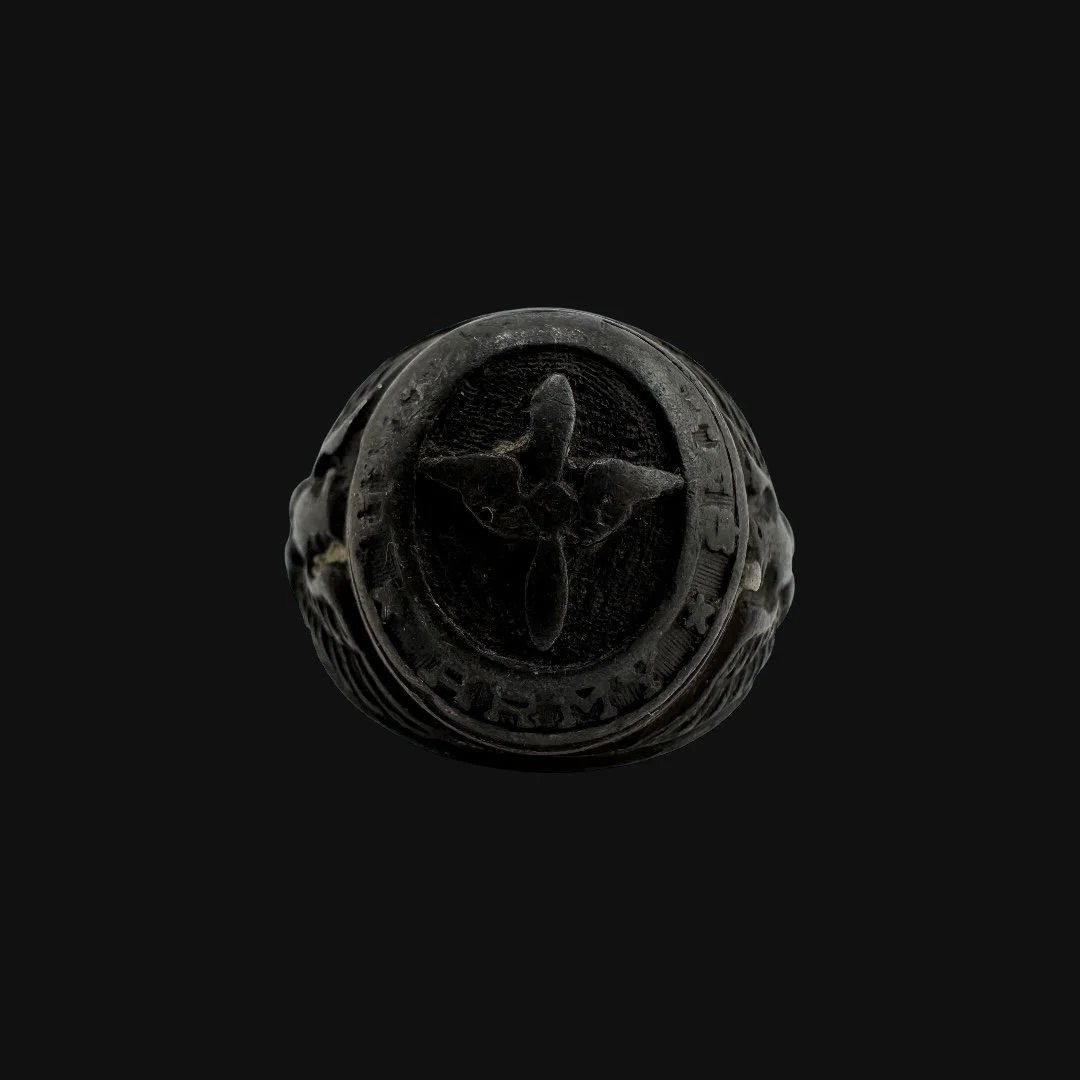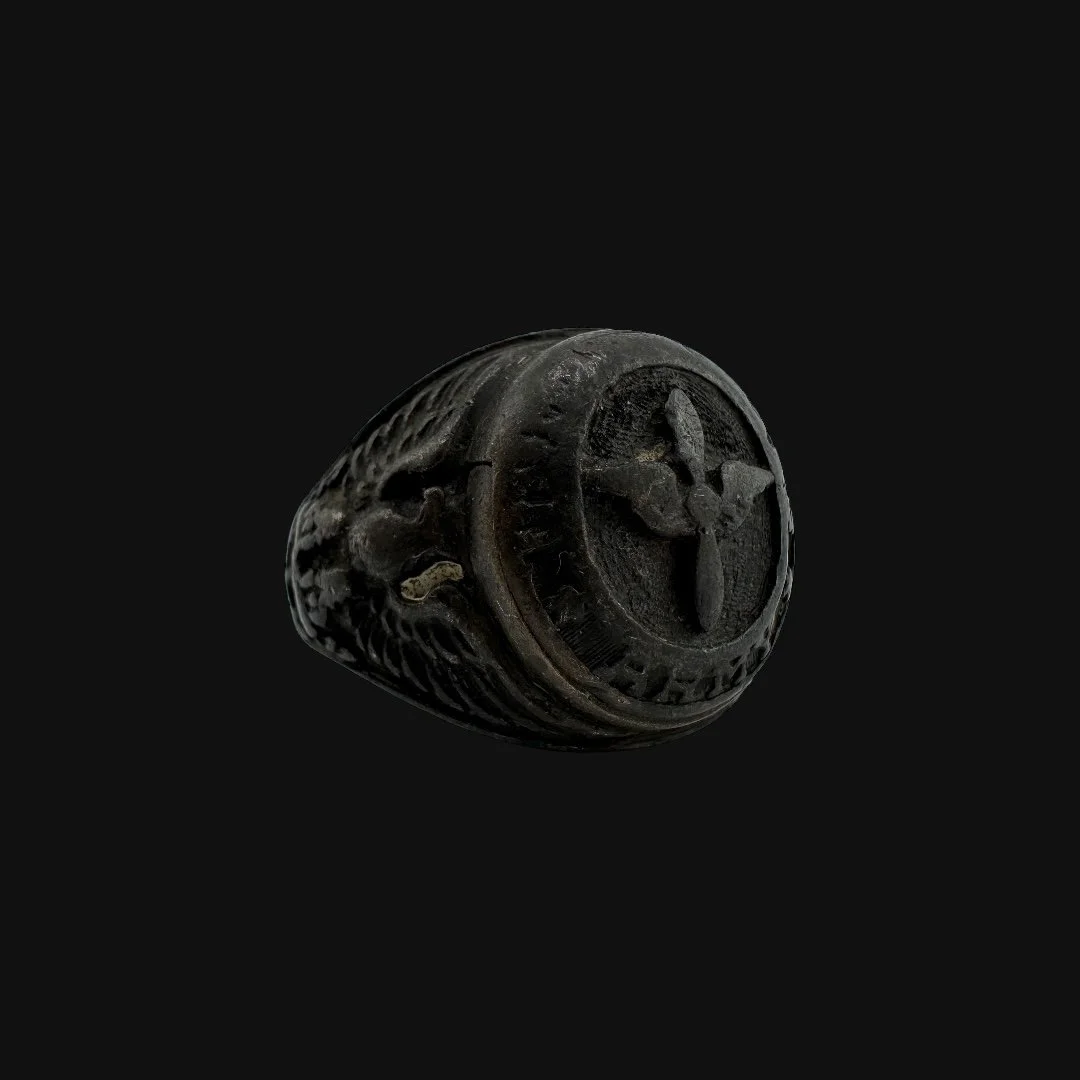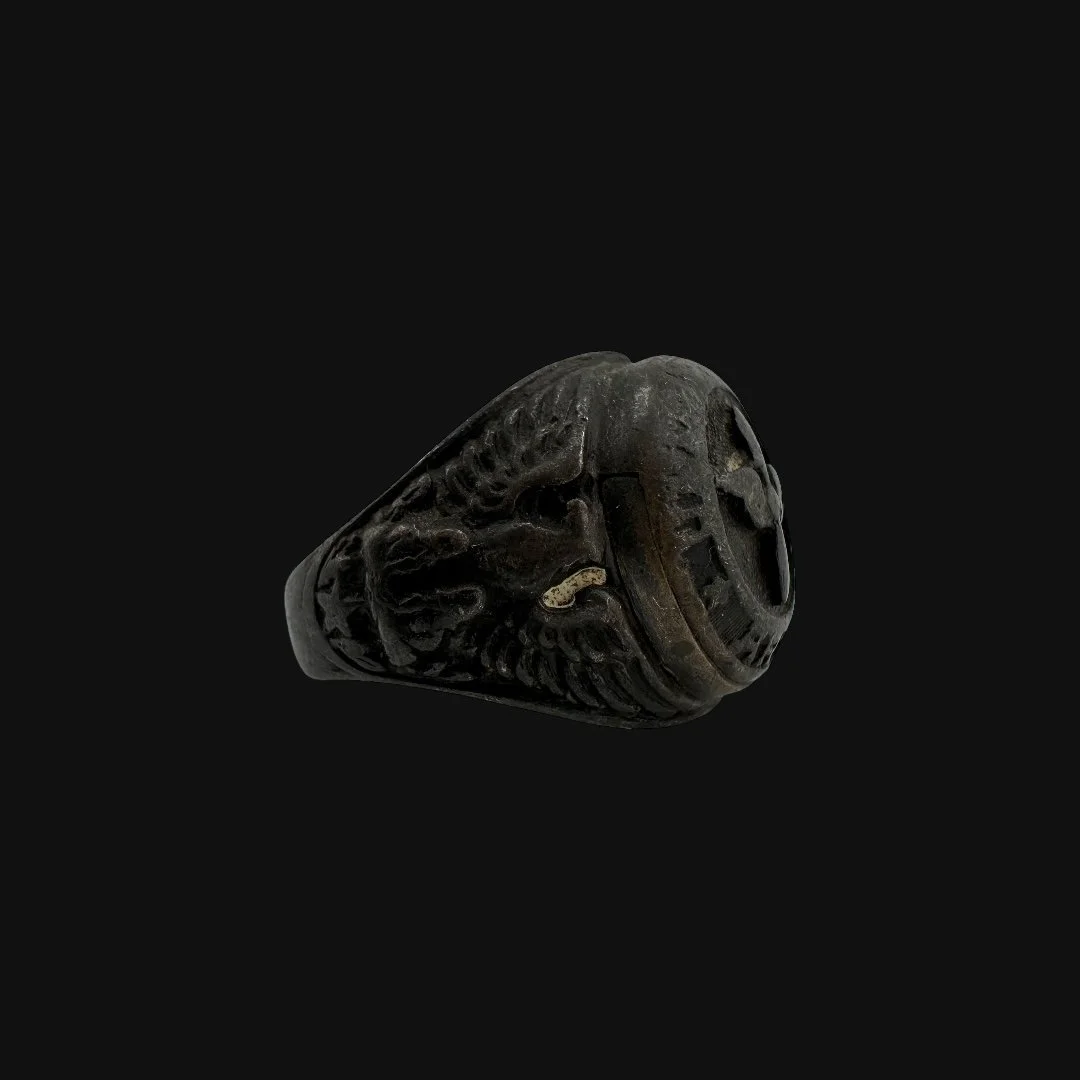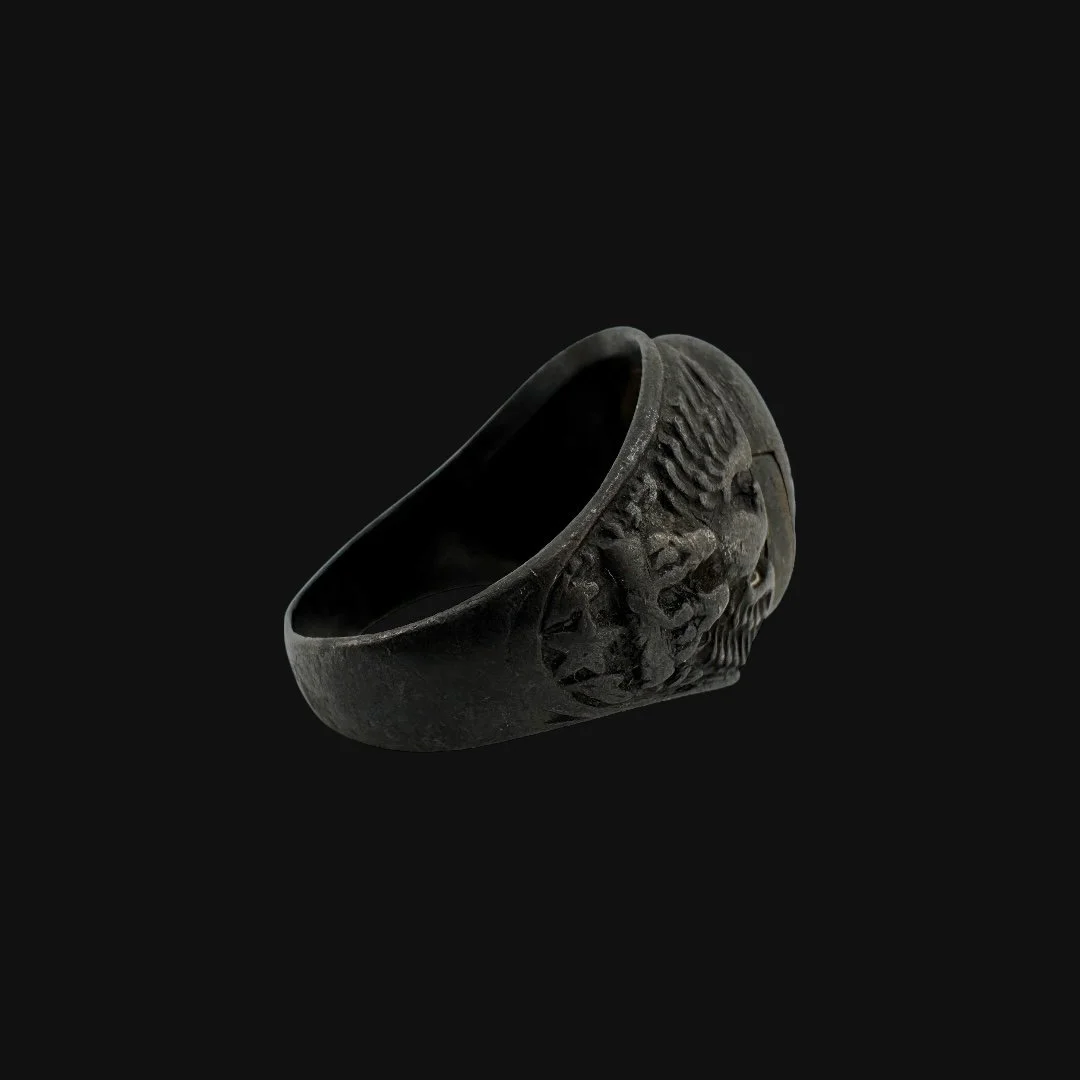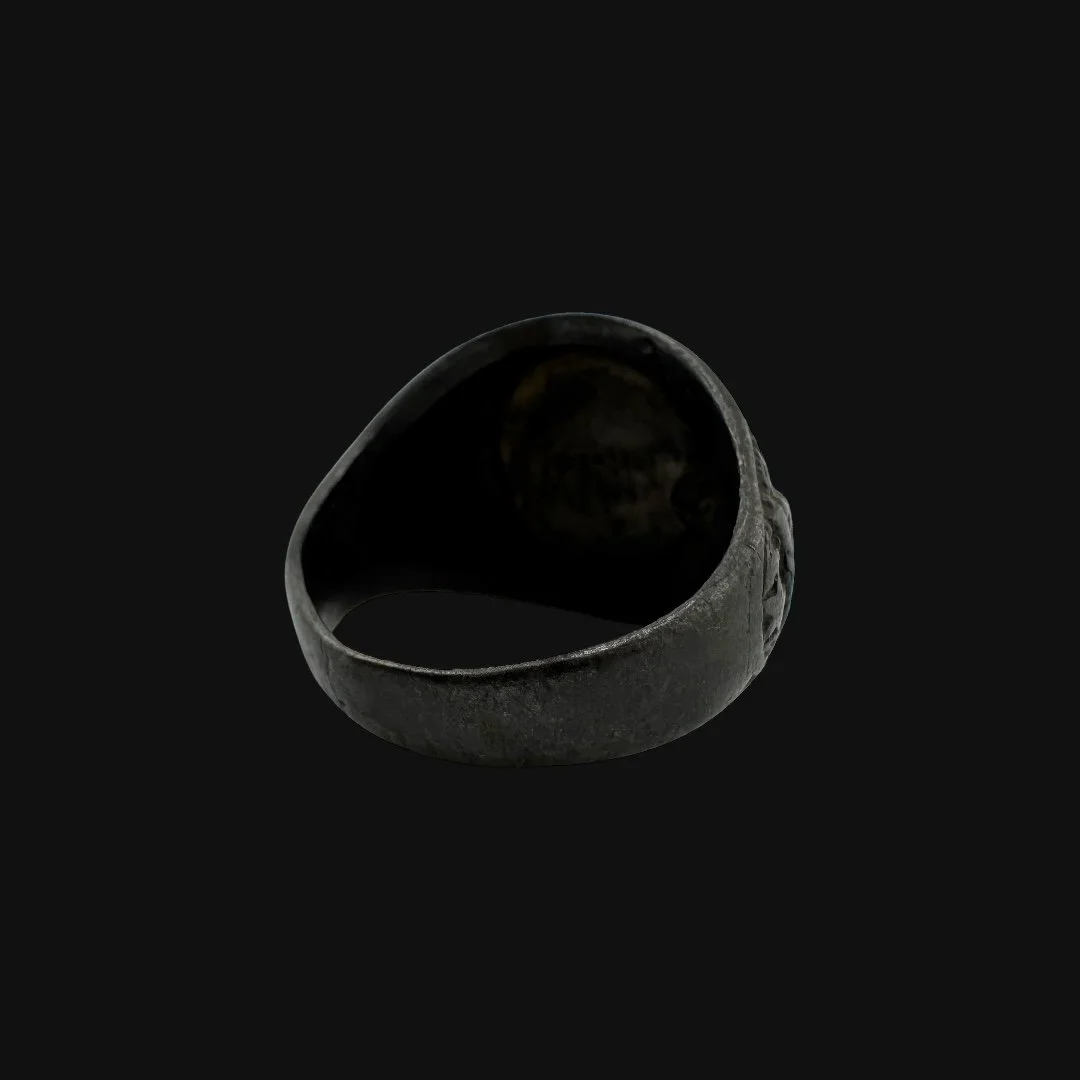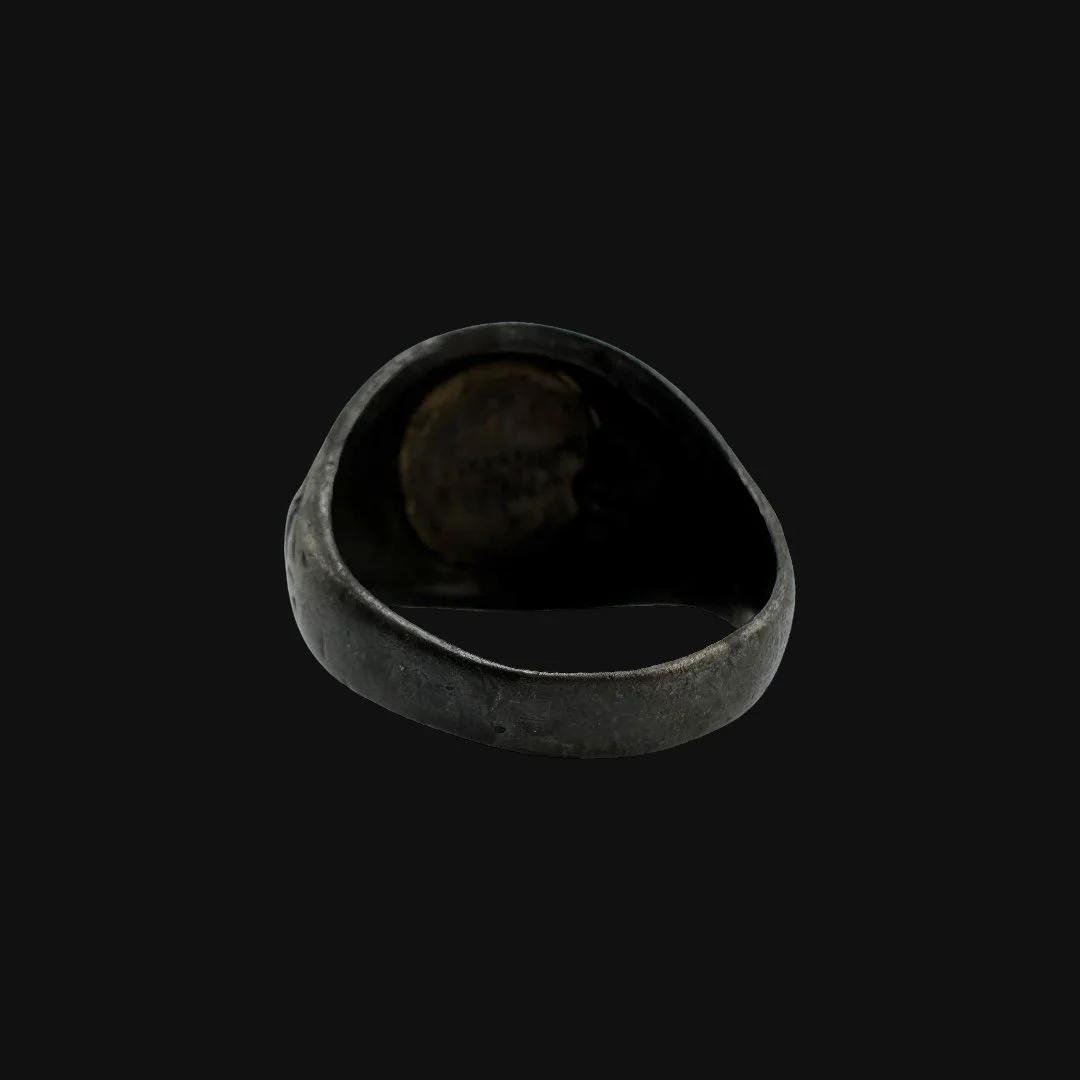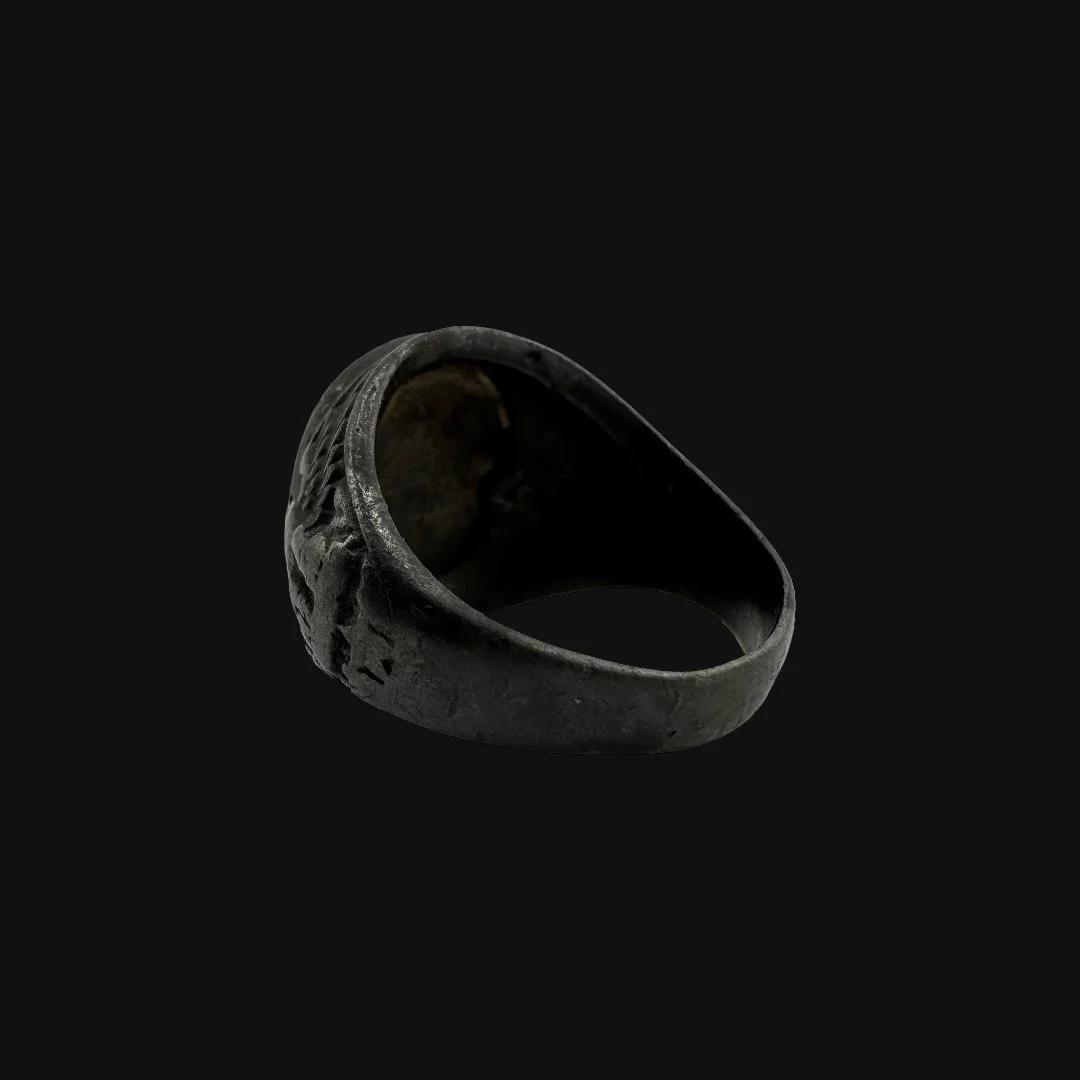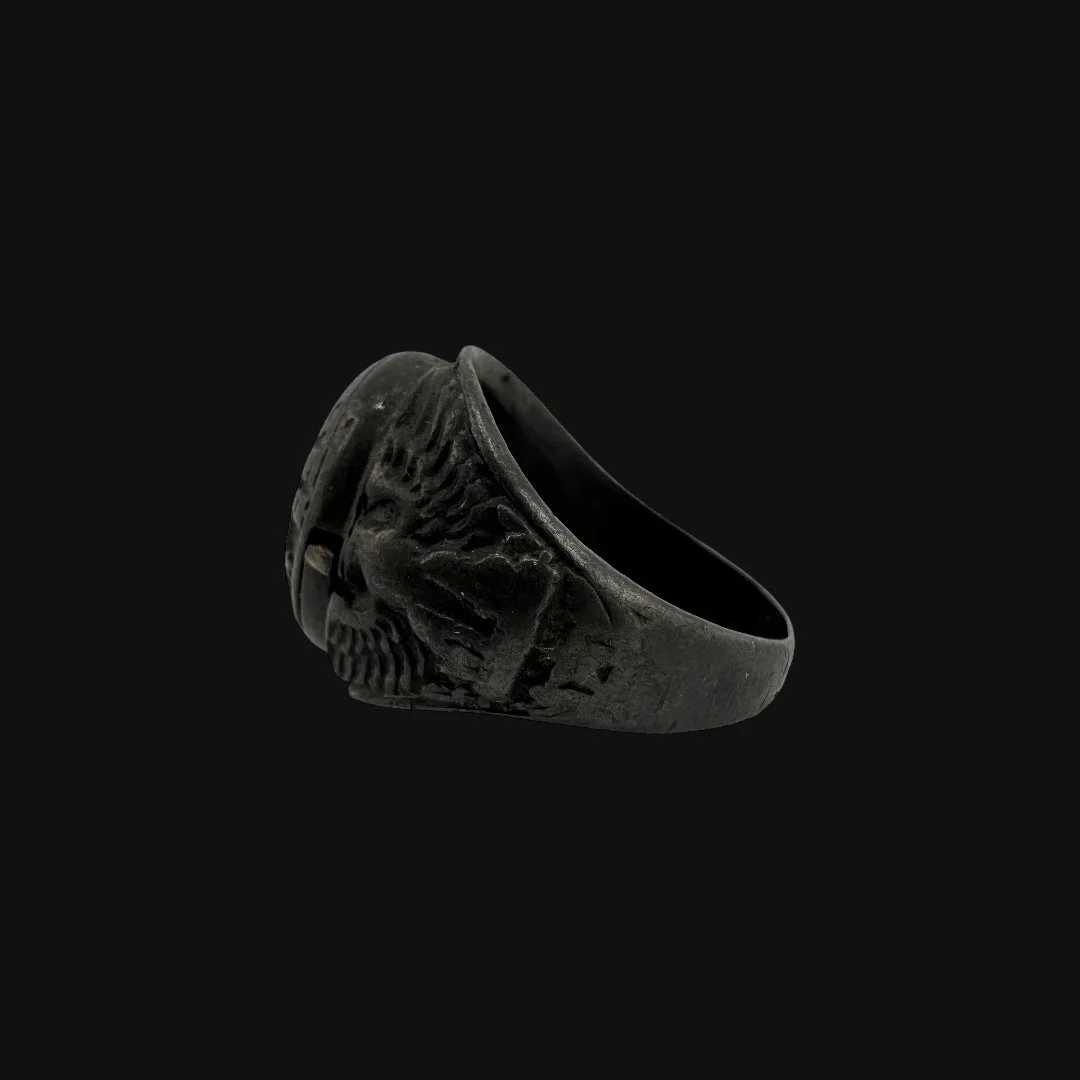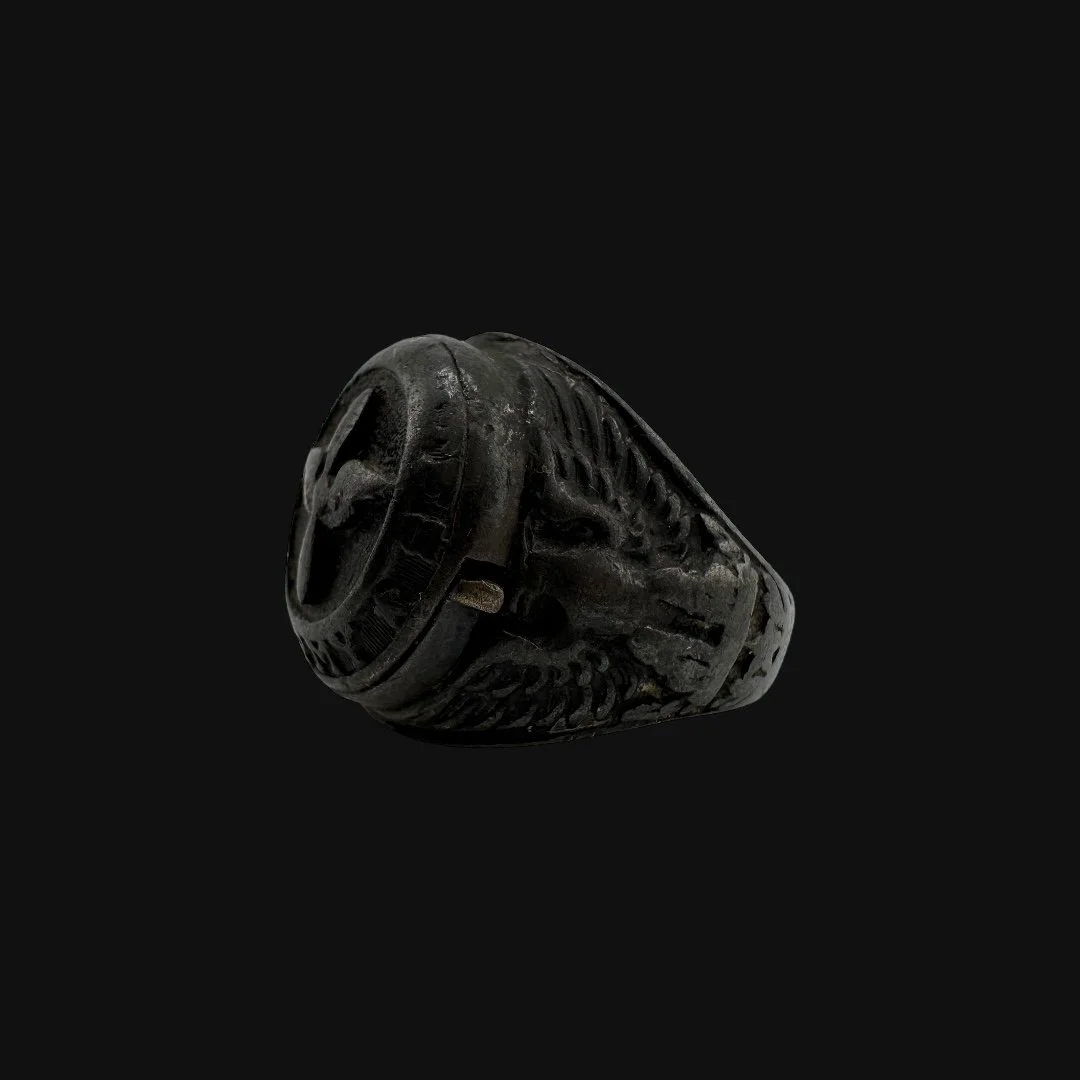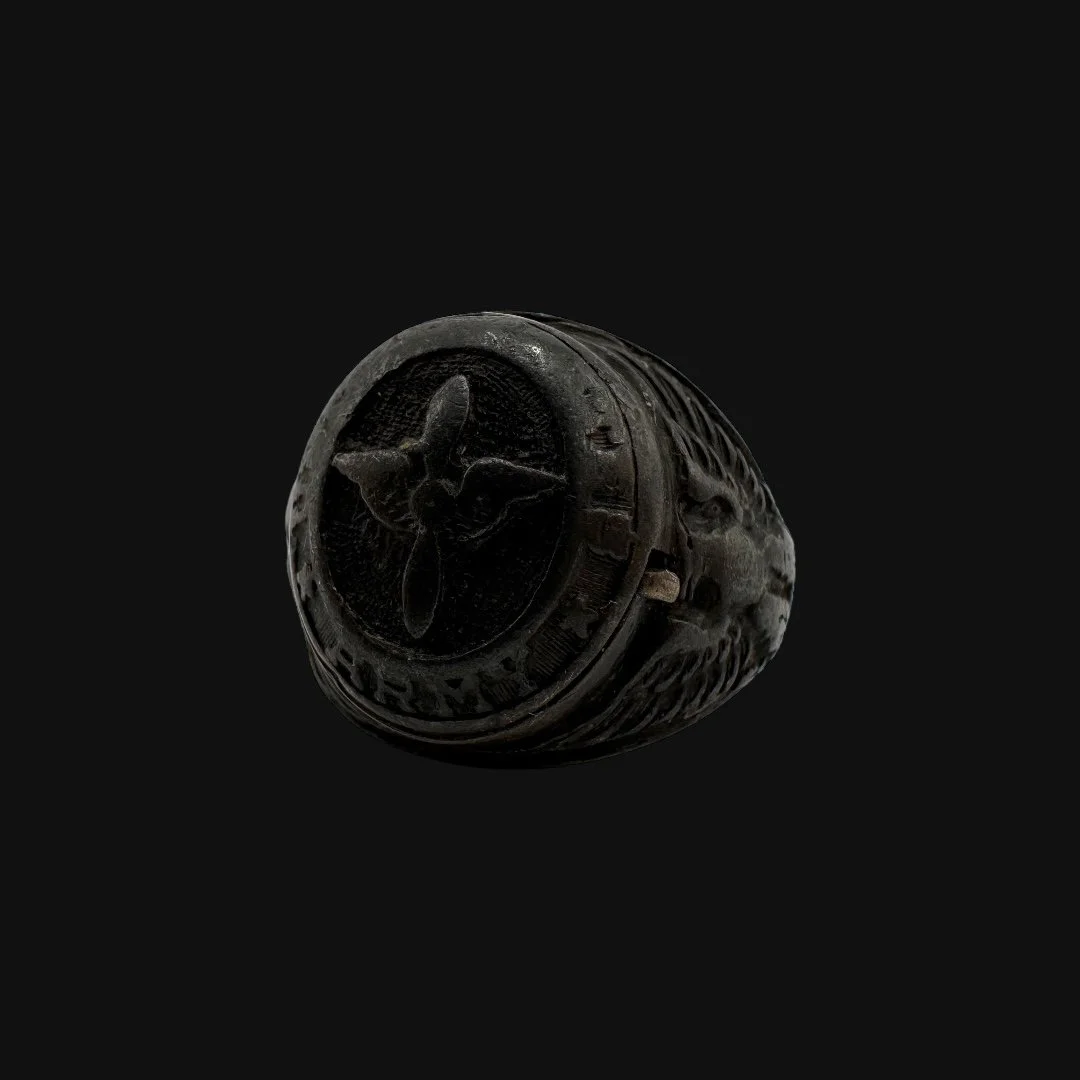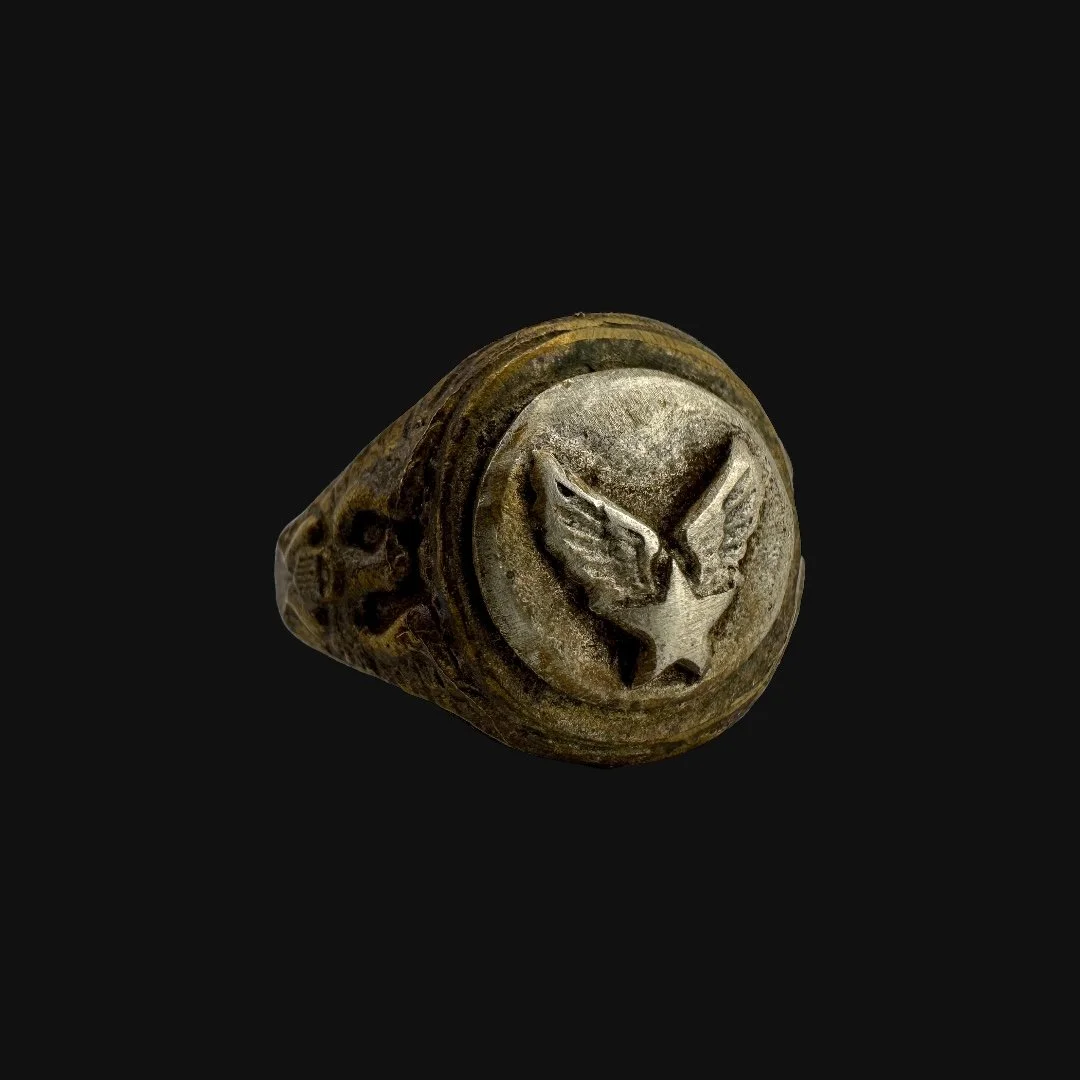 Image 1 of 13
Image 1 of 13

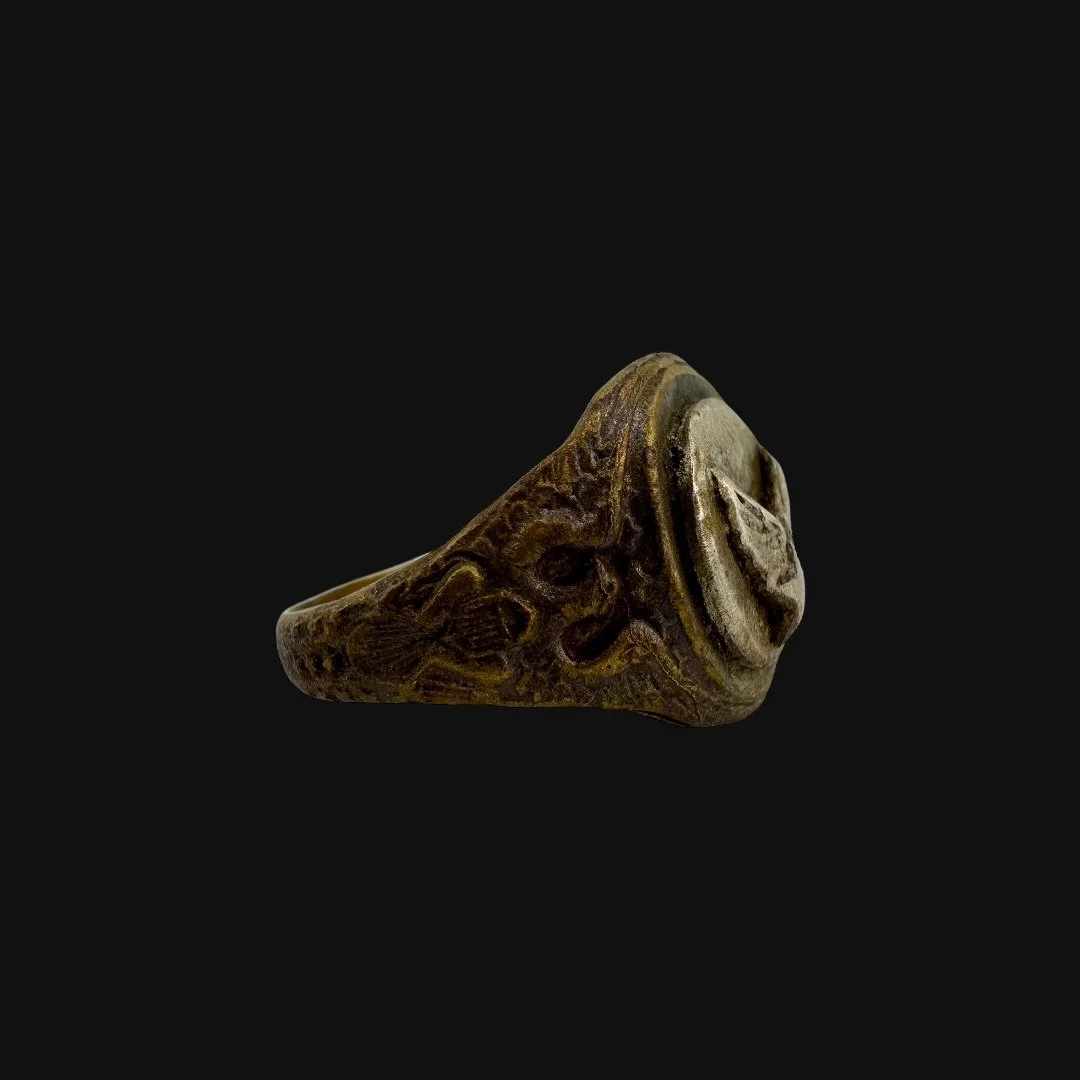 Image 2 of 13
Image 2 of 13

 Image 3 of 13
Image 3 of 13

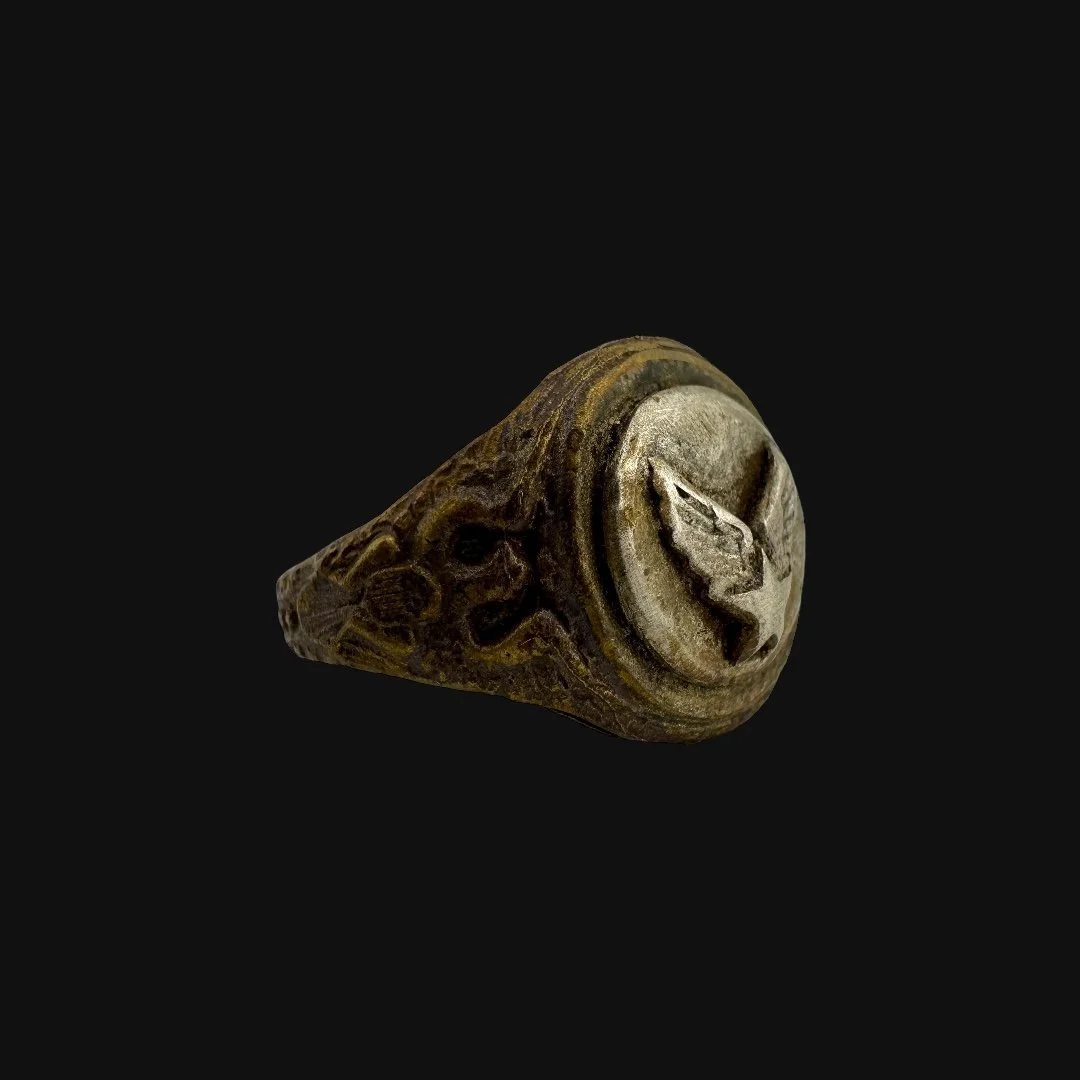 Image 4 of 13
Image 4 of 13

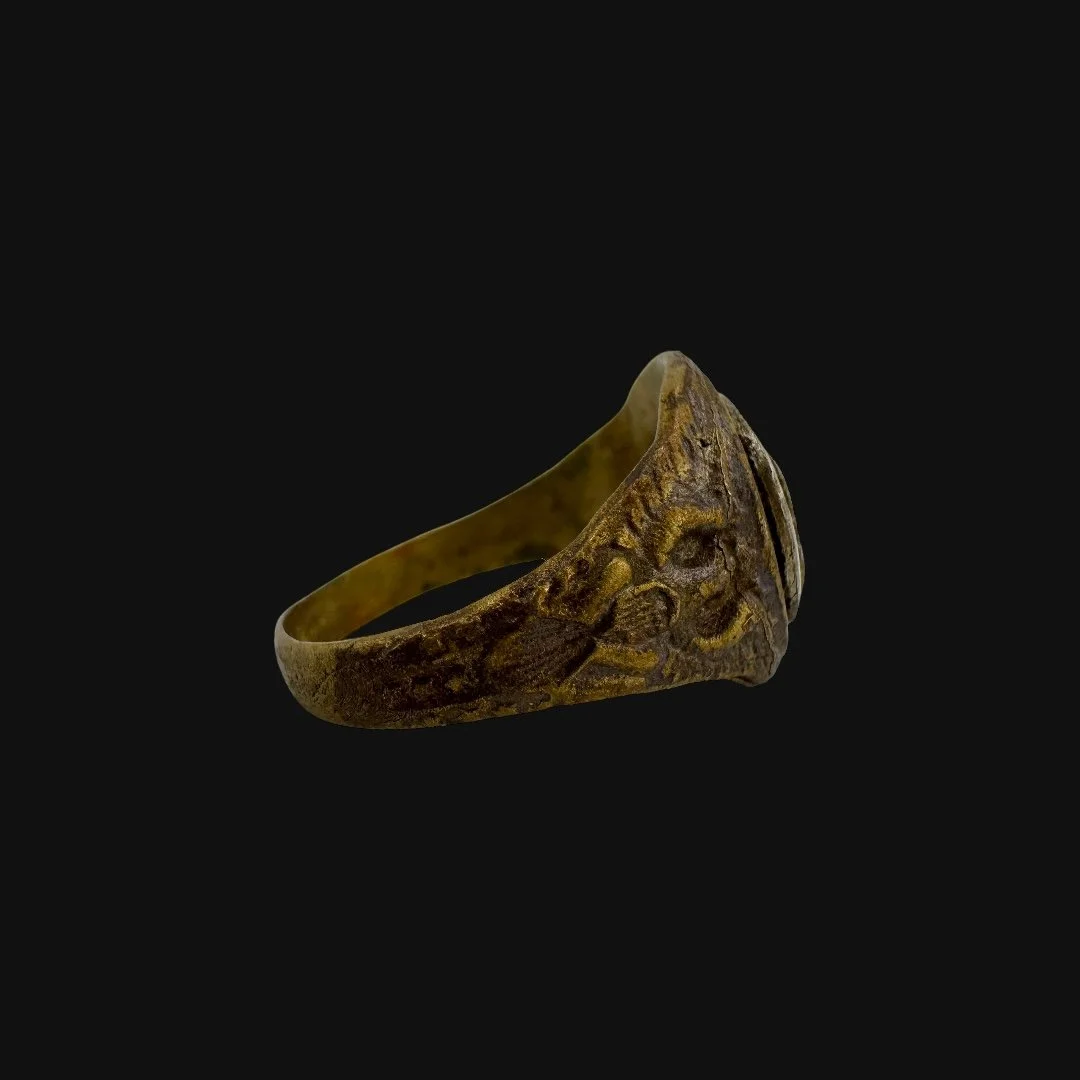 Image 5 of 13
Image 5 of 13

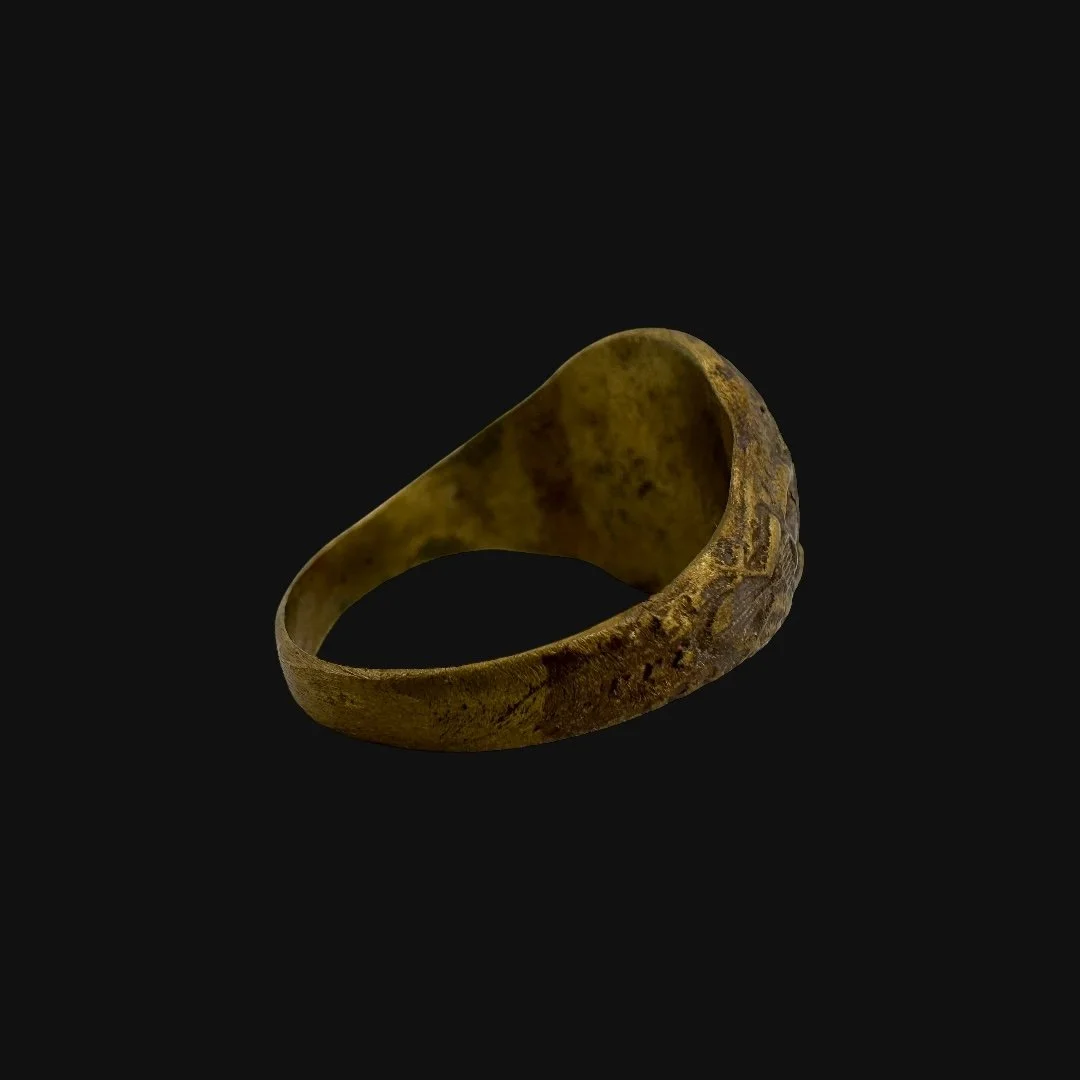 Image 6 of 13
Image 6 of 13

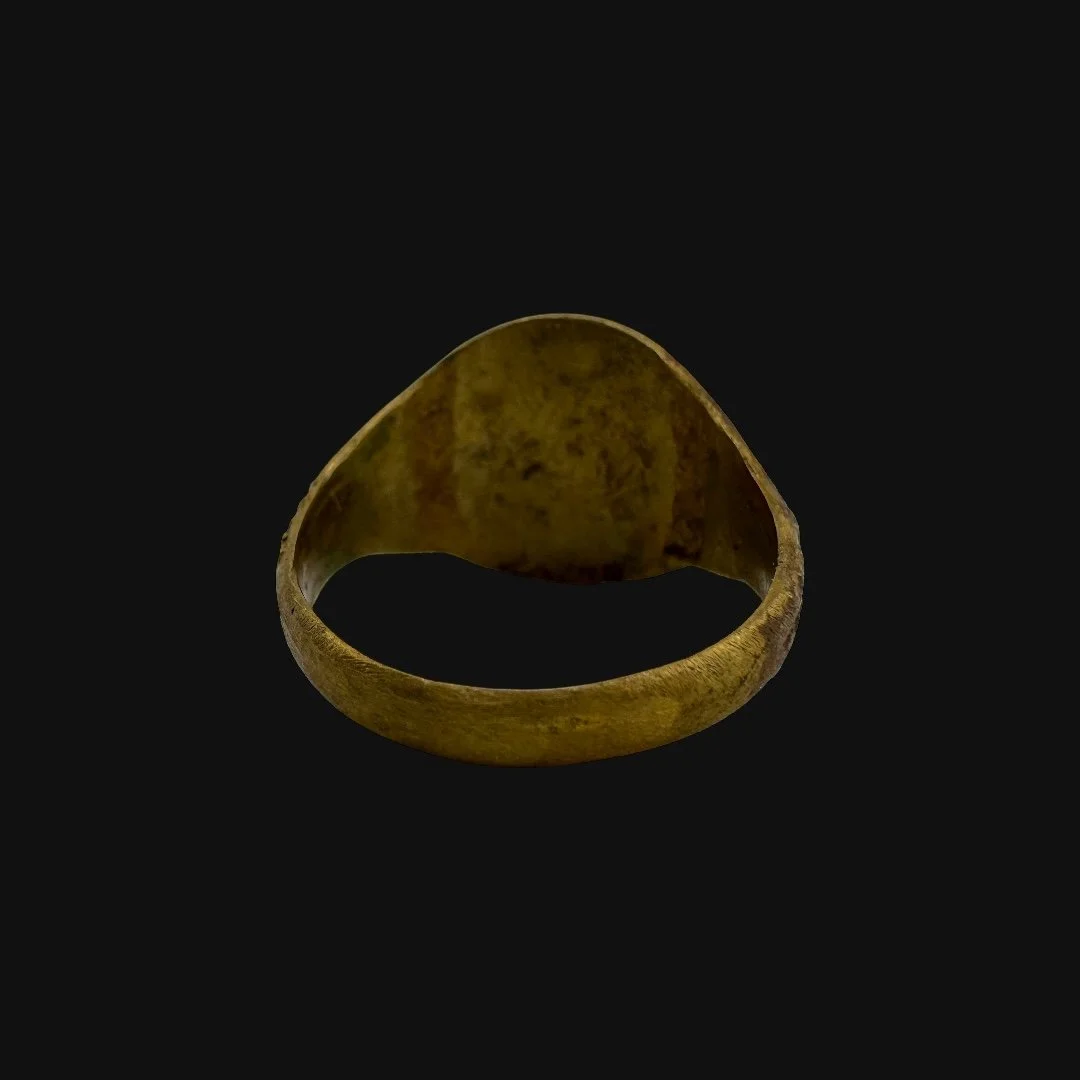 Image 7 of 13
Image 7 of 13

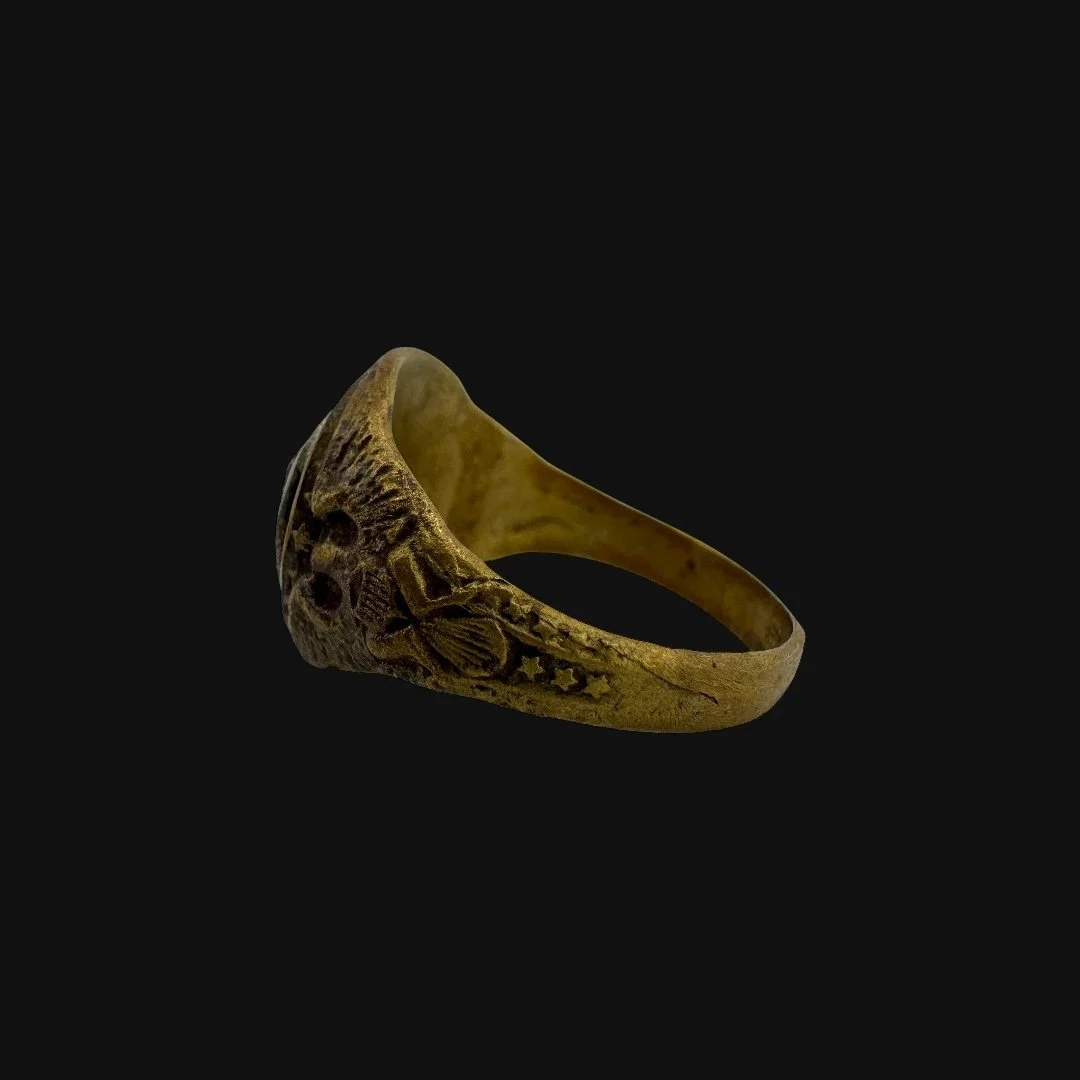 Image 8 of 13
Image 8 of 13

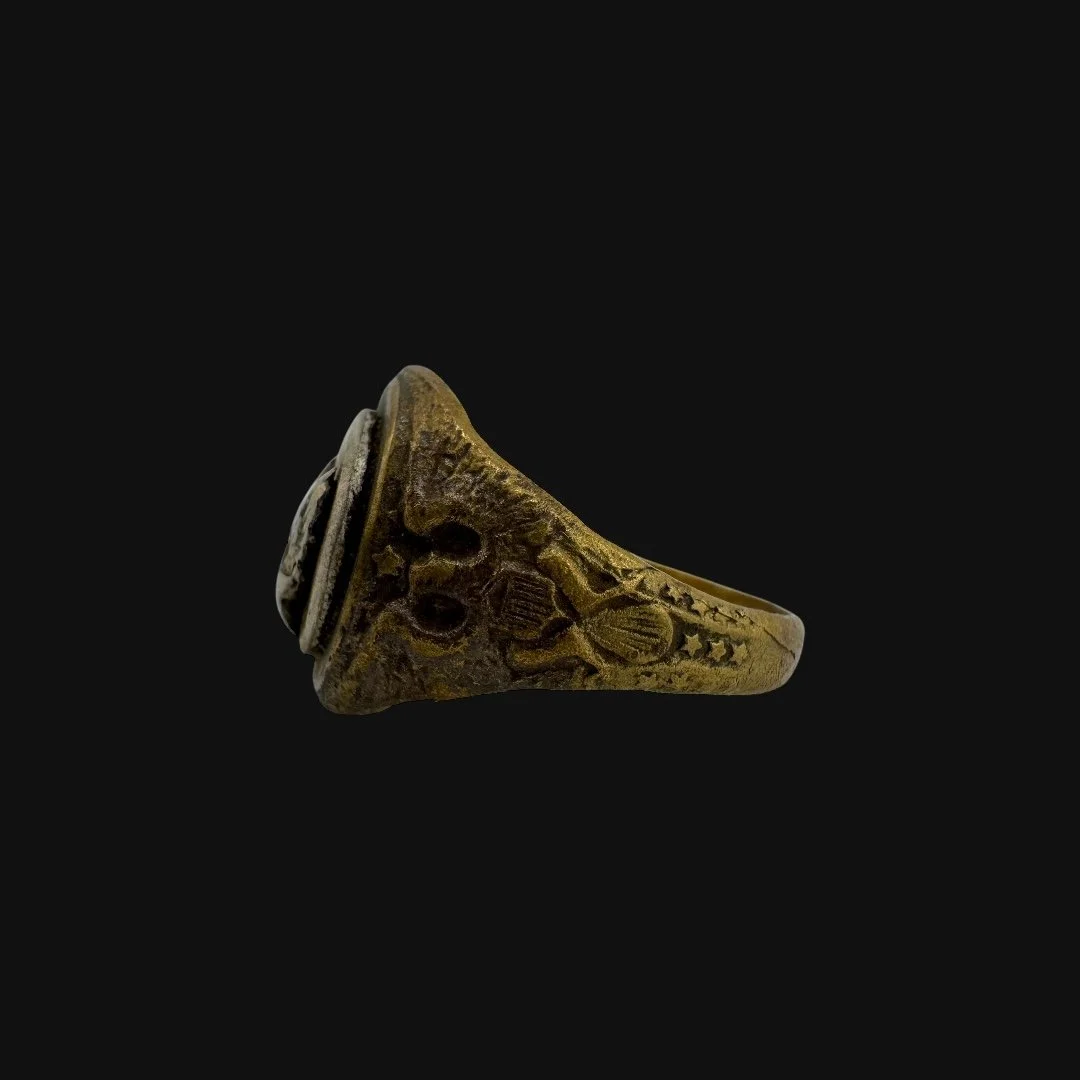 Image 9 of 13
Image 9 of 13

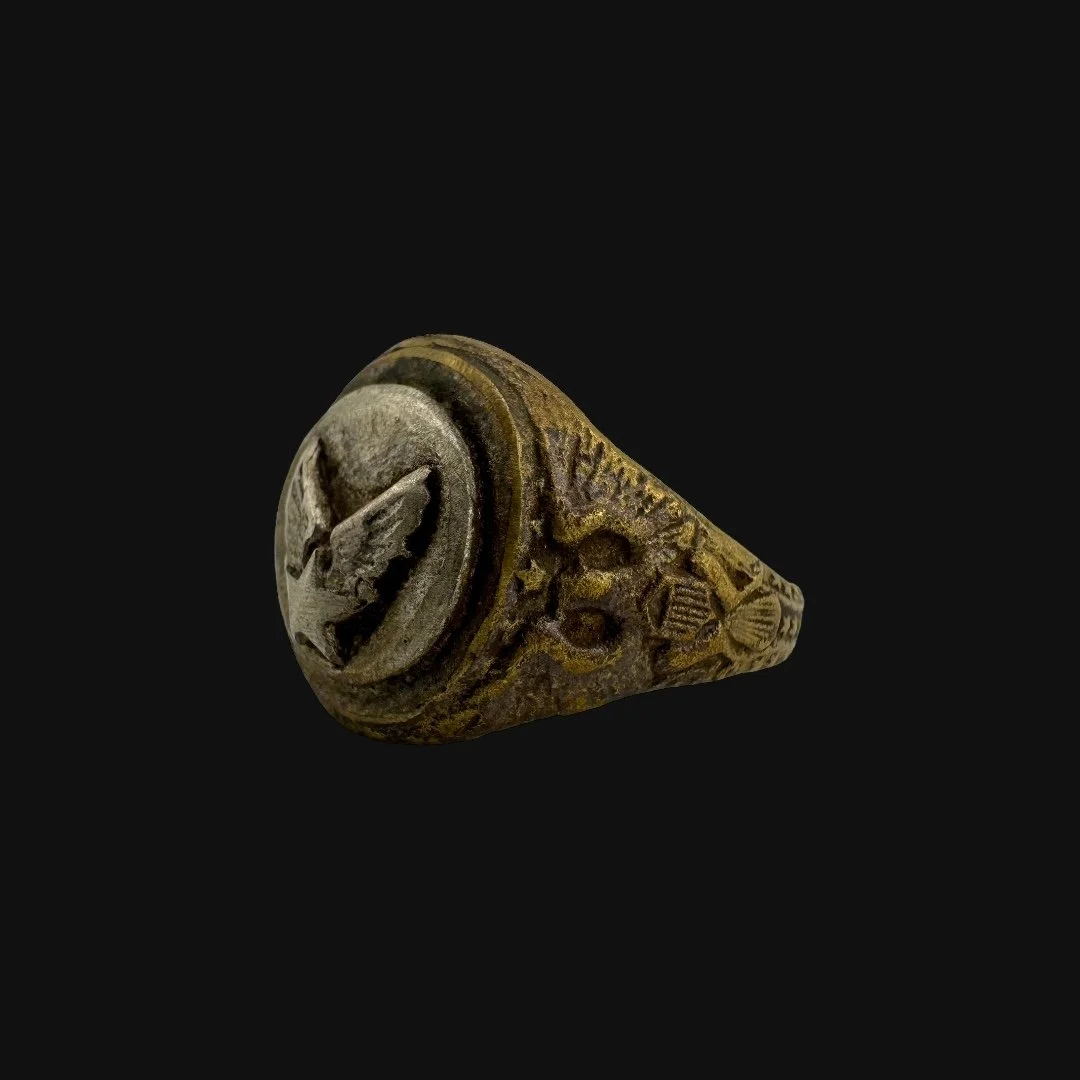 Image 10 of 13
Image 10 of 13

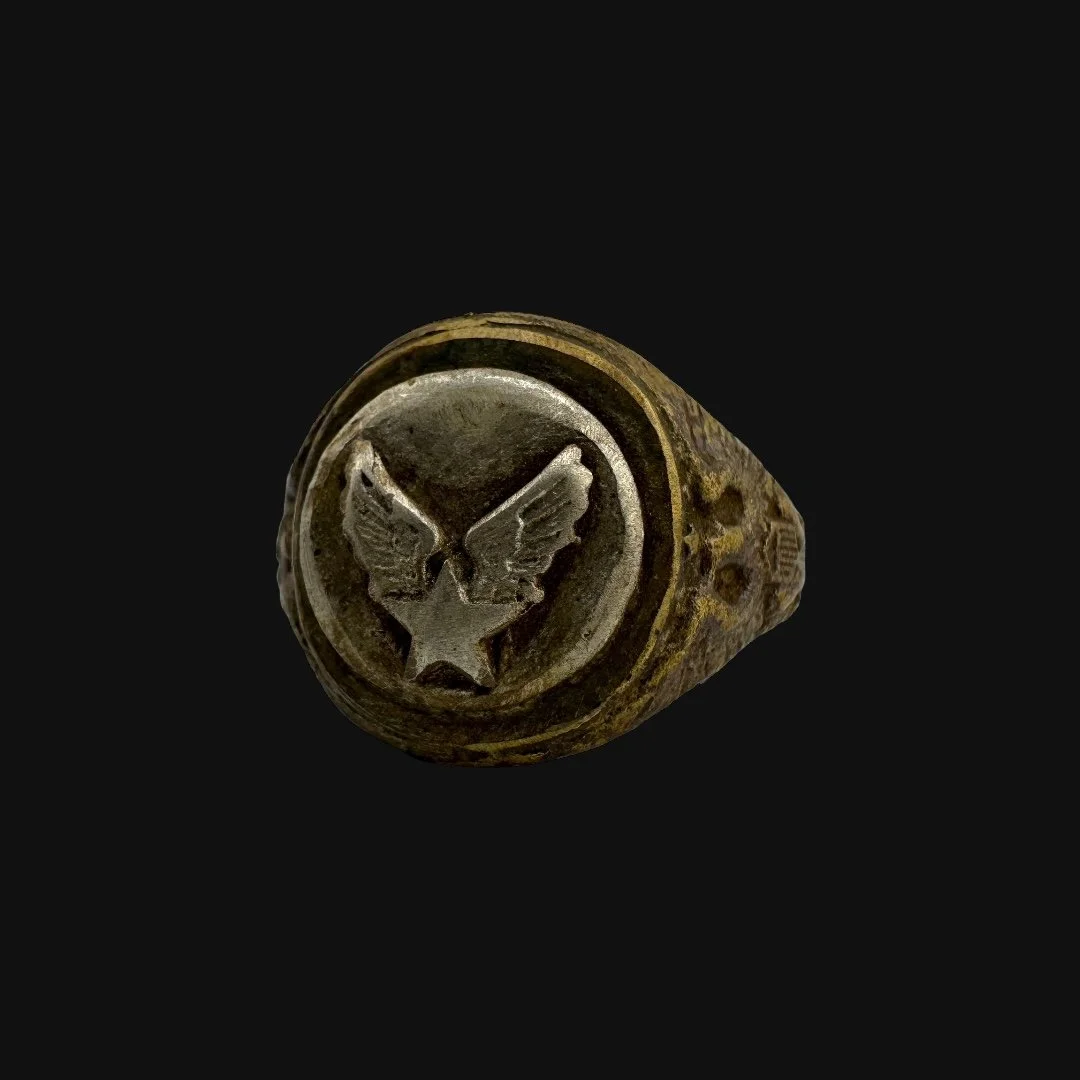 Image 11 of 13
Image 11 of 13

 Image 12 of 13
Image 12 of 13

 Image 13 of 13
Image 13 of 13














Original WWII 1943-1945 U.S. Army “Air Corps” Pilot & Crew Military Ring (Size 11)
Comes with a hand-signed C.O.A. and a full historical research write-up
From: World War II
Branch: U.S. Army (Air Corps)
Dated: 1943-1945
Ring Size: 11 (US)
Material: Bronze & Sterling Silver
Wearable History Collection:
This authentic 1943-1945 WWII-era ring, preserved in its original and unaltered condition, combines exceptional craftsmanship with lasting durability, making it fully suitable for modern wear today. As part of our exclusive World War II “Wearable History Ring Collection,” it offers the rare opportunity to own and wear a genuine piece of World War II. Both a timeless accessory and a tangible link to the past, this truly one-of-a-kind ring stands as a wearable tribute to the courage and sacrifice of a generation.
Historical Significance to the U.S. Army Air Corps During WWII:
The U.S. Army Air Corps, later reorganized into the U.S. Army Air Forces (USAAF), was one of the most decisive elements of World War II. Entering the war in 1941 as a relatively small branch with outdated aircraft, it expanded at astonishing speed. By 1945, it fielded over 2.4 million personnel and more than 80,000 aircraft, making it one of the most powerful air arms in history. Its missions spanned every theater of the war, ranging from strategic bombing campaigns and fighter escort operations to close air support, transport, and airborne assaults, reshaping the nature of modern warfare.
In Europe, the Air Corps became central to the Allied strategy of crippling Germany through strategic bombing. Flying daylight missions with B-17s and B-24s, supported by long-range escorts like the P-51 Mustang, American airmen struck factories, oil refineries, and transportation hubs, gradually breaking Germany’s industrial capacity. These operations came at high cost but paved the way for Allied ground advances. The Air Corps also played a crucial role in Operation Overlord, with transport planes dropping the 82nd and 101st Airborne Divisions into Normandy and bombers softening up coastal defenses. In the Mediterranean, air units supported landings in North Africa, Sicily, and Italy, gaining air superiority while disrupting German supply lines.
In the Pacific, the Air Corps was indispensable in the island-hopping campaign. Aircraft provided close air support at Guadalcanal, the Philippines, and Okinawa, while long-range B-29 Superfortresses based in the Marianas struck Japan directly. The strategic bombing of Japanese cities devastated industry and infrastructure, culminating in the atomic bomb missions over Hiroshima and Nagasaki in August 1945, which directly forced Japan’s surrender. Fighters such as the P-38 Lightning and P-47 Thunderbolt also excelled in tactical missions, strafing Japanese columns and supporting amphibious landings.
The Air Corps also pioneered airborne warfare, with C-47 Skytrains delivering paratroopers during Normandy, Market Garden, and the Rhine crossing. Meanwhile, transport and cargo planes revolutionized logistics by moving troops and supplies across continents. By the war’s end, the Air Corps had destroyed the Luftwaffe, crippled Axis economies, secured Allied invasions, and delivered the weapons that ended the war. Its transformation from a modest branch into a global air power not only ensured victory in WWII but also justified the postwar creation of the U.S. Air Force as an independent service in 1947.
The historical significance of the U.S. Army Air Corps lies in its ability to prove that control of the skies could decide the outcome of wars. It was the force that carried Allied strategy into enemy territory, protected ground troops from above, and brought the war to a close in Japan. In doing so, it redefined the role of airpower and left a legacy of innovation, sacrifice, and dominance that shaped the modern American military.
The Legacy Within This Ring:
This original World War II U.S. Army Air Corps ring is a rare and personal artifact, privately commissioned by a wartime airman who served in America’s skies during the world’s most decisive conflict. Bearing the proud star and wings emblem on its front, the ring allowed its owner to carry the identity of his service not only on his uniform but also as a lasting symbol worn daily on his hand. For the men who flew long missions over Europe and the Pacific whether in B-17s and B-24s braving flak and fighters, P-51s escorting bombers deep into enemy territory, or C-47s dropping paratroopers behind the lines—such rings were more than jewelry. They were reminders of duty, sacrifice, and the unshakable brotherhood of the airmen who lived and fought together above the clouds of war. Every engraved detail reflects the pride these men carried in their calling, where danger was constant and missions often meant heavy losses. The star and wings stood as a symbol of courage, precision, and the promise of American airpower that helped turn the tide of the war. Today, this ring endures as a wearable relic of the Air Corps’ legacy, representing not only the daring of those who took flight against the Axis powers but also the enduring spirit of innovation, resilience, and camaraderie that defined the U.S. Army Air Corps in World War II. It remains a tribute to the men who carried their emblem into the skies, knowing their courage would help secure victory and shape the future of modern warfare.
Comes with a hand-signed C.O.A. and a full historical research write-up
From: World War II
Branch: U.S. Army (Air Corps)
Dated: 1943-1945
Ring Size: 11 (US)
Material: Bronze & Sterling Silver
Wearable History Collection:
This authentic 1943-1945 WWII-era ring, preserved in its original and unaltered condition, combines exceptional craftsmanship with lasting durability, making it fully suitable for modern wear today. As part of our exclusive World War II “Wearable History Ring Collection,” it offers the rare opportunity to own and wear a genuine piece of World War II. Both a timeless accessory and a tangible link to the past, this truly one-of-a-kind ring stands as a wearable tribute to the courage and sacrifice of a generation.
Historical Significance to the U.S. Army Air Corps During WWII:
The U.S. Army Air Corps, later reorganized into the U.S. Army Air Forces (USAAF), was one of the most decisive elements of World War II. Entering the war in 1941 as a relatively small branch with outdated aircraft, it expanded at astonishing speed. By 1945, it fielded over 2.4 million personnel and more than 80,000 aircraft, making it one of the most powerful air arms in history. Its missions spanned every theater of the war, ranging from strategic bombing campaigns and fighter escort operations to close air support, transport, and airborne assaults, reshaping the nature of modern warfare.
In Europe, the Air Corps became central to the Allied strategy of crippling Germany through strategic bombing. Flying daylight missions with B-17s and B-24s, supported by long-range escorts like the P-51 Mustang, American airmen struck factories, oil refineries, and transportation hubs, gradually breaking Germany’s industrial capacity. These operations came at high cost but paved the way for Allied ground advances. The Air Corps also played a crucial role in Operation Overlord, with transport planes dropping the 82nd and 101st Airborne Divisions into Normandy and bombers softening up coastal defenses. In the Mediterranean, air units supported landings in North Africa, Sicily, and Italy, gaining air superiority while disrupting German supply lines.
In the Pacific, the Air Corps was indispensable in the island-hopping campaign. Aircraft provided close air support at Guadalcanal, the Philippines, and Okinawa, while long-range B-29 Superfortresses based in the Marianas struck Japan directly. The strategic bombing of Japanese cities devastated industry and infrastructure, culminating in the atomic bomb missions over Hiroshima and Nagasaki in August 1945, which directly forced Japan’s surrender. Fighters such as the P-38 Lightning and P-47 Thunderbolt also excelled in tactical missions, strafing Japanese columns and supporting amphibious landings.
The Air Corps also pioneered airborne warfare, with C-47 Skytrains delivering paratroopers during Normandy, Market Garden, and the Rhine crossing. Meanwhile, transport and cargo planes revolutionized logistics by moving troops and supplies across continents. By the war’s end, the Air Corps had destroyed the Luftwaffe, crippled Axis economies, secured Allied invasions, and delivered the weapons that ended the war. Its transformation from a modest branch into a global air power not only ensured victory in WWII but also justified the postwar creation of the U.S. Air Force as an independent service in 1947.
The historical significance of the U.S. Army Air Corps lies in its ability to prove that control of the skies could decide the outcome of wars. It was the force that carried Allied strategy into enemy territory, protected ground troops from above, and brought the war to a close in Japan. In doing so, it redefined the role of airpower and left a legacy of innovation, sacrifice, and dominance that shaped the modern American military.
The Legacy Within This Ring:
This original World War II U.S. Army Air Corps ring is a rare and personal artifact, privately commissioned by a wartime airman who served in America’s skies during the world’s most decisive conflict. Bearing the proud star and wings emblem on its front, the ring allowed its owner to carry the identity of his service not only on his uniform but also as a lasting symbol worn daily on his hand. For the men who flew long missions over Europe and the Pacific whether in B-17s and B-24s braving flak and fighters, P-51s escorting bombers deep into enemy territory, or C-47s dropping paratroopers behind the lines—such rings were more than jewelry. They were reminders of duty, sacrifice, and the unshakable brotherhood of the airmen who lived and fought together above the clouds of war. Every engraved detail reflects the pride these men carried in their calling, where danger was constant and missions often meant heavy losses. The star and wings stood as a symbol of courage, precision, and the promise of American airpower that helped turn the tide of the war. Today, this ring endures as a wearable relic of the Air Corps’ legacy, representing not only the daring of those who took flight against the Axis powers but also the enduring spirit of innovation, resilience, and camaraderie that defined the U.S. Army Air Corps in World War II. It remains a tribute to the men who carried their emblem into the skies, knowing their courage would help secure victory and shape the future of modern warfare.
